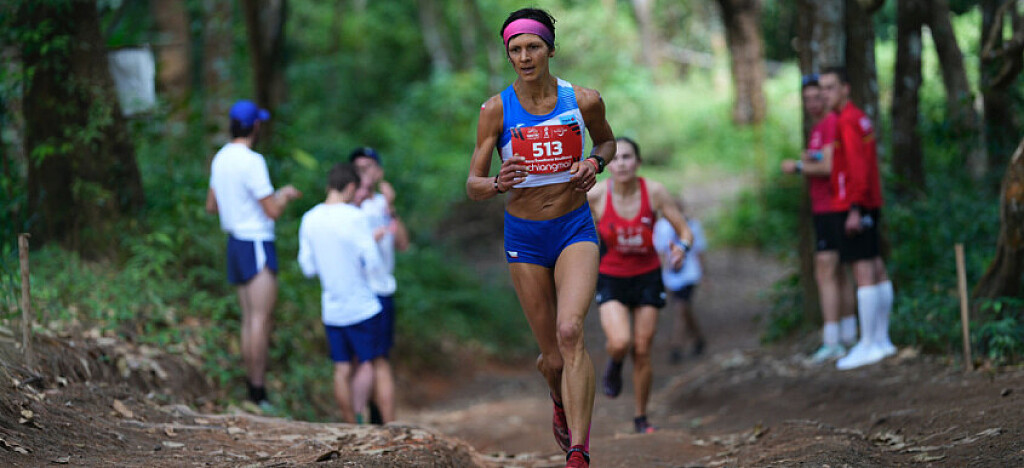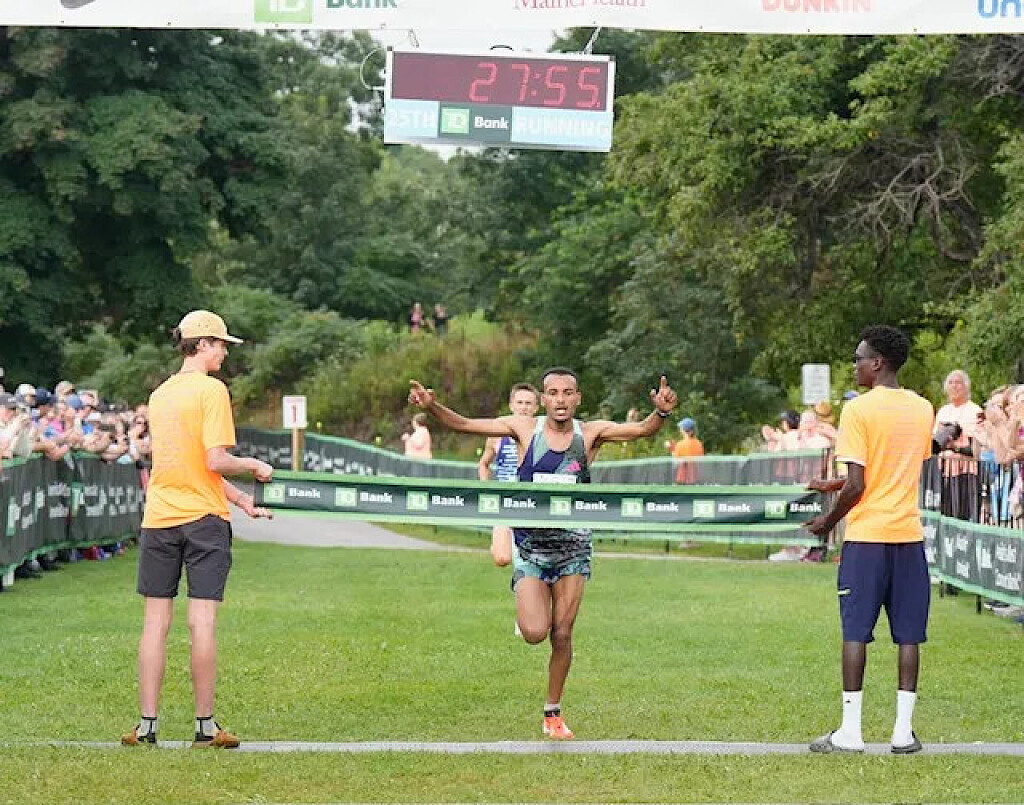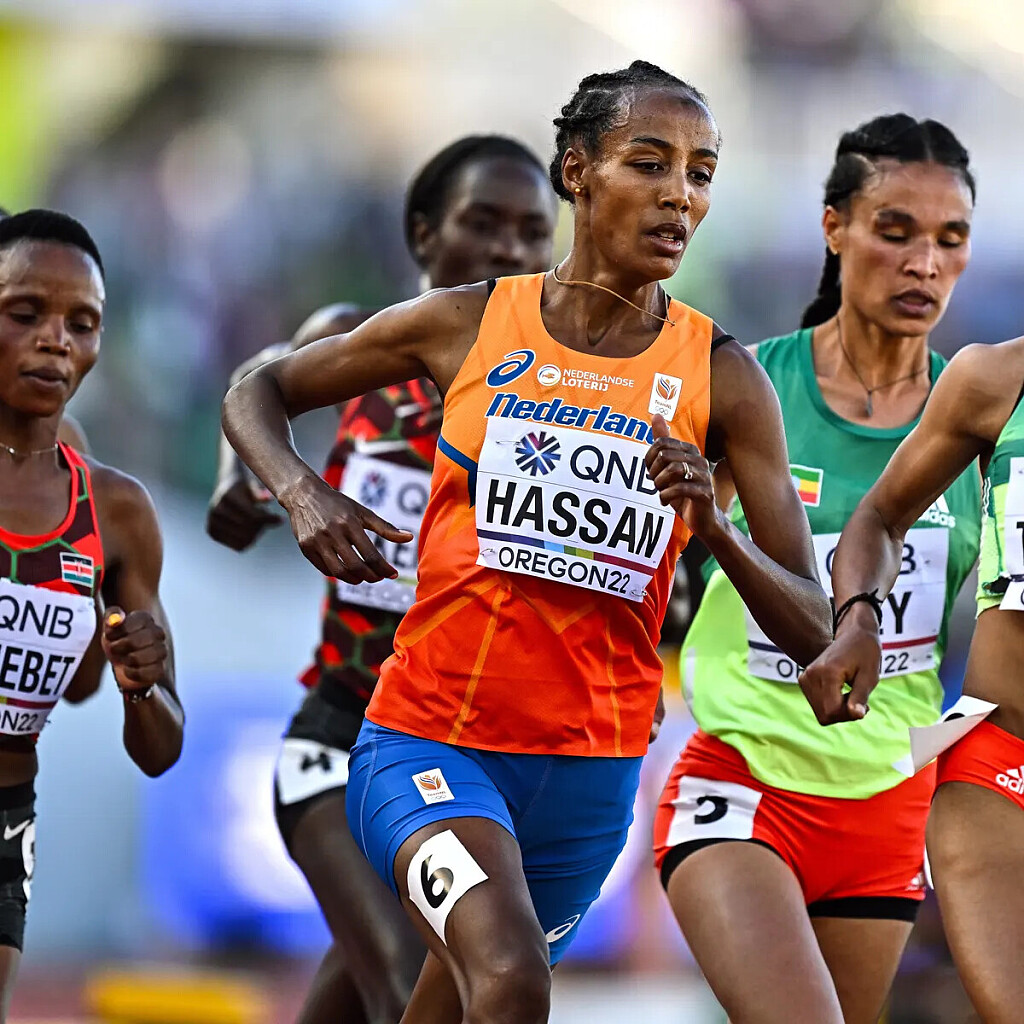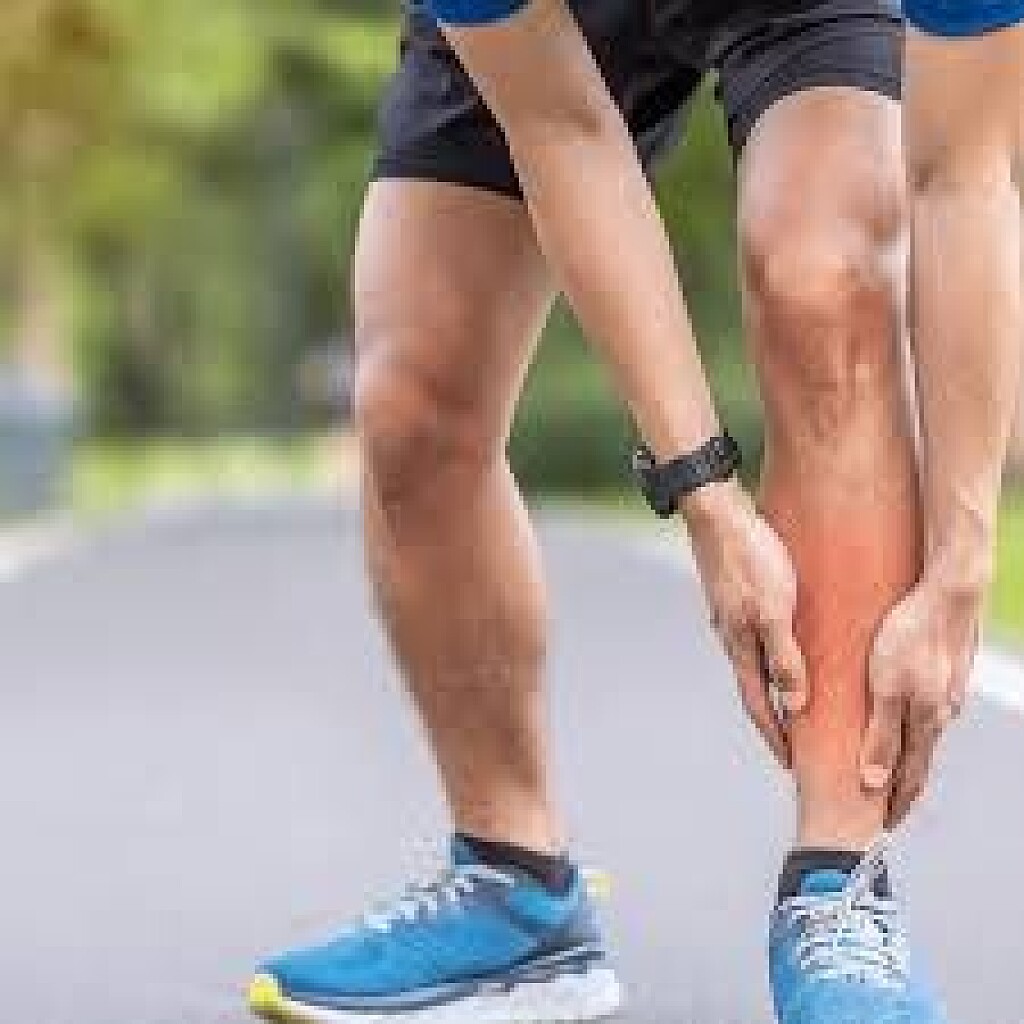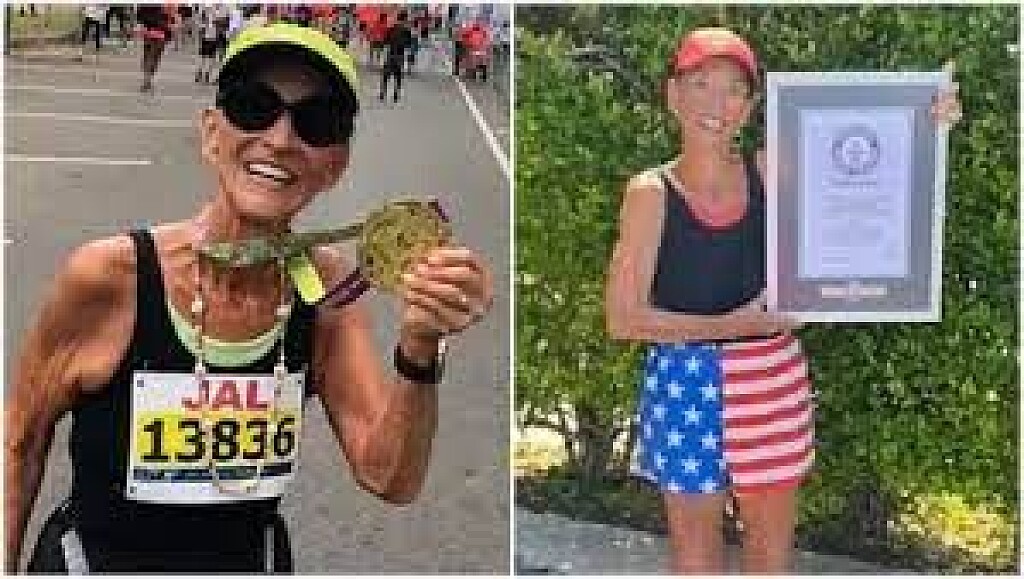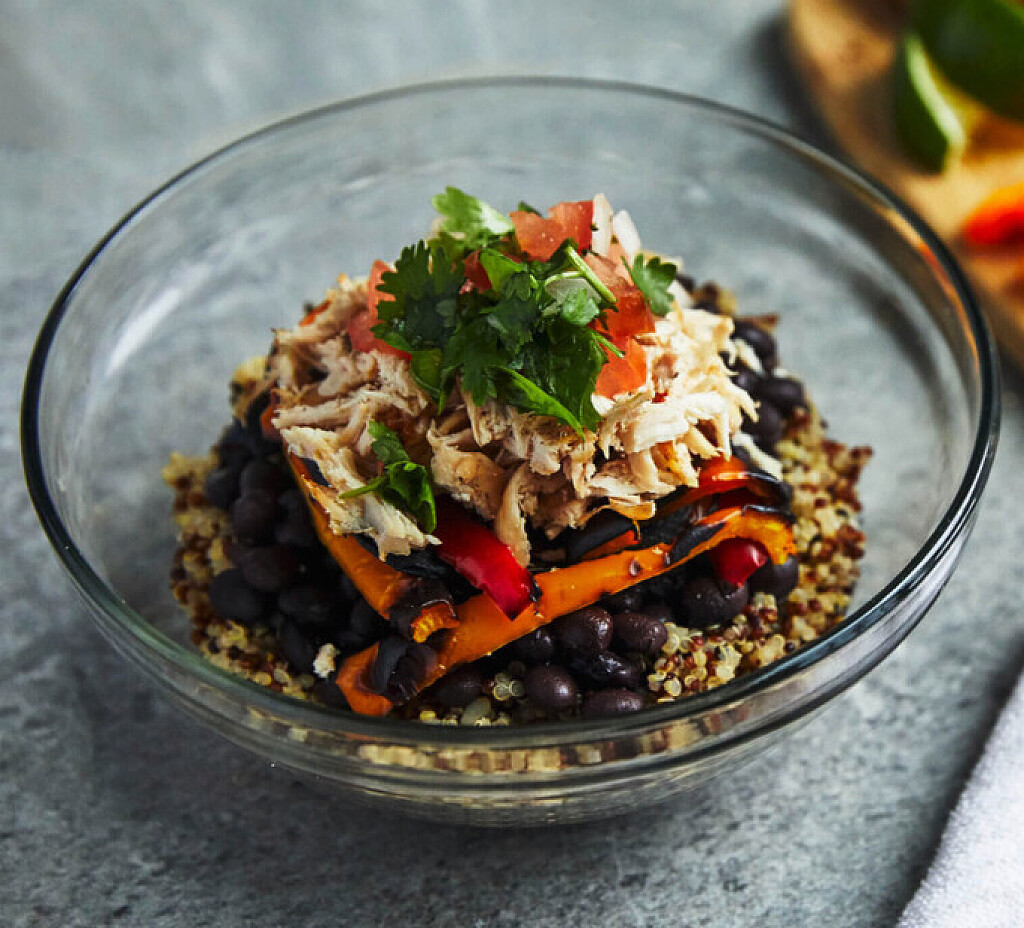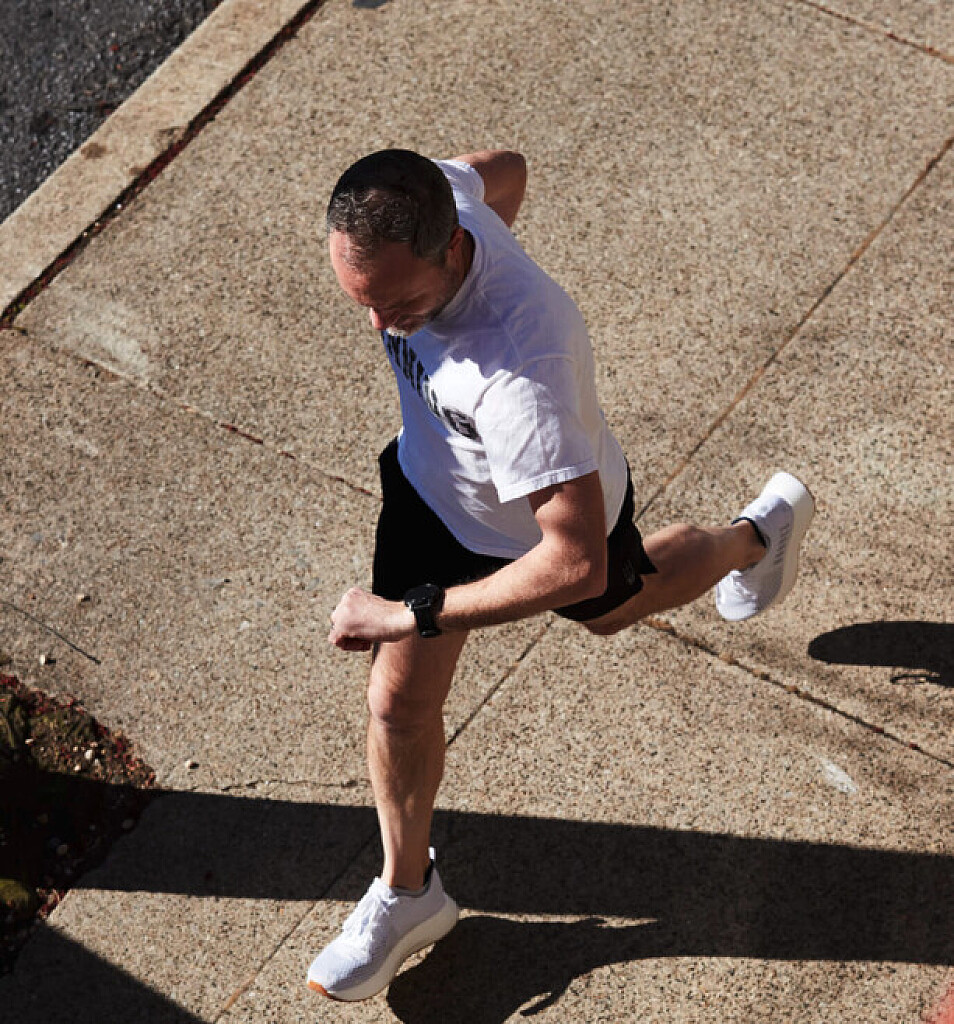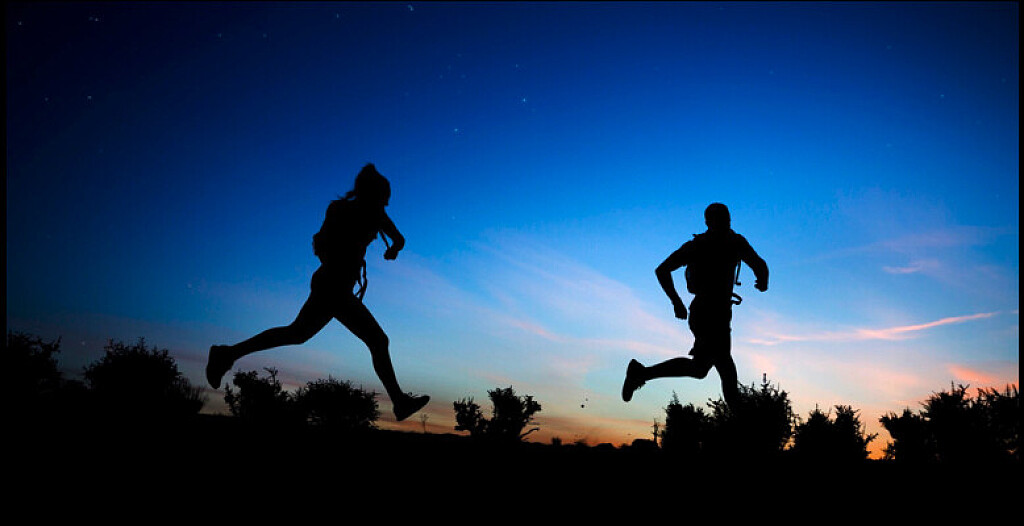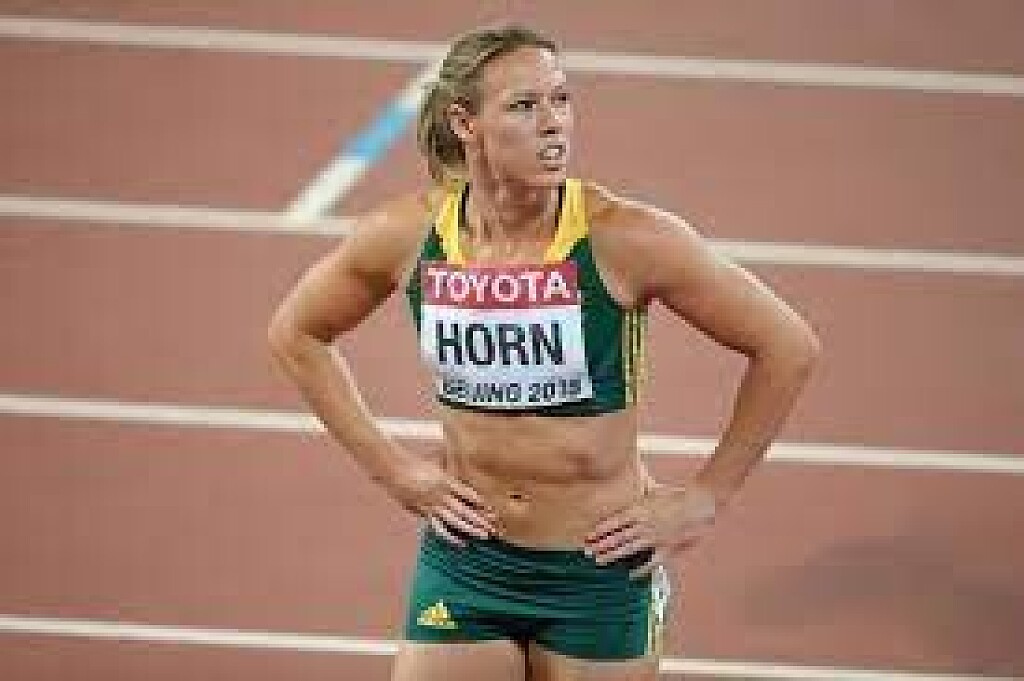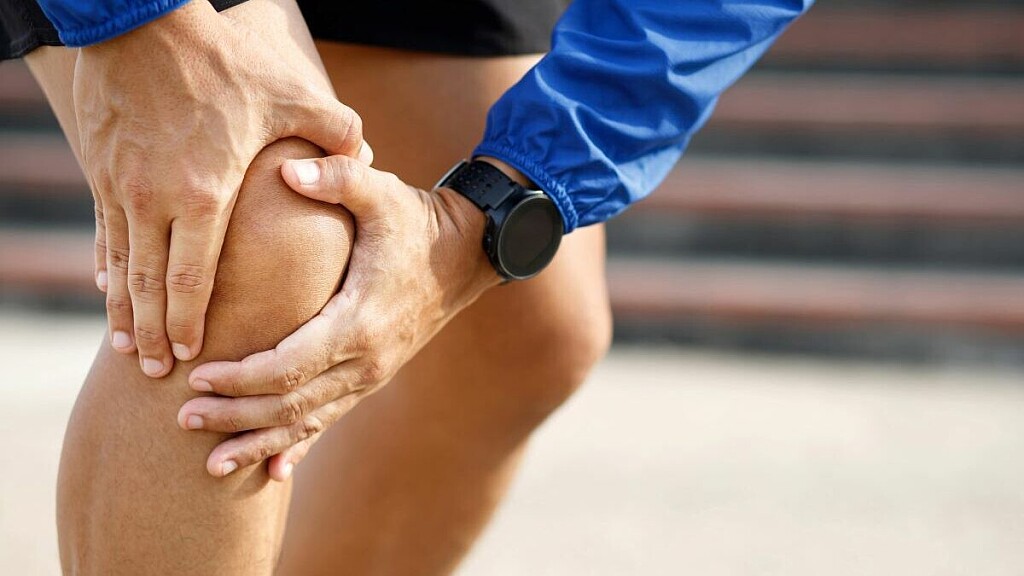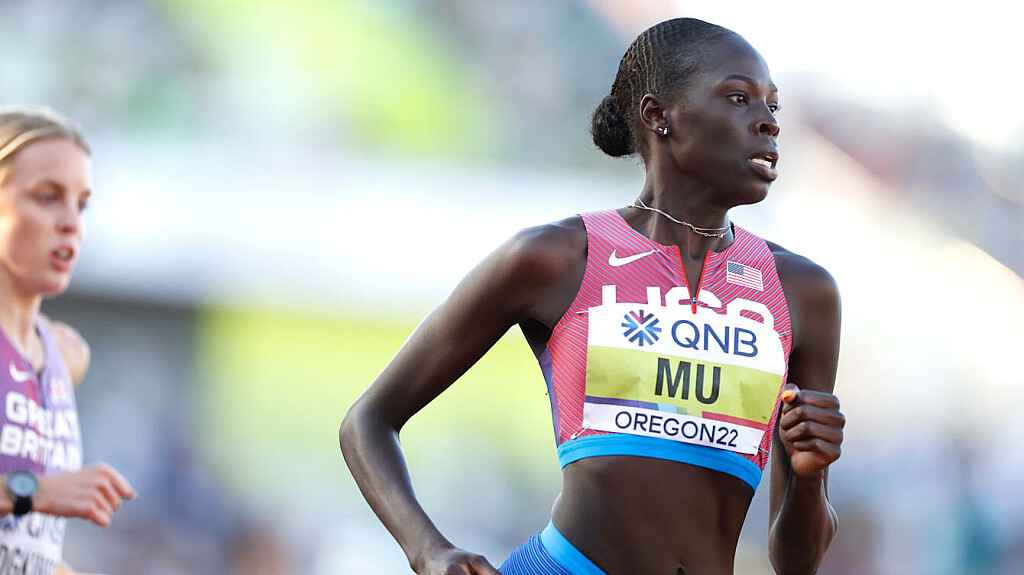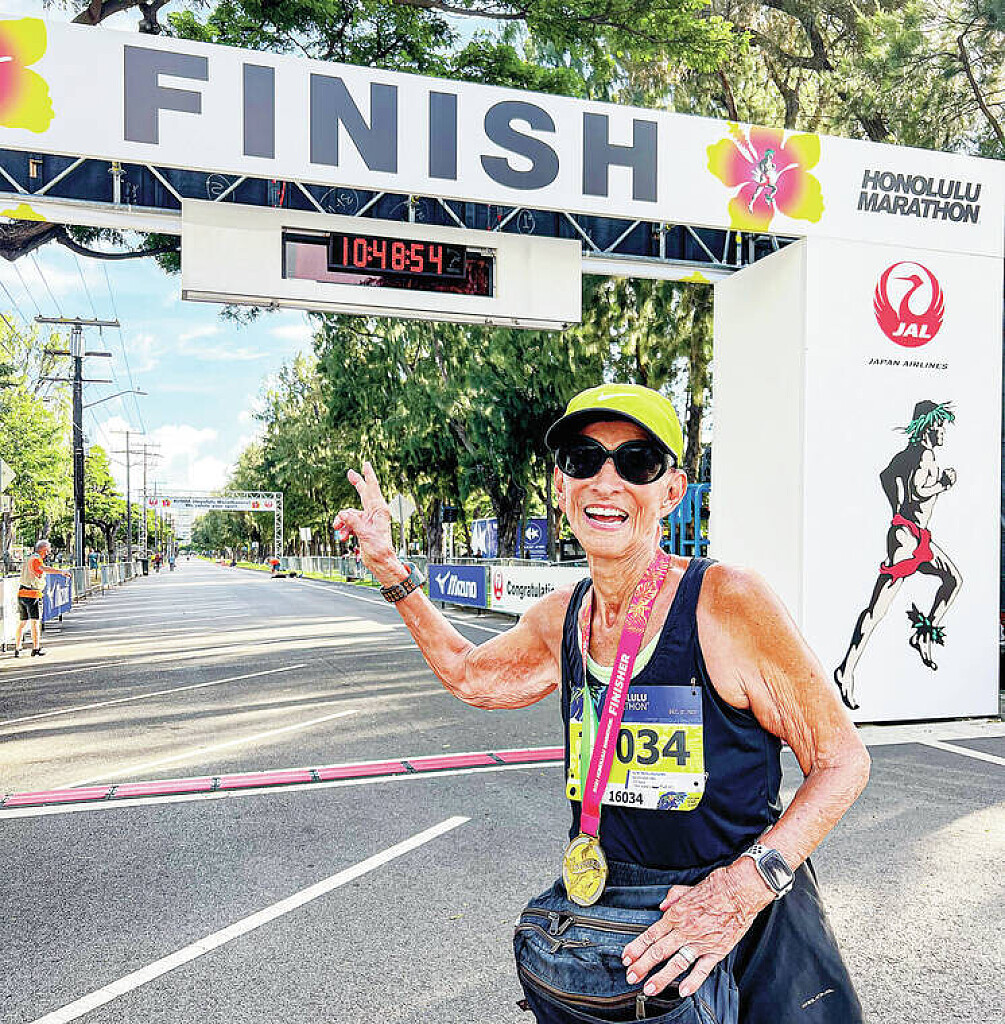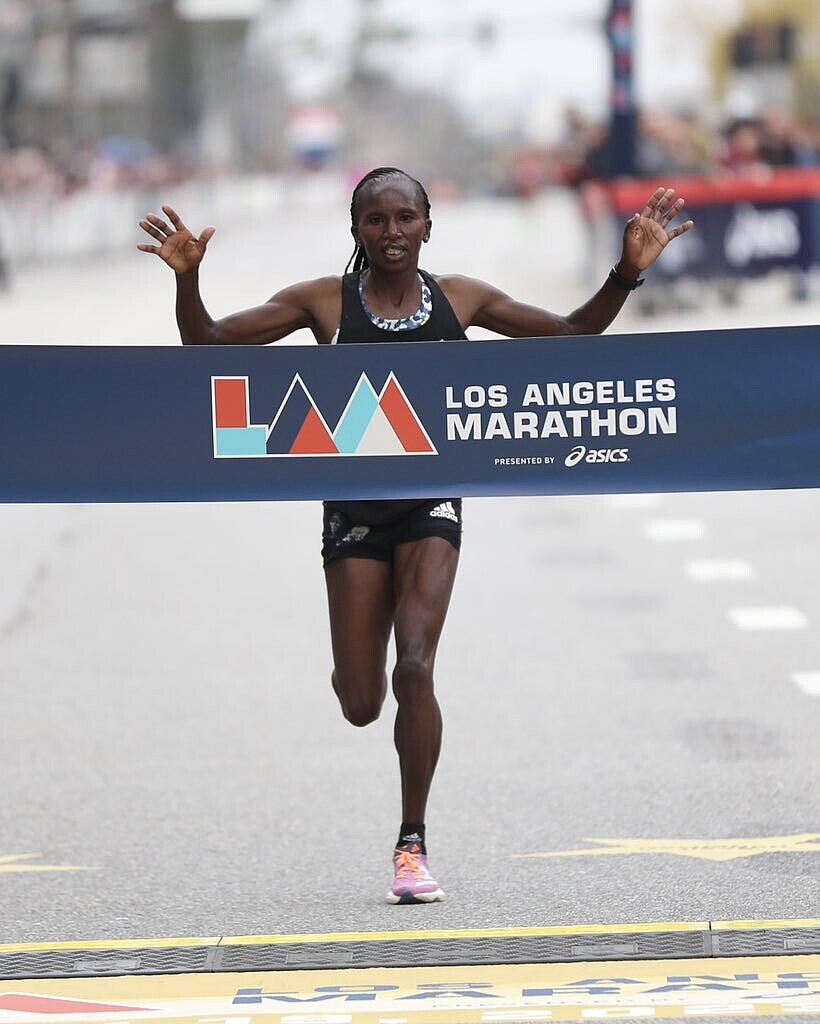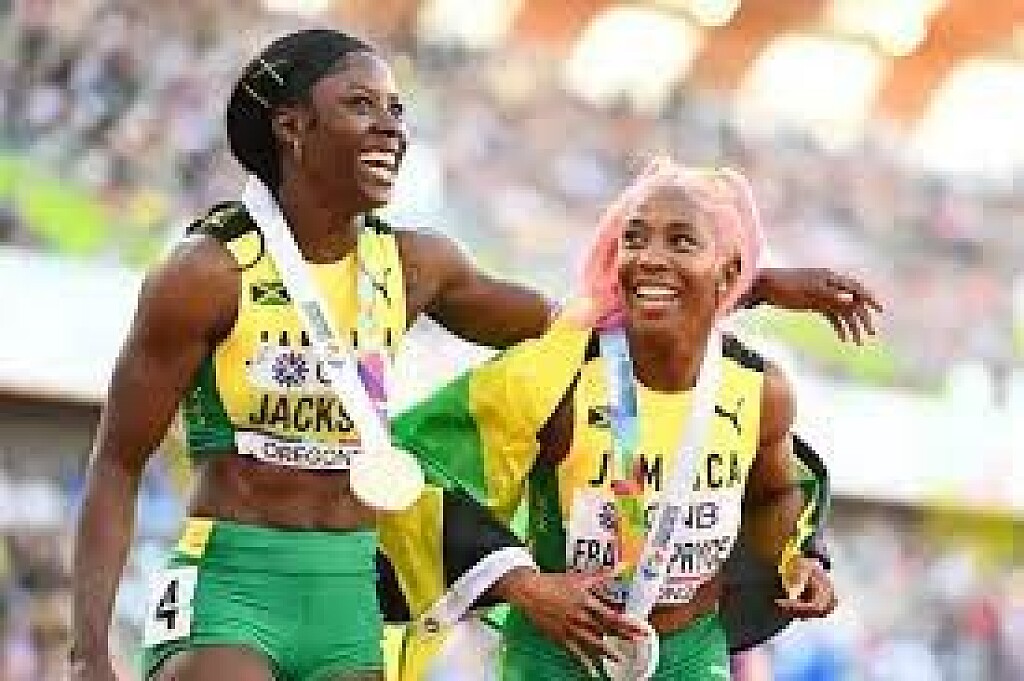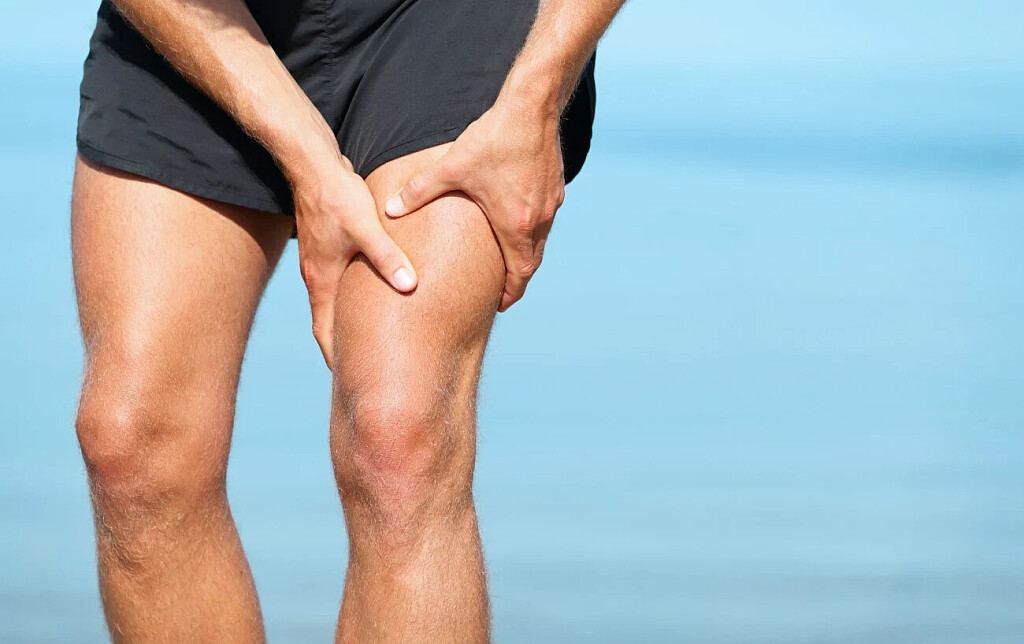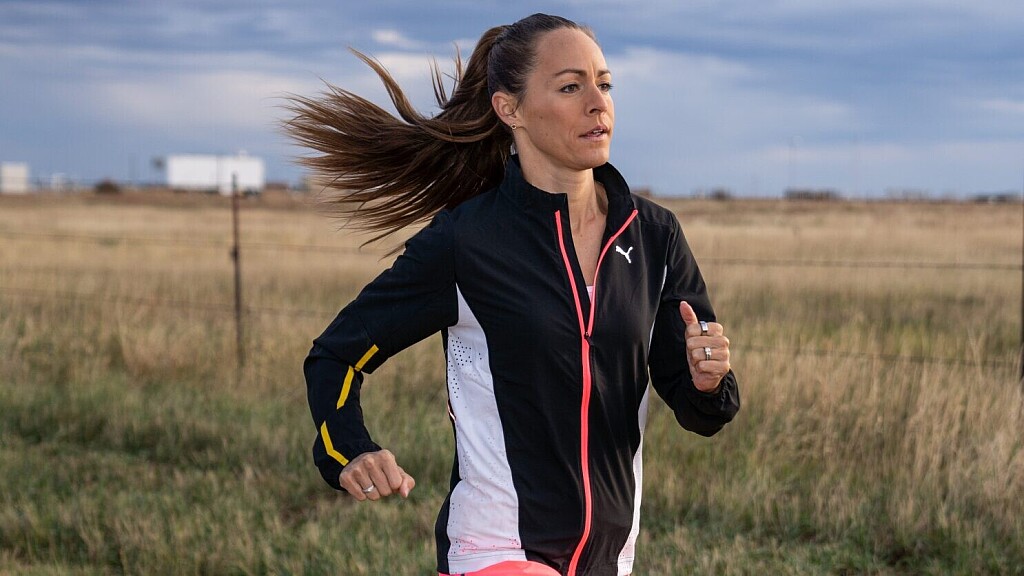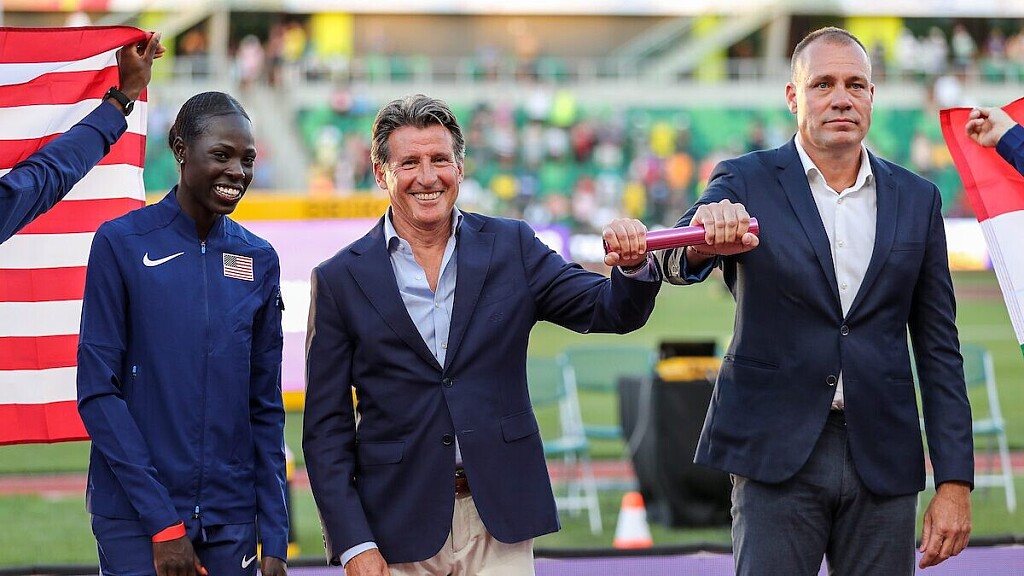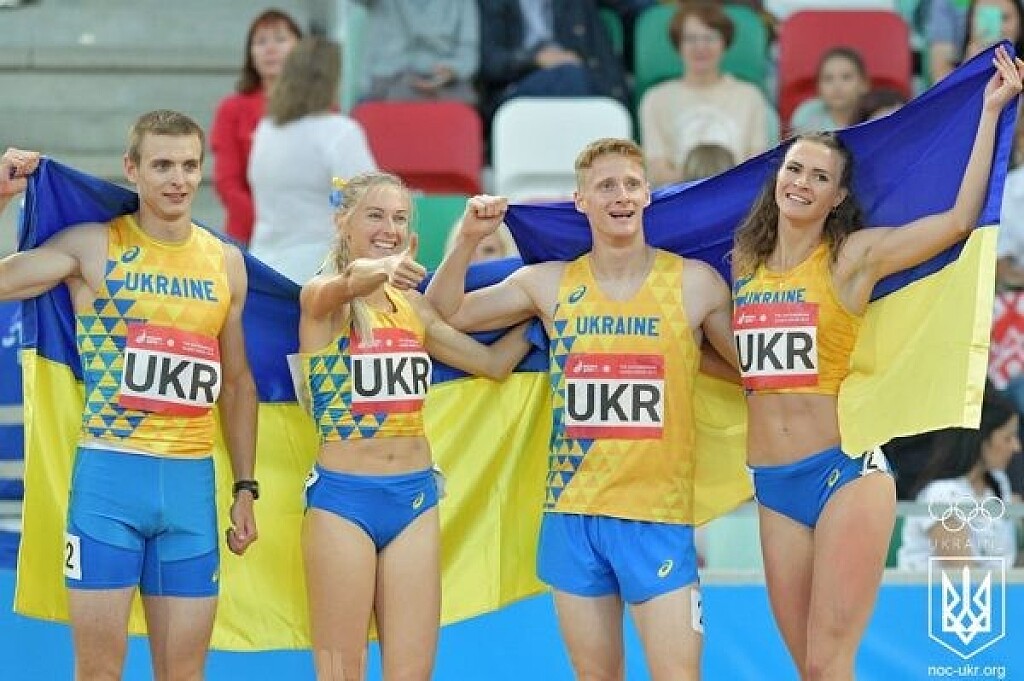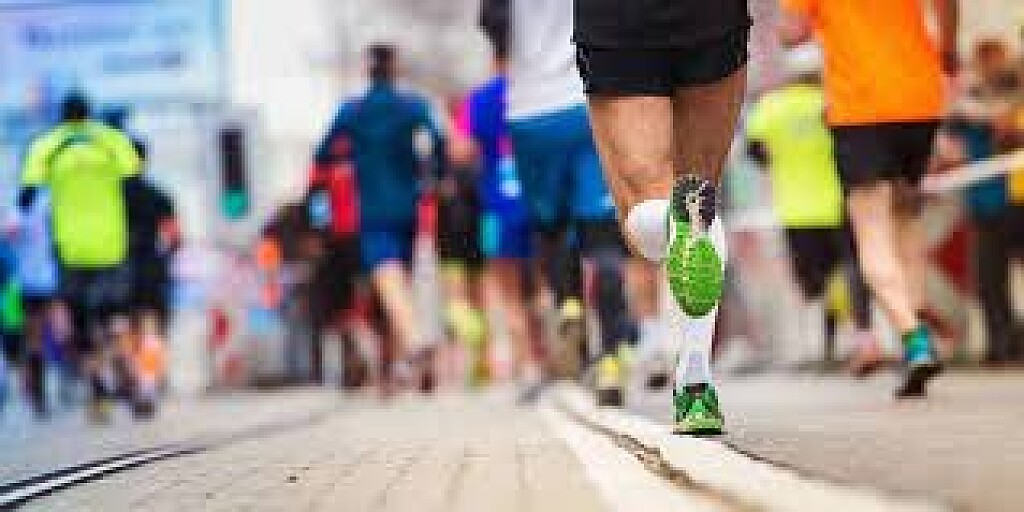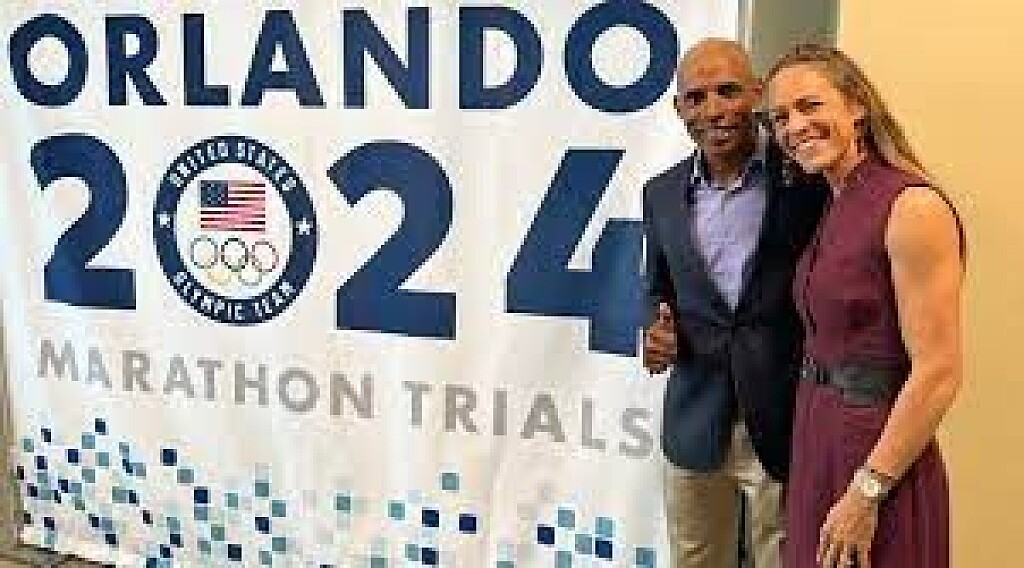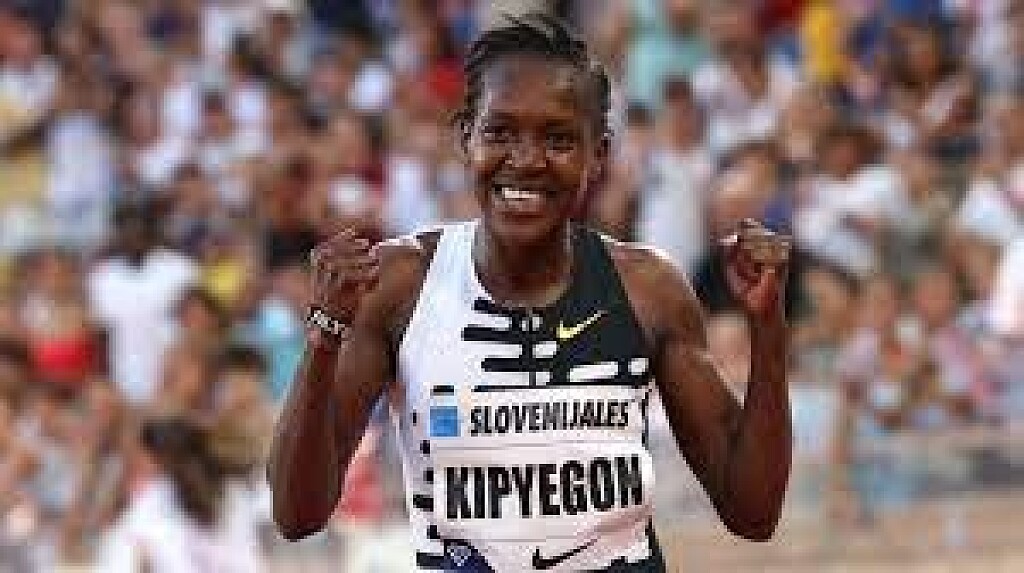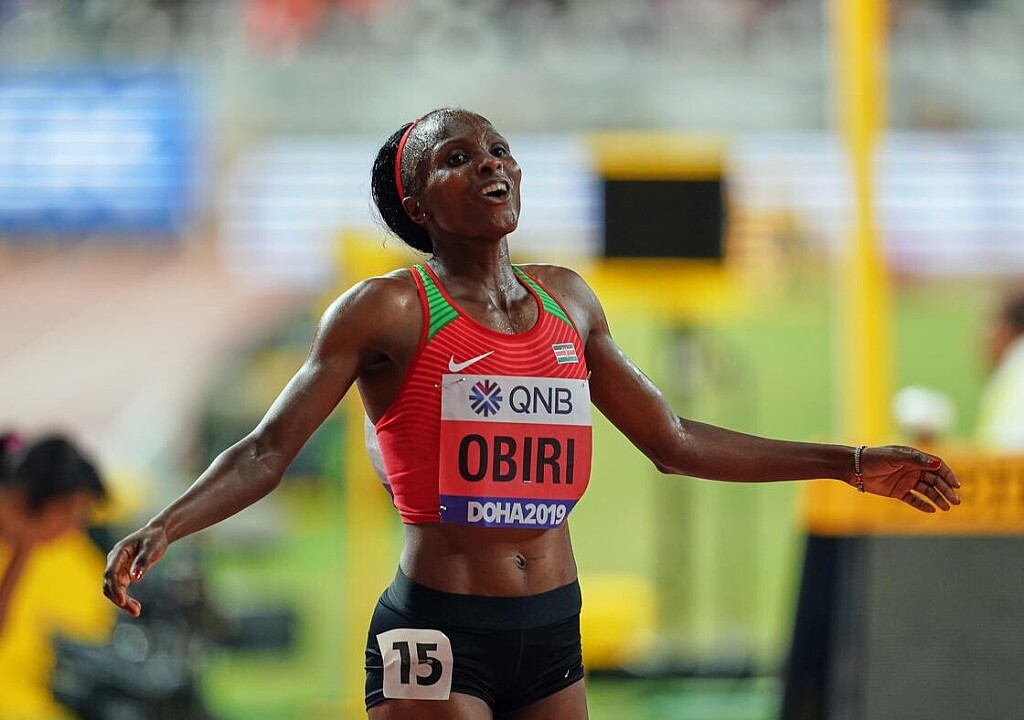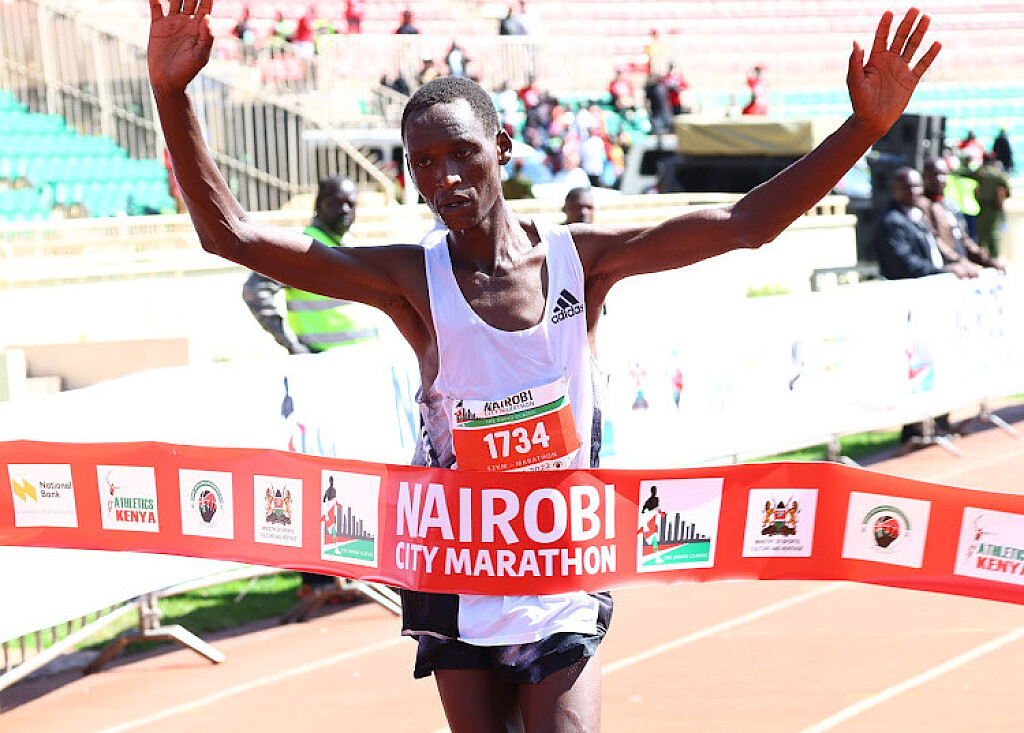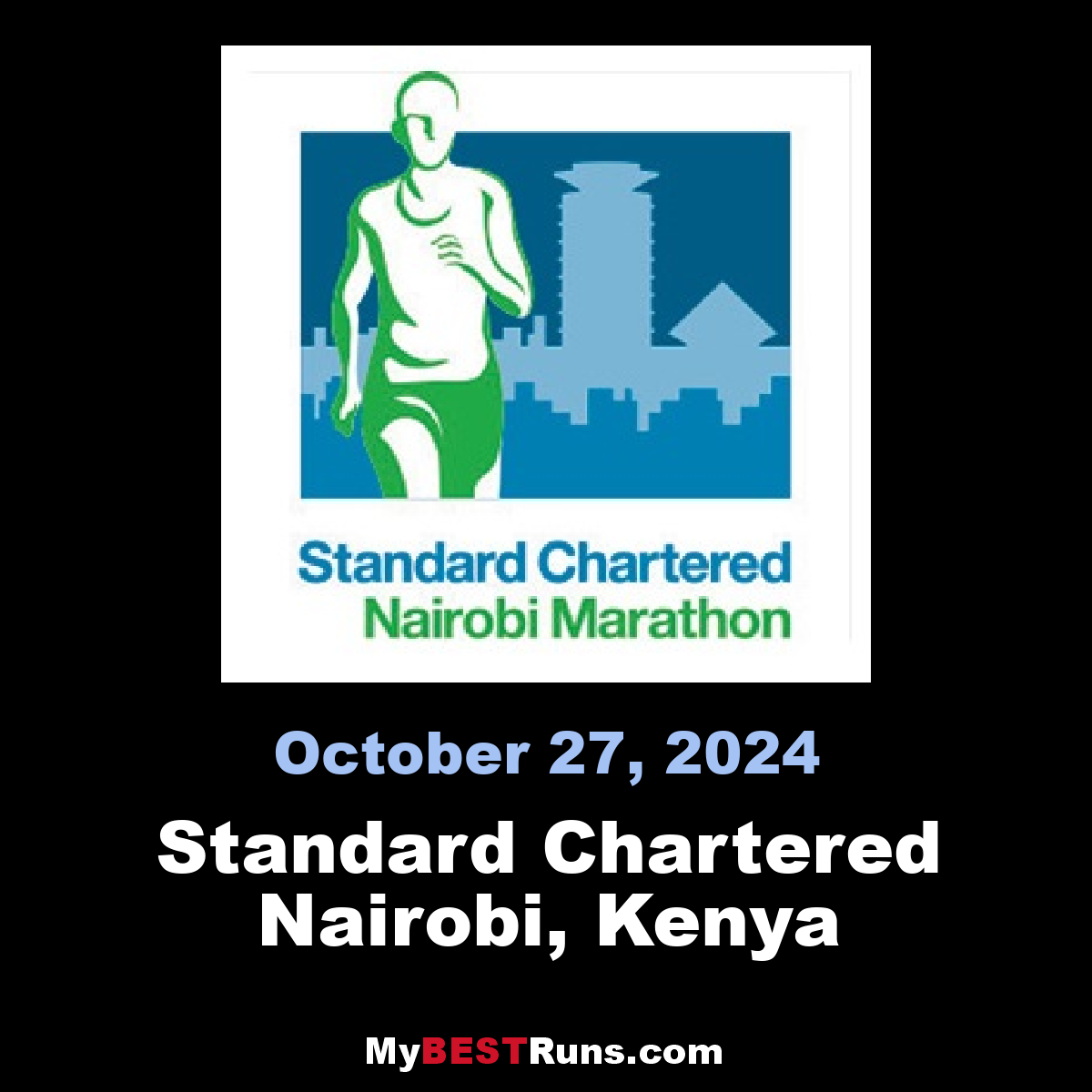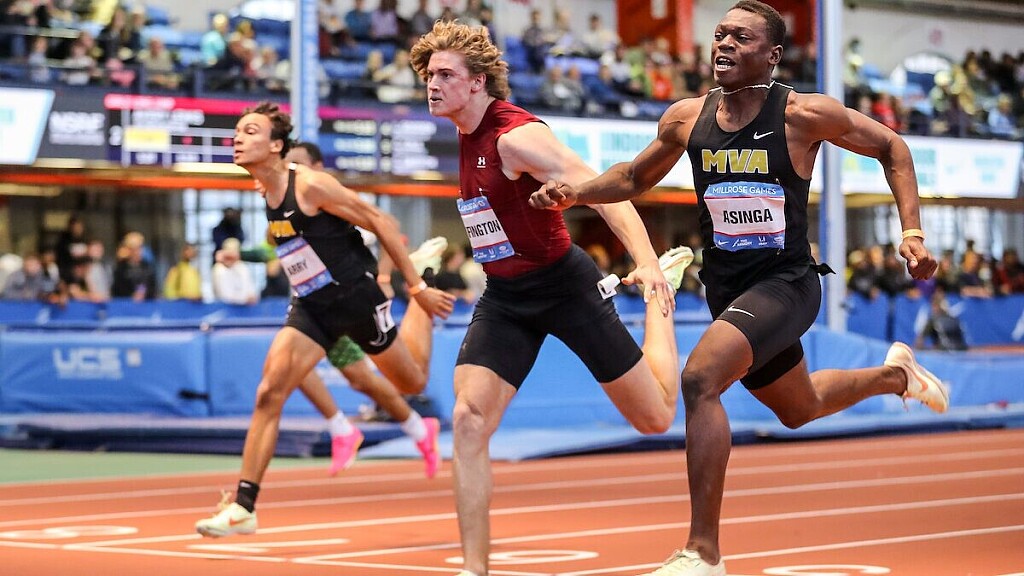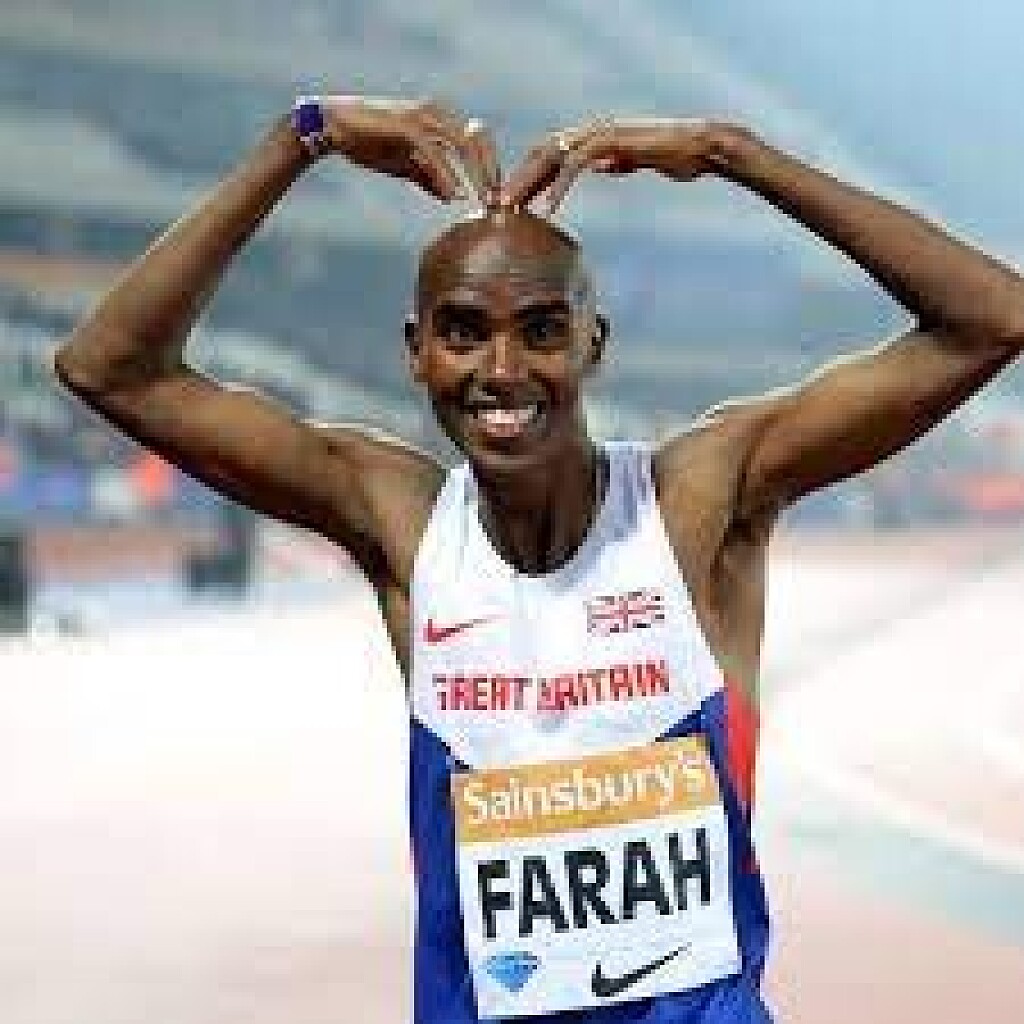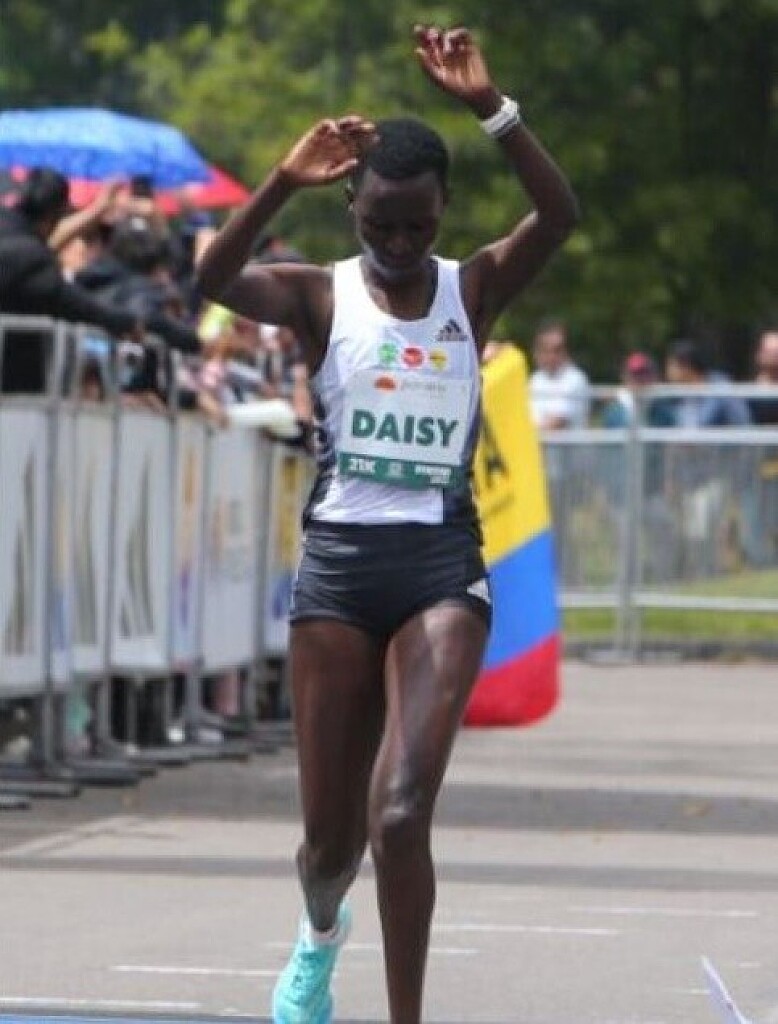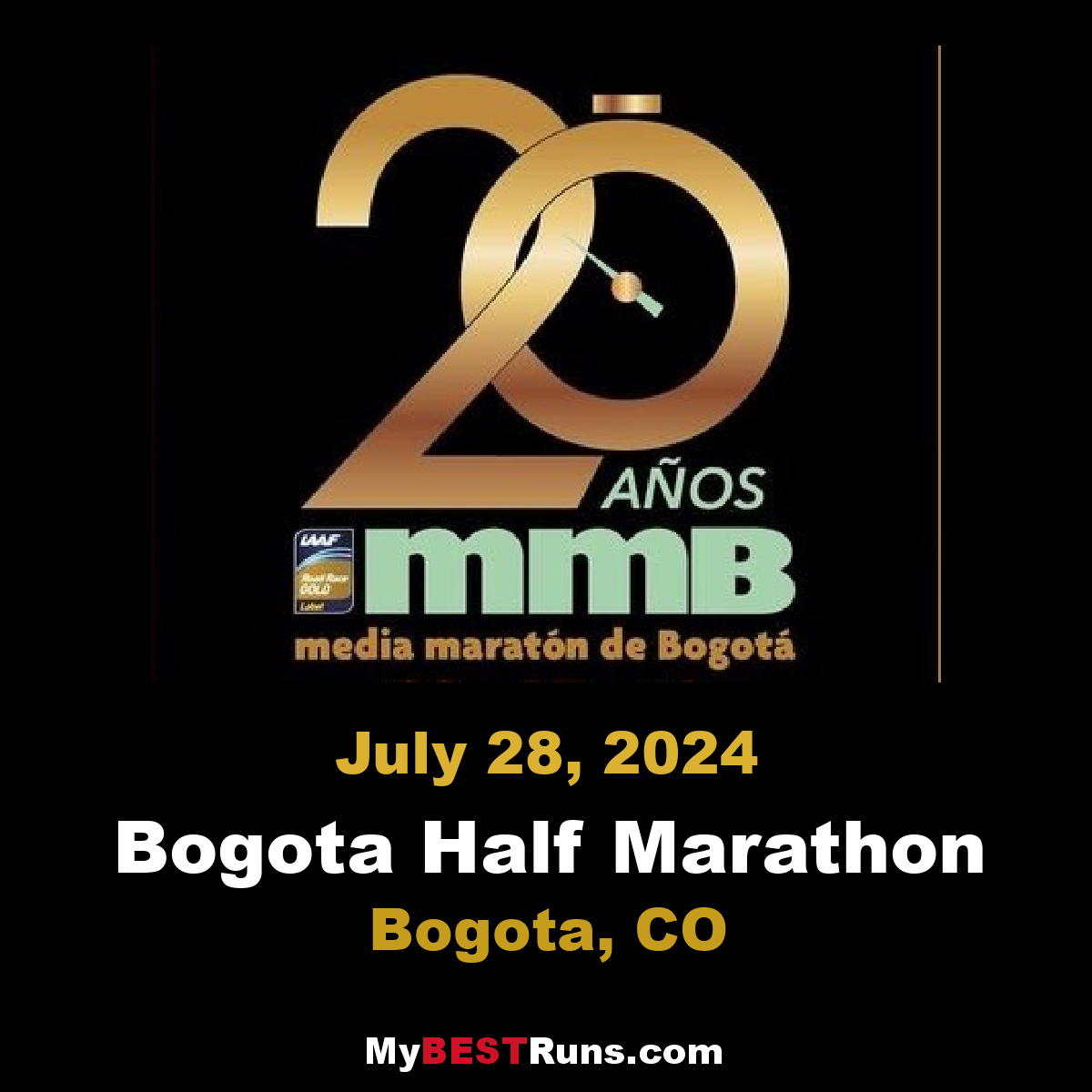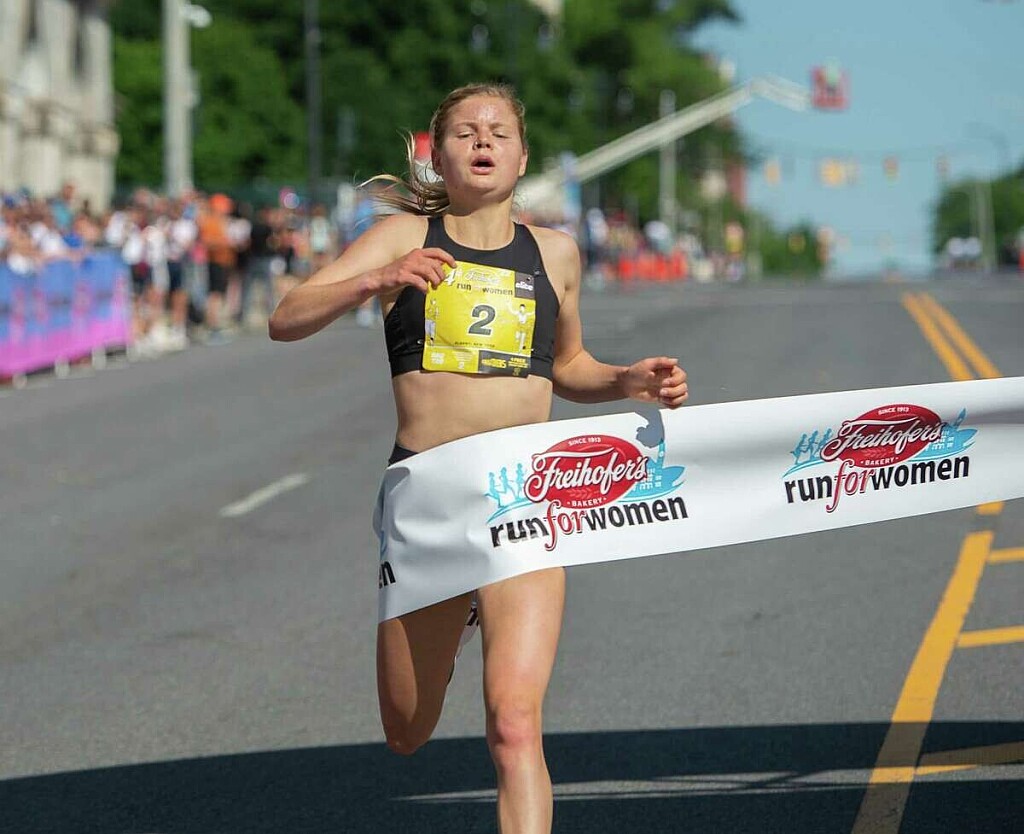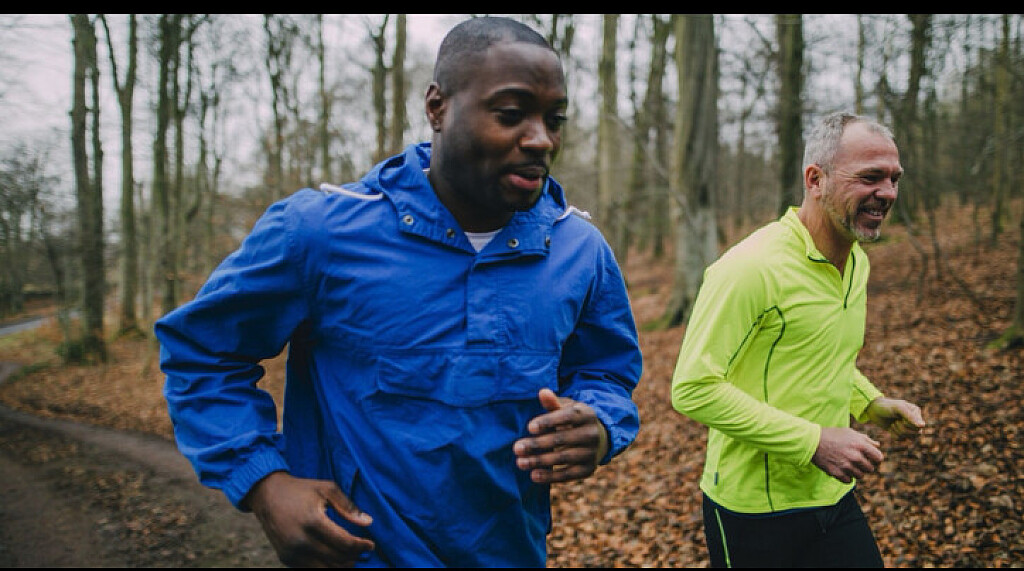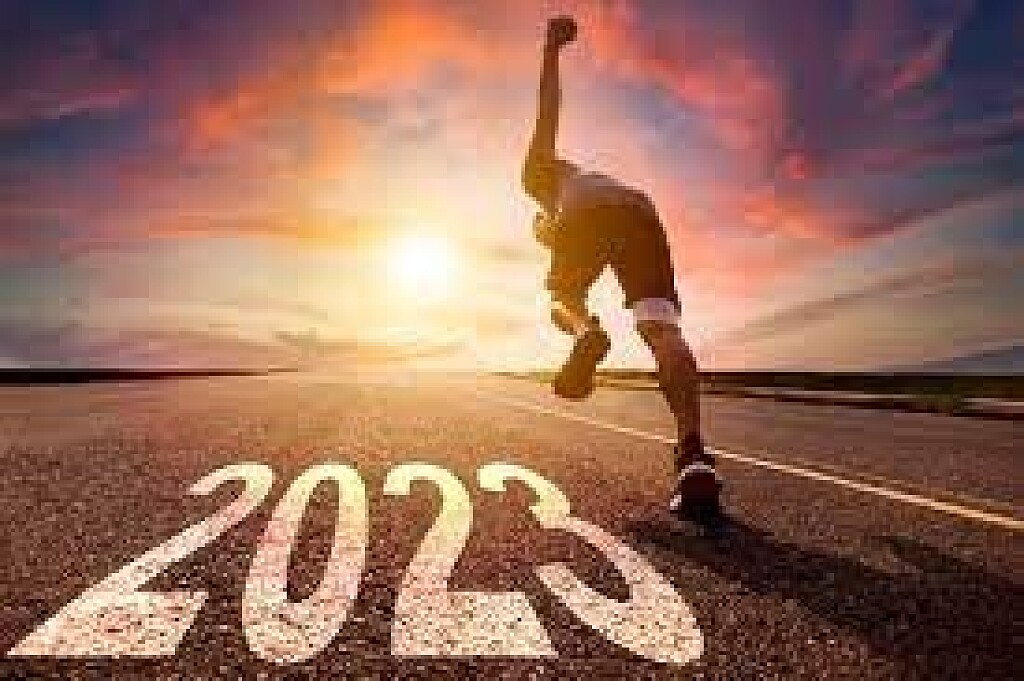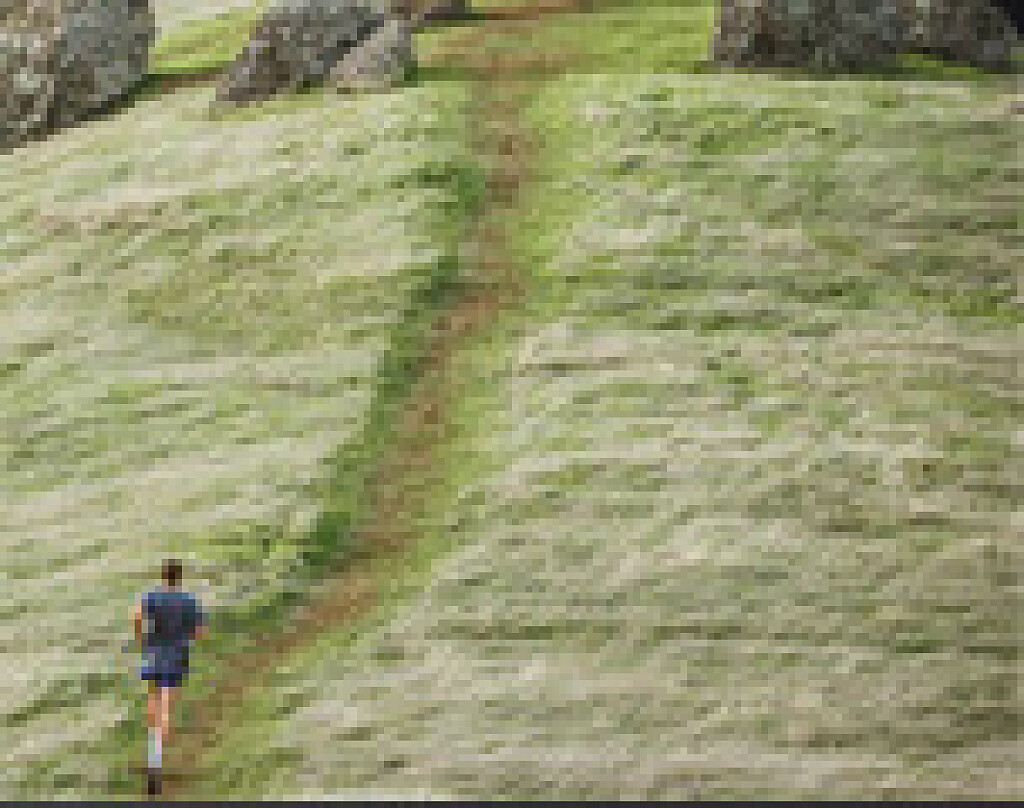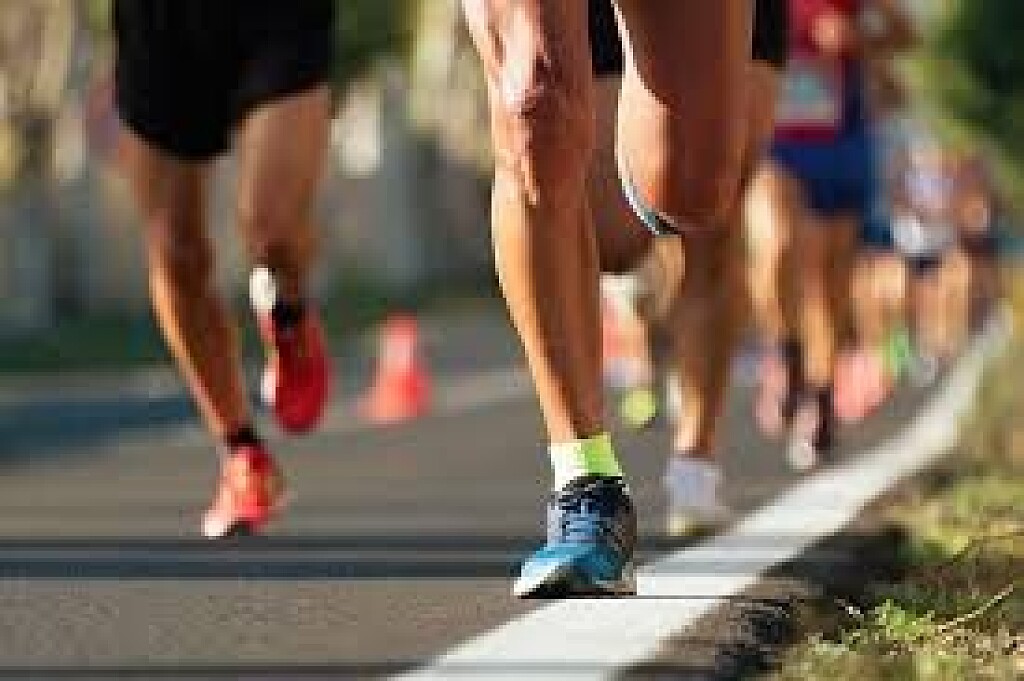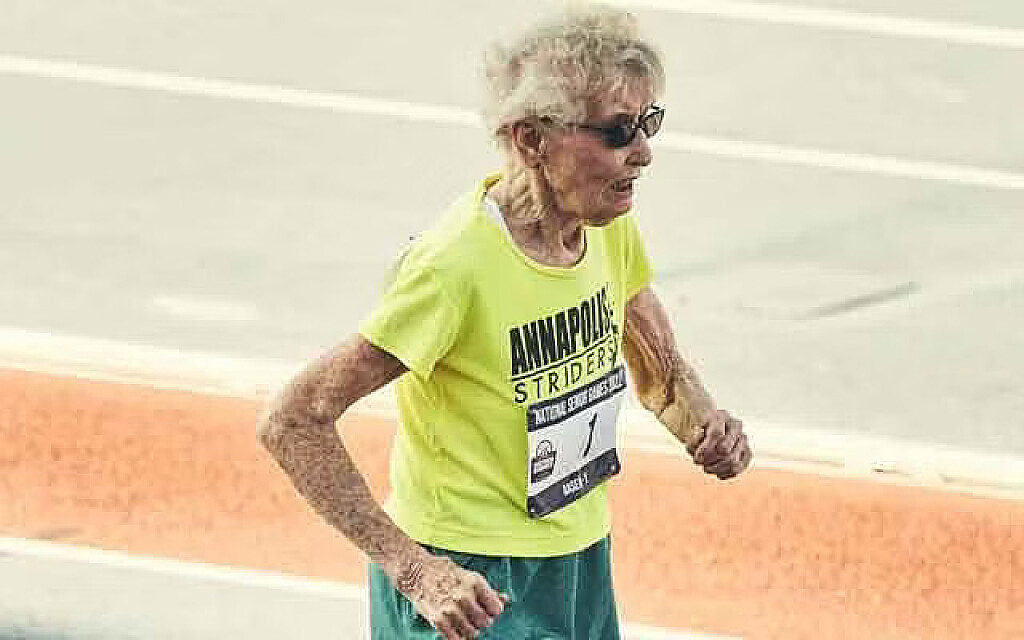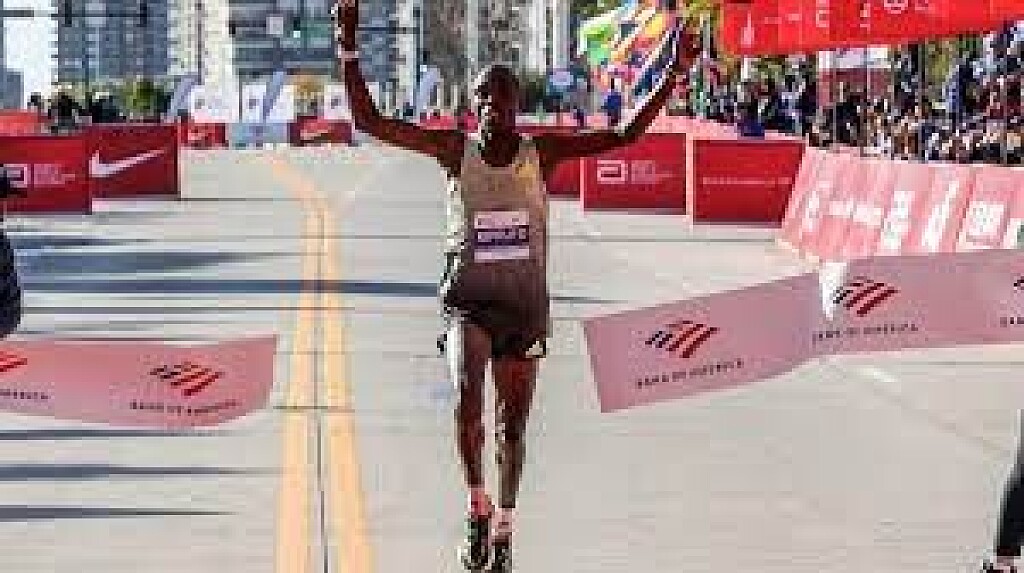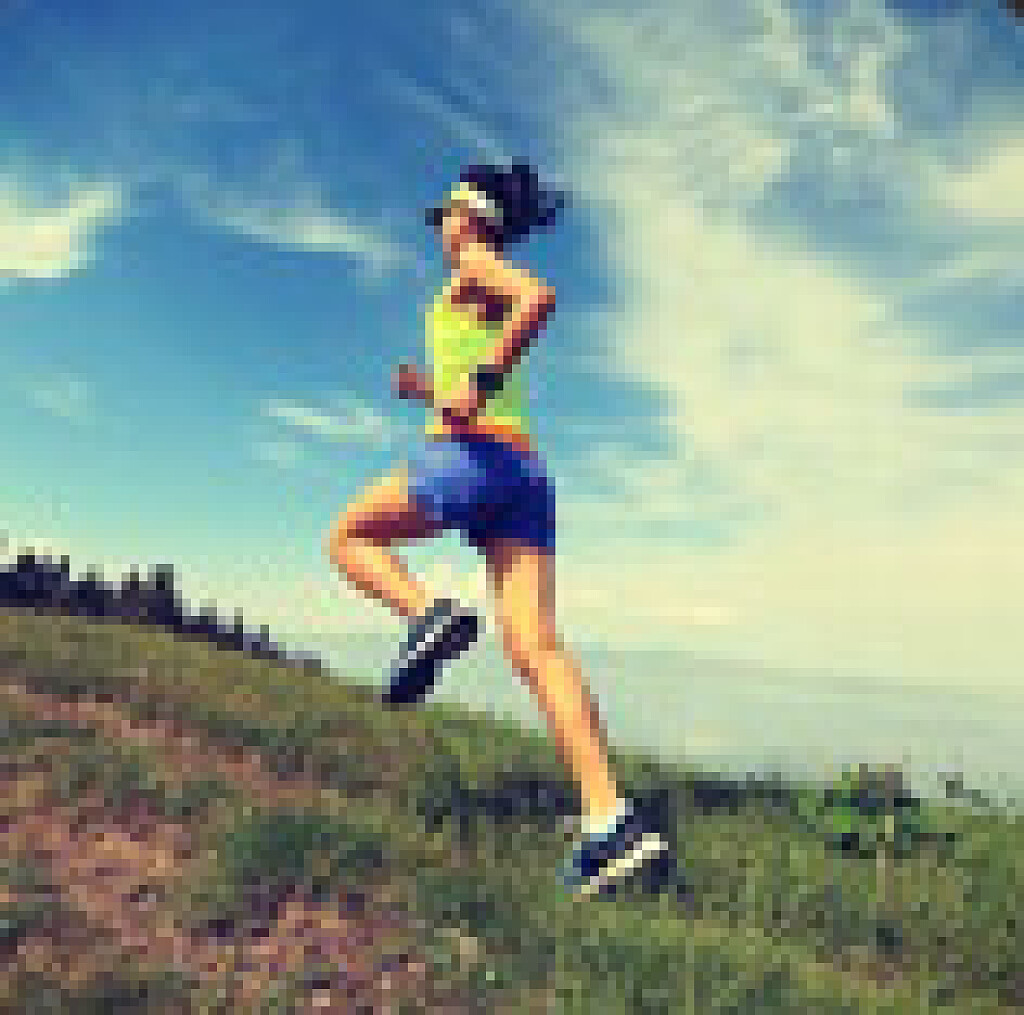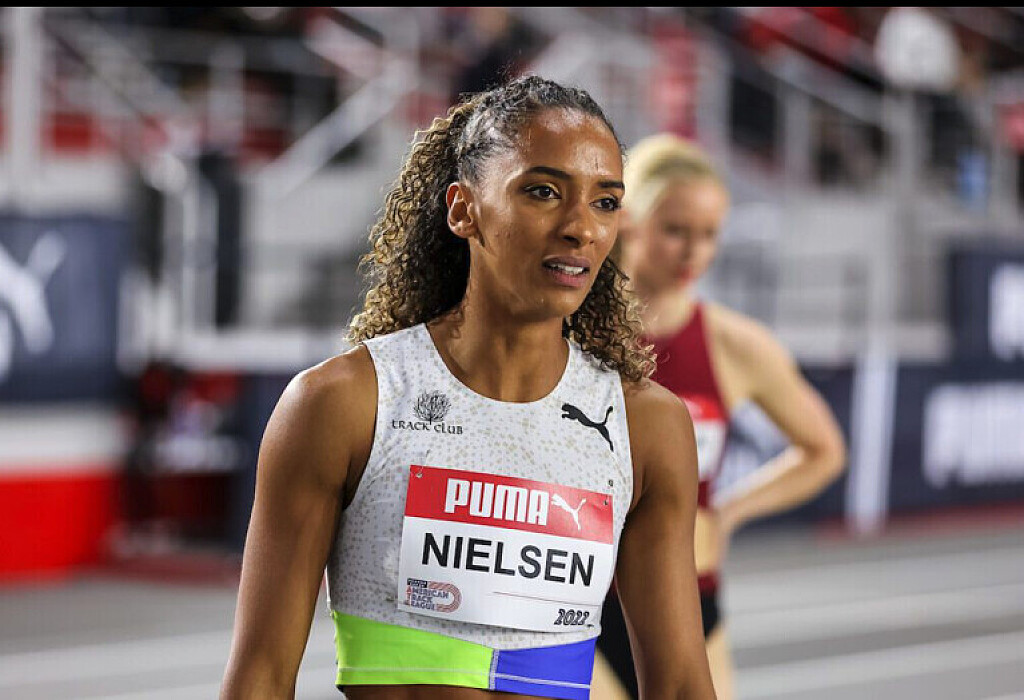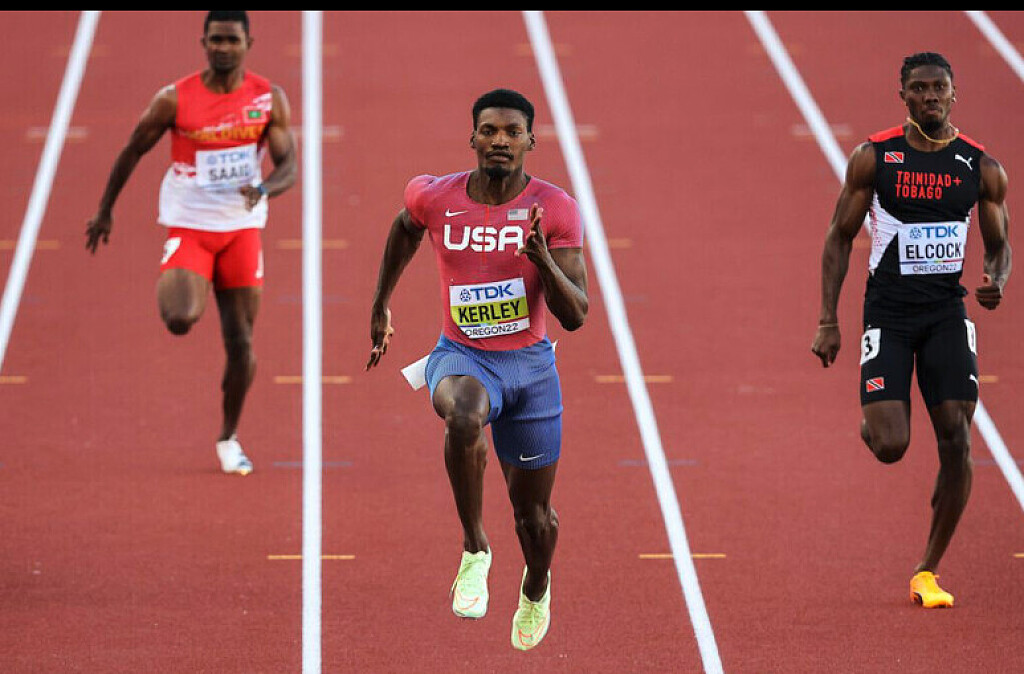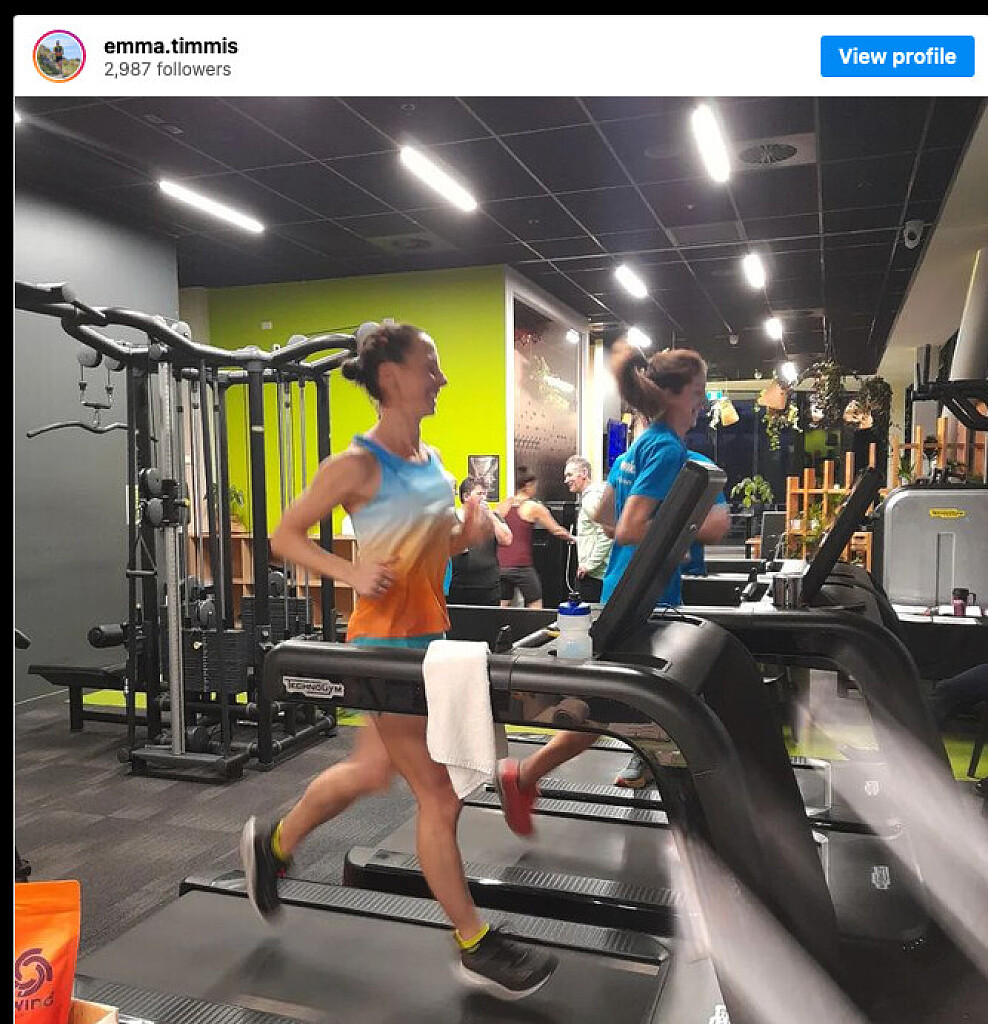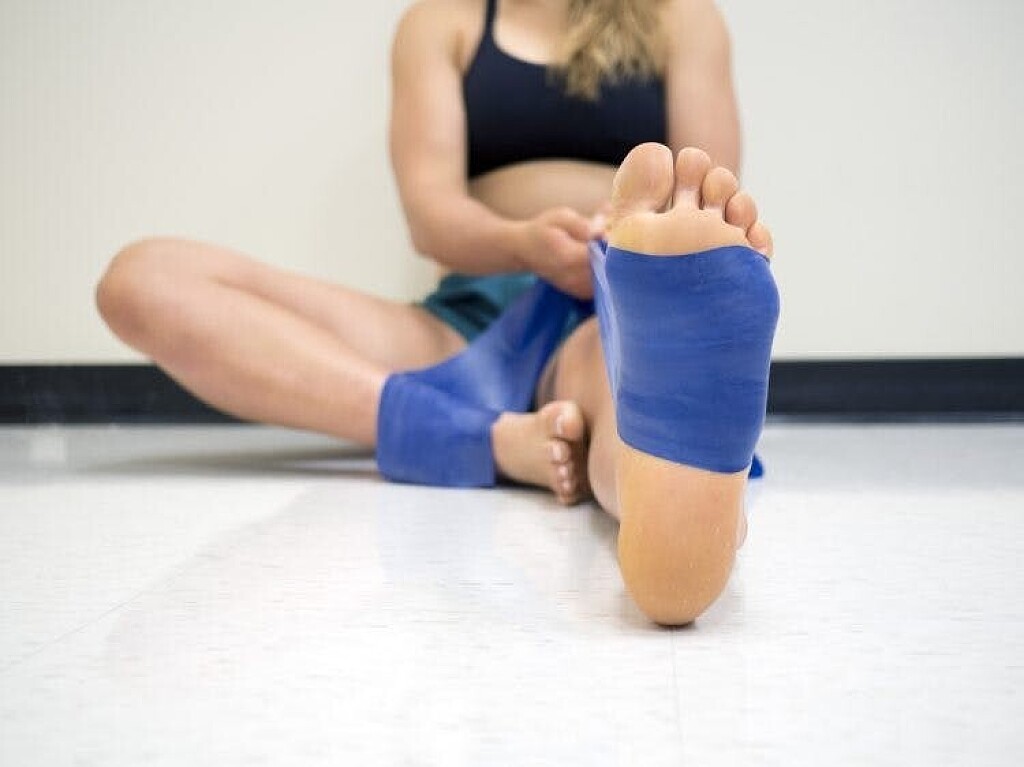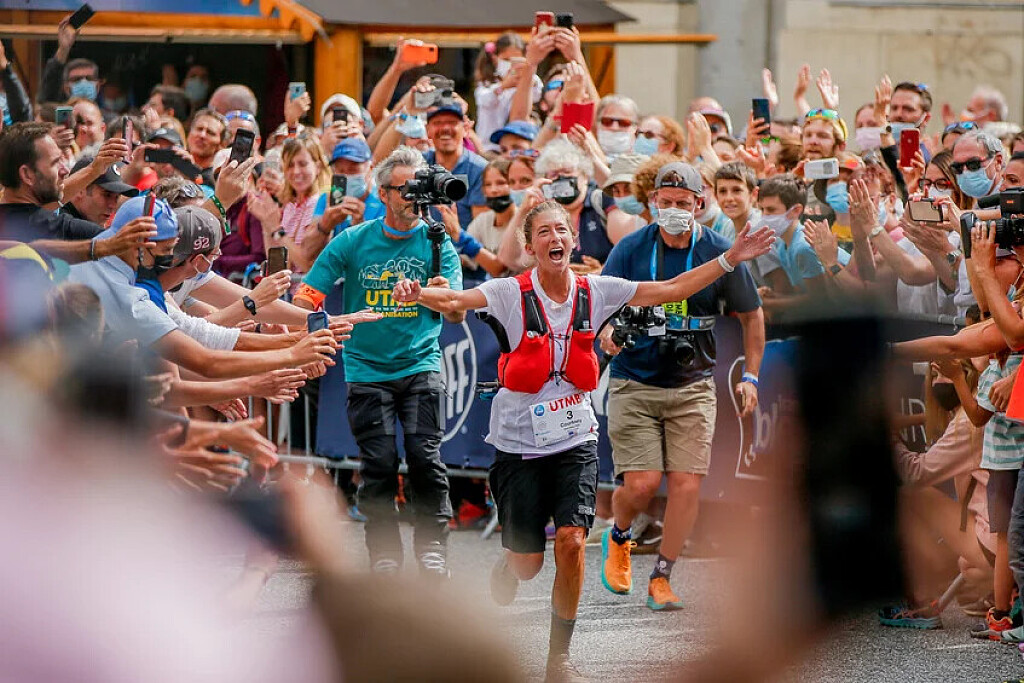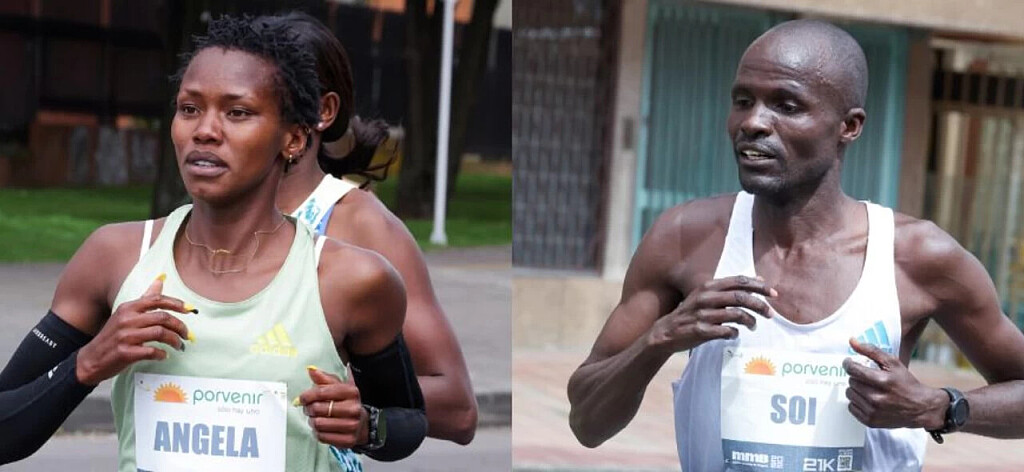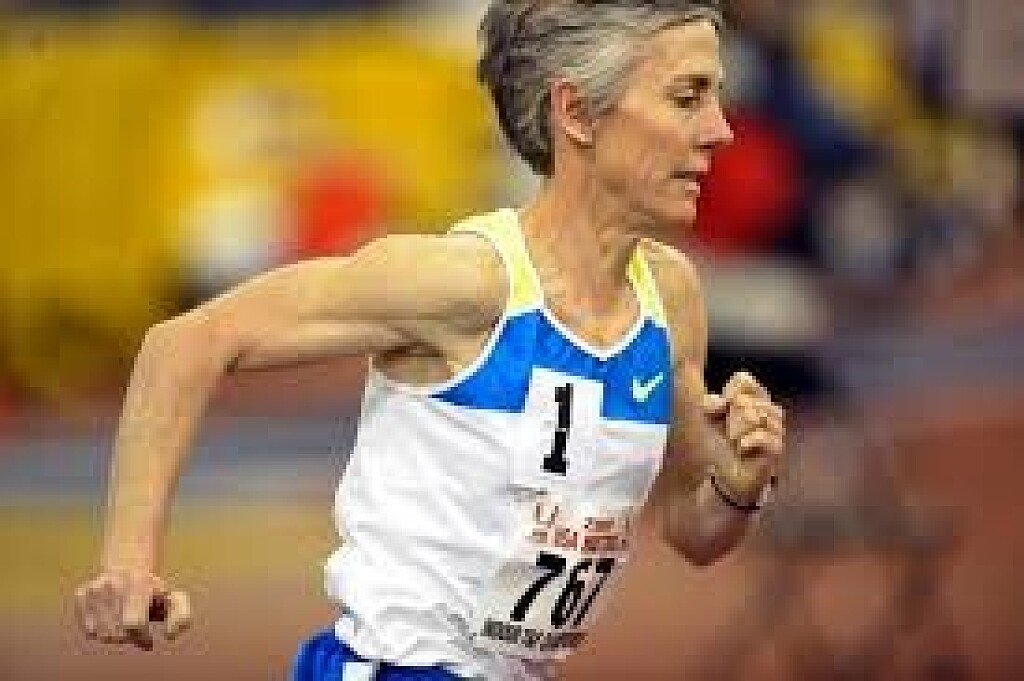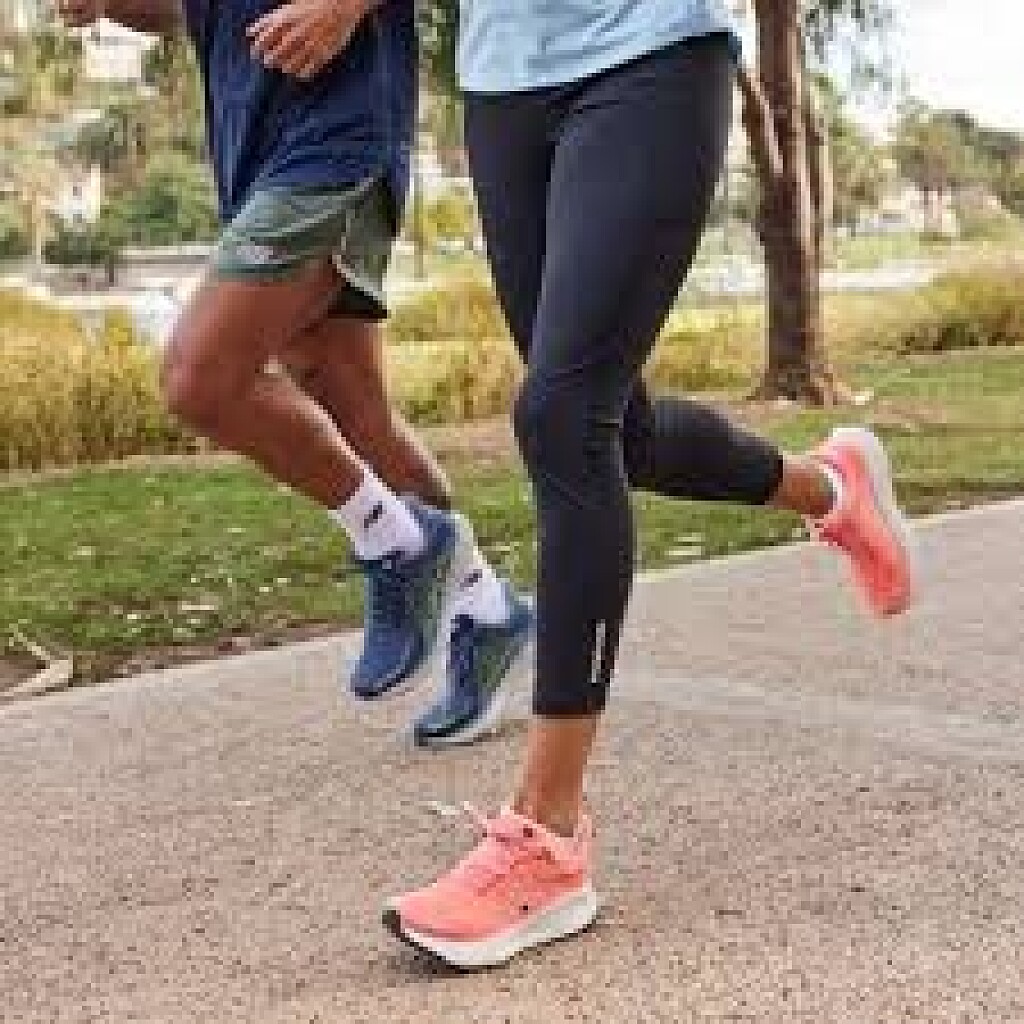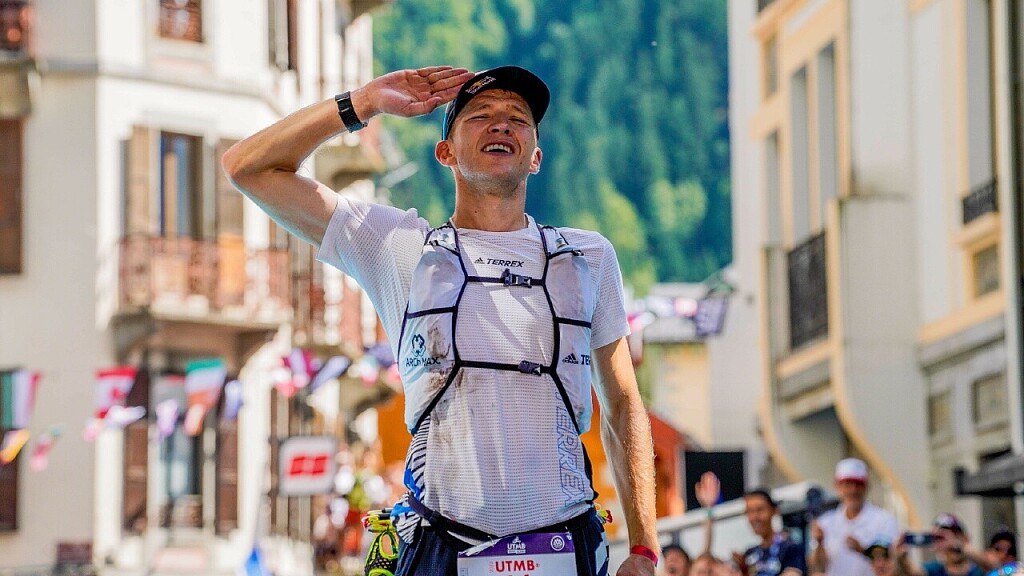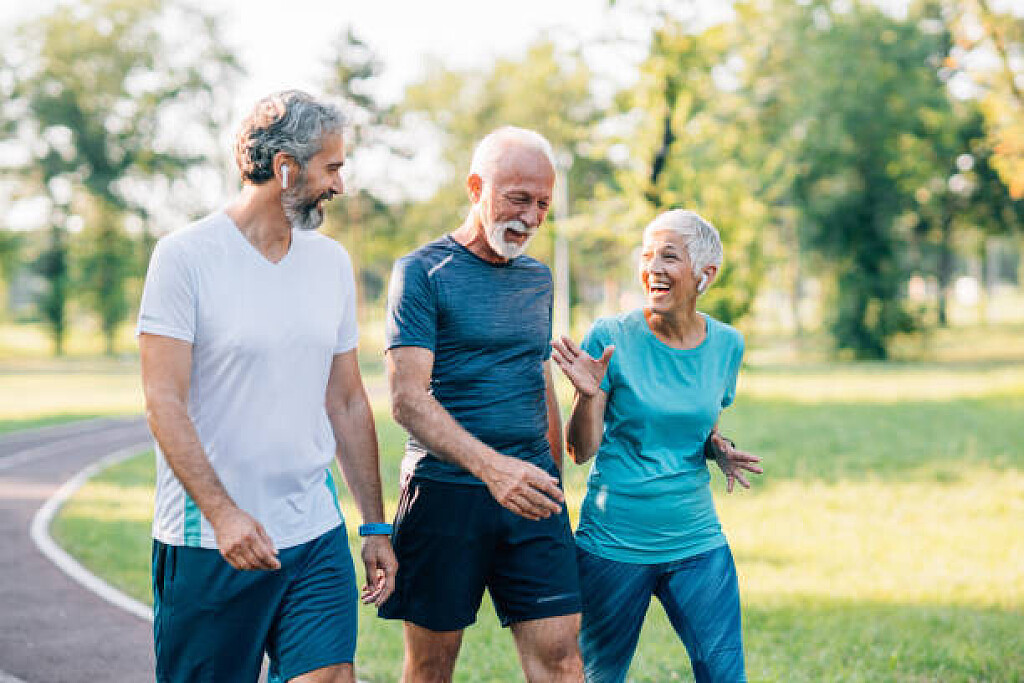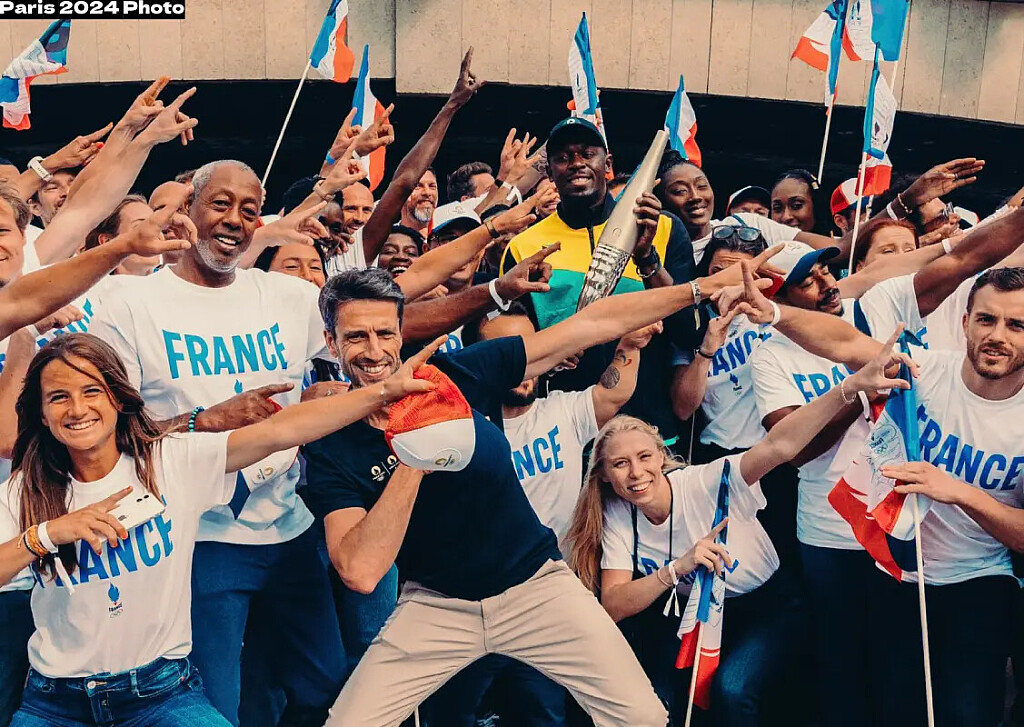Running News Daily
Running News Daily is edited by Bob Anderson in Mountain View, California USA and team in Thika Kenya, La Piedad Mexico, Bend Oregon, Chandler Arizona and Monforte da Beira Portugal. Send your news items to bob@mybestruns.com Advertising opportunities available. Over one million readers and growing. Train the Kenyan Way at KATA Running Retreat Kenya. (Kenyan Athletics Training Academy) in Thika Kenya. Opening in june 2024 KATA Running retreat Portugal. Learn more about Bob Anderson, MBR publisher and KATA director/owner, take a look at A Long Run the movie covering Bob's 50 race challenge.
Index to Daily Posts · Sign Up For Updates · Run The World Feed
New study shows athletes how to beat competition heat
The potentially lethal cocktail of high heat and humidity, strenuous exercise and dehydration hit Czech endurance athlete Hana Švestková Stružková so hard during a championship event that her body went into meltdown mid-race and she lost consciousness.
Stružková was racing in the classic up and down 8.2km mountain event at the inaugural World Mountain and Trail Running Championships in Chiang Mai, Thailand last year when, 1.5km from the finish, she succumbed to heat stroke and lost control of her body.
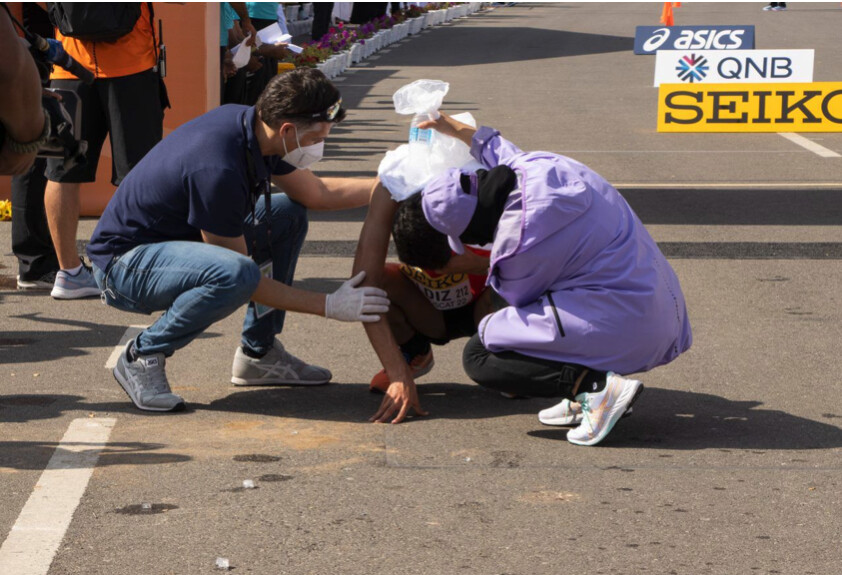
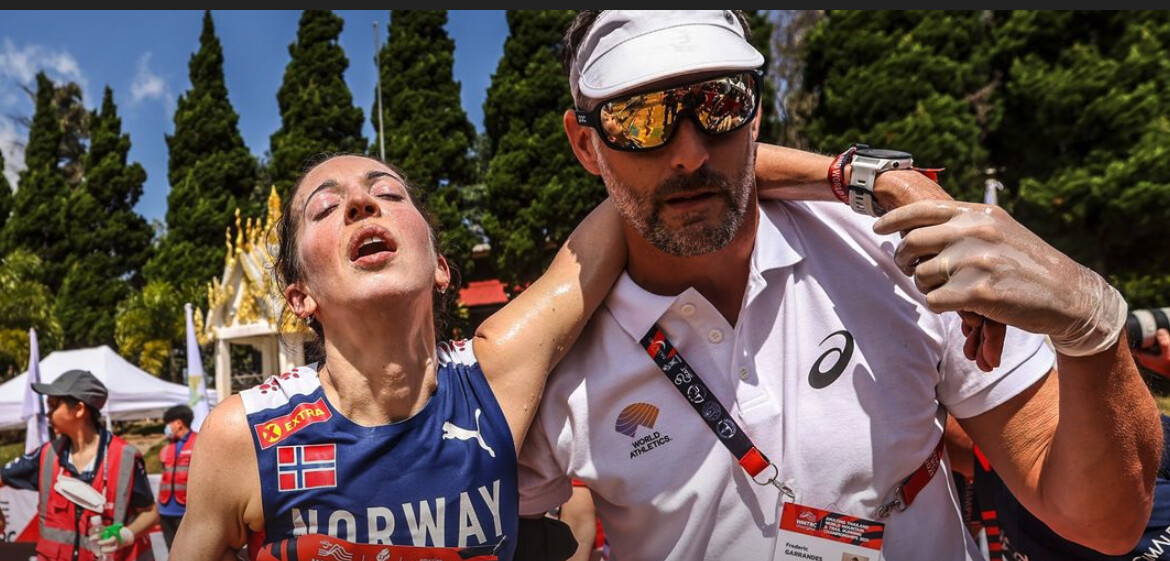
“Every step became harder, I couldn't run straight, my body became weaker and I couldn't control my legs,” Stružková recalled. “I fell down many times. Over the last 200 metres I could only scramble. It felt like a dream. After coming to the finish I was unconscious for one to two minutes and woke up in the medical tent. I couldn’t drink anything for about an hour and a half. I felt I would vomit. I felt very bad.”
Stružková admits she drastically underestimated the severity of the race conditions, she didn’t acclimate properly, and she didn’t drink enough water.
The urgent need to educate endurance athletes about the dangers to their health and performance posed by hot and humid competition conditions and how they can mitigate the risks were among the key findings of a new heat acclimatisation study by World Athletics.
Checking the weather before heading to a foreign climate may be standard practice for travellers, but the study found elite endurance athletes like Stružková were failing to check and prepare for the hot and humid conditions they’d encounter at championship events.
The study also found that while heat preparation information and strategies were available to all athletes and teams, ignorance prevailed and logistical, practical and financial barriers were proving too high.
World Athletics recruited 66 elite athletes – 42 men and 24 women – from 16 countries who competed at the World Athletics Race Walking Team Championships Muscat 22.
The study recorded the athletes’ preparation, knowledge and health, and the effects of competition heat, which can range from dehydration to death.
Race temperatures during the championships in Oman’s port capital of Muscat were 31.3C and higher than historical weather data which predicted average race-start environmental temperatures of 22.5C (morning) and 25.5C (evening).
The three race walk events held over 10km, 20km and 35km resulted in athletes being exposed to these race conditions for between 44 minutes and up to almost four hours, depending on the distance.
The study found a high number of athletes (83%) surveyed were ignorant of heat-related material that could aid their health and performance and 43 per cent did not prepare for the expected hot conditions, blaming the cost and availability of suitable equipment and facilities.
More startling was the lack of knowledge among female competitors in particular, with 42% of women compared with 14% of men surveyed more likely not to know the expected conditions they faced in Muscat for the championships.
Not surprisingly, athletes who implemented heat acclimatisation strategies were more likely to perform better. The study found that athletes who did pre-event heat training were more likely to earn a medal or finish in the top 10. The four surveyed athletes who earn medals did heat preparation and of the 15 surveyed who finished within the top 10, 80% prepared for the heat.
The study, Heat Preparation and Knowledge at the World Athletics Race Walking Team Championships Muscat 2022, was conducted by a 13-member international team led by the World Athletics’ Health and Science Department – whose primary mission is to protect athlete health – in conjunction with the School of Sport, Exercise and Health Sciences at the National Centre for Sport and Exercise Medicine at Loughborough University, UK.
Study lead Frederic Garrandes, World Athletics’ Health & Science Department Scientific Manager, said the reason for athlete, coach and team ignorance and inaction regarding heat acclimatisation was multifaceted. “A certain naivety, underestimation of risk, lack of communication and a lack of professionalism on the part of team managers and athletes,” Garrandes said.
“With global warming, we're increasingly faced with the problem of organising competitions in hot, humid conditions. This poses a health and performance problem for the athletes. The higher the temperature, the greater the number of medical encounters we have in the medical tent.”
The Muscat study builds on work carried out at the World Athletics Championships Doha 2019 by the World Athletics’ Health and Science department to also investigate heat preparation strategies used by endurance athletes.
In Doha, the capital of Qatar, 23% of road race athletes had a medical event, despite events being scheduled to start close to midnight to avoid the heat.
The 2022 Muscat study showed that despite the ready availability of educational resources, including a ‘Beat the Heat’ leaflet developed by World Athletics, a lack of knowledge persists – highlighting the urgent need to increase awareness and action.
Garrandes said publicising the study results far and wide could help bridge the knowledge gap. Making the findings and lessons “accessible in a comprehensible, simplified and multilingual way for lay athletes” was also vital.
There was also a pressing need to educate elite female athletes and athletes from cold/temperate climates in particular about the dangers of competing in high heat.
“Research in this area gives us a better understanding of the incidence of the problem, enables us to treat our athletes more effectively and to build educational programmes to educate our athletes and mitigate the risks,” Garrandes said.
Stružková has this advice for fellow athletes after suffering the debilitating effects of heat stroke while competing in Thailand: “You have to take the opportunity to acclimatise to hot and humid weather before racing in devil conditions.”
(08/06/2023) ⚡AMP
by Louise Evans for World Athletics
Ethiopia’s Addisu Yihune, Kenya’s Hellen Obiri win Beach to Beacon 10k
Ethiopia’s Addisu Yihune and Kenya’s Hellen Obiri won the men’s and women’s titles at the 2023 TD Beach to Beacon 10K on Saturday morning.
Yihune crossed the finish line in an unofficial time of 27 minutes, 56 seconds. Conner Mantz of Utah was second (27:58) and Muktar Edris of Ethiopia was third (28:06).

Obiri won the women’s race in an unofficial time of 31:36, followed by Ethiopia’s Fotyen Tesfay (31:38) and Keira D’Amato of Virginia (31:58).
Matt Rand of Portland was the top finisher among the Maine men in an unofficial time of 30 minutes, 44 seconds, followed by Grady Satterfield of Bowdoinham (30:52) and Ryan Jara of Gorham (30:55).
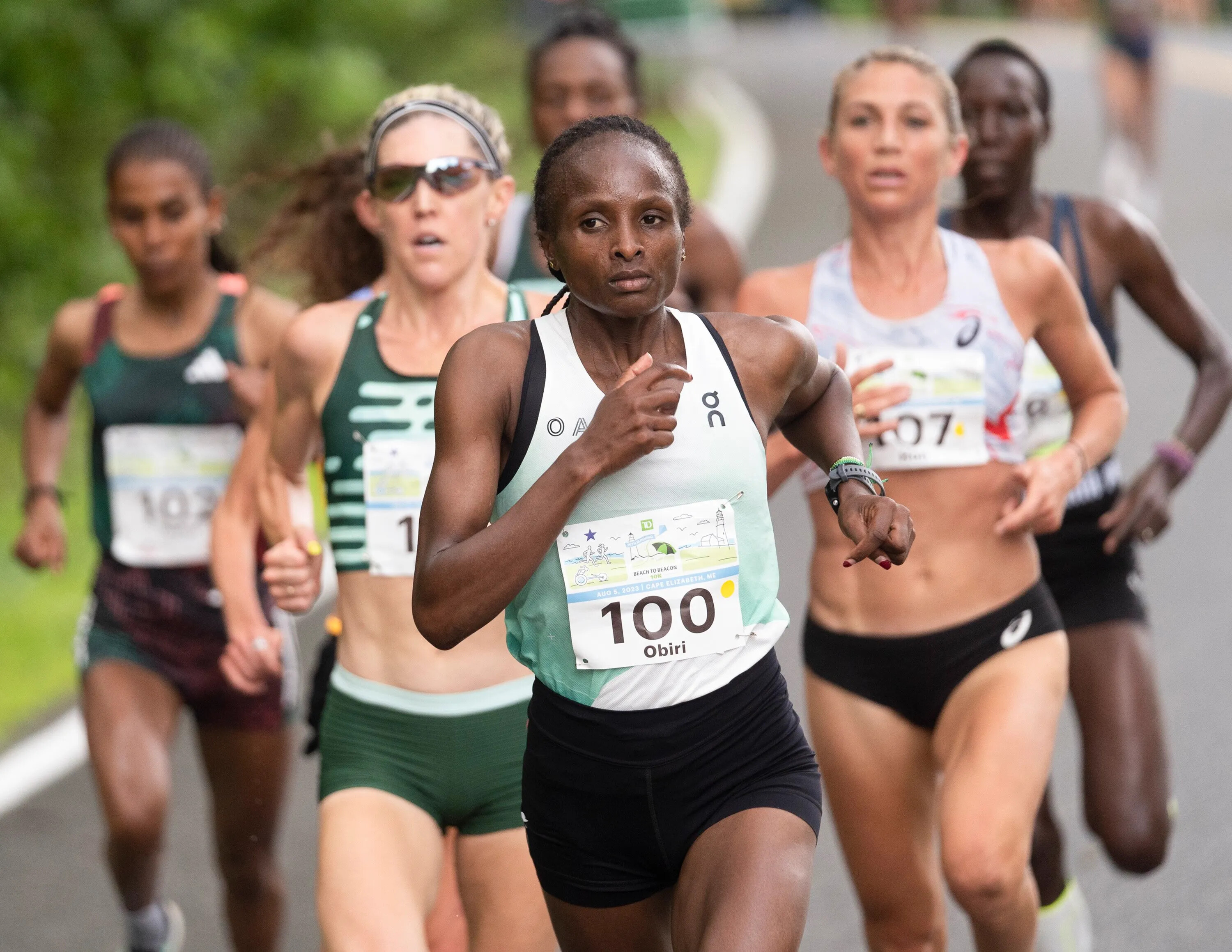
Ruth White, who will be a senior this fall at Orono High, was the top finisher among Maine women in an unofficial time of 34:56. Alexis Wilbert of Cumberland placed second (35:46) and Veronica Graziano of Falmouth was third (36:15).
Hermin Garic of Utica, New York, won the men’s wheelchair division in an unofficial time of 23 minutes, 20 seconds. Yen Hoang of Vancouver, Washington, won the women’s wheelchair division in 28:24.
In the men’s race, Mantz, 26, was visibly upset when he finished the race. He said Yihune, 20, twice pushed him in the final quater-mile, both times causing him to break stride and bang into the fencing that separated the runners from the crowd. Yihune, through the translation of countryman Edris, said he did not push Mantz. Yihune, competing in his first road race, said he was merely closing the lane to block Mantz’s path. Mantz, who had a fresh abrasion on his upper left arm, said that possibly the first incident with about 400 meters could have been accidental or unintended.
The second time, with about 200 meters to go, “The second time I tried to pass him there was plenty of room. Enough for two people to pass on his left. The second time I hit the fence pretty hard. I hate this because there’s a part of me that feels like I got gypped but I also don’t want to go out and protest and like make it into somebody else’s bad experience.”
Yihune won $10,000 for the victory. Mantz also earned $10,000 – $5,000 for finishing second and another $5,000 as the top American.
“I feel like I had first in me today and when you lose by just that much and you lose your momentum, it’s easy to get upset,” Mantz said.
Beach to Beacon, founded by 1984 Olympic women’s marathon champion Joan Benoit Samuelson, is celebrating its 25th anniversary. More than 8,000 people registered for the event, Maine’s largest road race and one of the premier road races in America, with over 6,400 finishing.
(08/05/2023) ⚡AMPTD Beach to Beacon 10K
Joan Benoit Samuelson, a native of Cape Elizabeth, Maine, won the first-ever women's Marathon at the 1984 Olympics in Los Angeles and is founder and chair of the TD Bank Beach to Beacon 10K. "A long time dream of mine has been realized" says Samuelson. "I've always wanted to create a race that brings runners to some of my most...
more...Hassan and Bol feature on Dutch team for WCH Budapest 23
Double Olympic champion Sifan Hassan and triple European champion Femke Bol will represent the Netherlands in multiple disciplines at the World Athletics Championships Budapest 23.
Hassan has been entered in the 1500m, 5000m and 10,000m – the same three disciplines she contested at the Tokyo Olympic Games, where she landed two gold medals and a bronze.
Bol, meanwhile, will have her sights set on gold in the 400m hurdles, having recently reduced her own European record to 51.45. As was the case at the past two global championships, she is also in the pools for the women’s and mixed 4x400m events.
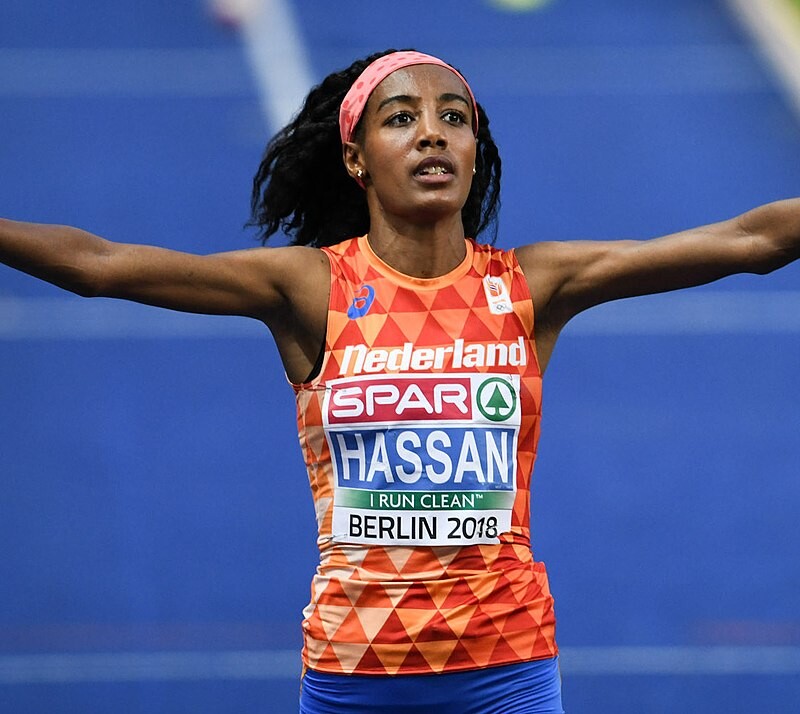
Dutch team for Budapest
WOMEN 100m: N’Ketia Seedo
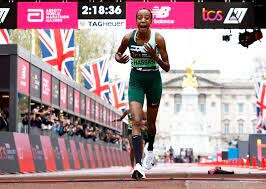
200m: Tasa Jiya
400m: Lieke Klaver
1500m: Sifan Hassan
5000m: Sifan Hassan, Maureen Koster
10,000m: Sifan Hassan, Diane van Es
100m hurdles: Maayke Tijn A-Lim, Nadine Visser
400m hurdles: Femke Bol, Cathelijn Peeters
Long jump: Pauline Hondema
Shot put: Jessica Schilder, Alida van Daalen, Jorinde van Klinken
Discus: Jorinde van Klinken
Heptathlon: Sofie Dokter, Emma Oosterwegel, Anouk Vetter
4x100m: Tasa Jiya, Lieke Klaver, Jamile Samuel, N’Ketia Seedo, Marije van Hunenstijn, Nadine Visser
4x400m: Femke Bol, Lisanne de Witte, Lieke Klaver, Cathelijn Peeters, Eveline Saalberg, Zoe Sedney
MEN 100m: Raphael Bouju
200m: Taymir Burnet
400m: Liemarvin Bonevacia
1500m: Niels Laros
5000m: Mike Foppen
Marathon: Abdi Nageeye
High jump: Douwe Amels
Pole vault: Menno Vloon
Hammer: Denzel Comenentia
Decathlon: Rik Taam
4x100m: Raphael Bouju, Taymir Burnet, Nsikak Ekpo, Churandy Martina, Xavi Mo-Ajok, Hensley Paulina
4x400m: Terrence Agard, Ramsey Angela, Isayah Boers, Liemarvin Bonevacia, Isaya Klein Ikkink, Nick Smidt
Mixed 4x400m: athletes drawn from men’s and women’s 4x400m pools.
(08/05/2023) ⚡AMPby World Athletics
World Athletics Championships Budapest 23
From August 19-27, 2023, Budapest will host the world's third largest sporting event, the World Athletics Championships. It is the largest sporting event in the history of Hungary, attended by athletes from more than 200 countries, whose news will reach more than one billion people. Athletics is the foundation of all sports. It represents strength, speed, dexterity and endurance, the...
more...Four exercises to combat shin splints
A bad case of shin splints can sideline even a very experienced runner. Also known as medial tibial stress syndrome, shin splints refer to pain and discomfort along the shinbone (tibia) at the front of the lower leg. They are caused by overuse or excessive stress on the shinbone and surrounding area, with tissues that attach the muscles to the bone becoming inflamed.
There are a few ways to prevent and treat shin splints. Resting your legs (cross-training with low-impact activities like swimming are OK) is a great first step. Next, check your shoes: ensure you’re wearing the right shoes with adequate cushioning and support to minimize impact–and that they are not worn out. (Great idea, if you run regularly, to replace your shoes at least once a year.)
Make sure you gradually progress your training, avoiding sudden increases in the intensity or duration of your runs. Finally, strengthen the shin muscles: add these exercises to your post-run routine to combat and prevent that nagging leg pain.
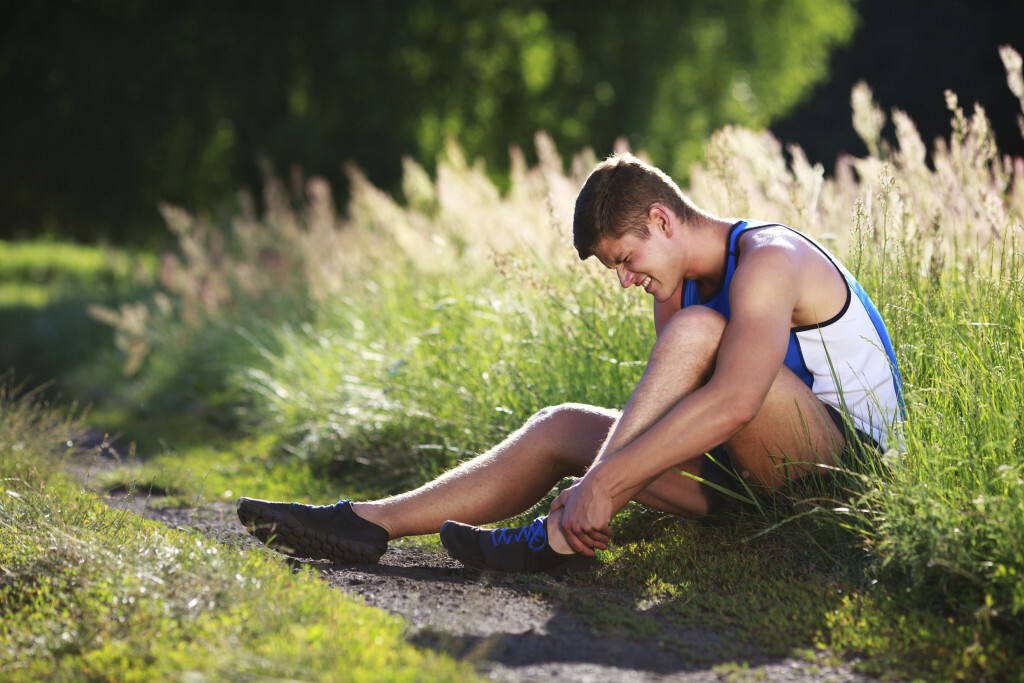
Toe Taps
Sit on a chair with your feet flat on the ground, and lift your toes upward, keeping your heels on the ground. Tap your toes on the ground rapidly for 20-30 seconds, and repeat for a few sets.
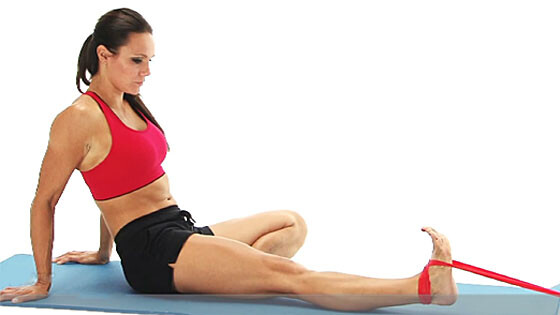
Resisted dorsiflexion
Attach a resistance band to a stable anchor, like a heavy chair or stair railing. Sit on the floor with your legs extended in front of you, and loop the band around your toes. Gently pull your toes toward you against the band’s resistance. Hold for a few seconds, then release. Try 2–3 sets of 10–15 reps.
Calf raises (eccentric focus)
Stand on a step or a platform with your heels hanging off the edge, rise onto your tiptoes, then slowly lower your heels as far as possible below the step. Use your non-injured leg or support, as needed, to rise back up to the starting position. Perform 2-3 sets of 10-15 reps.
Ankle alphabet
Sit on a chair with one leg extended. Pretend your big toe is a pen and write the letters of the alphabet in the air using your ankle and foot. This exercise engages the muscles around your shins, promoting strength and mobility.
Despite doing everything right, some runners still get sore shins. To tackle the pain, try applying ice to the area for 15 minutes at a time, three or four times a day. Ice slows the blood flow to the area and should help decrease pain.
Once you have rested your shins and dealt with the soreness, ease back into your running and strengthening routine. If shin pain is persistent or feels sharp and stabbing, visit a medical practitioner to make sure it isn’t a more serious injury, like a stress fracture.
(08/05/2023) ⚡AMPby Keeley Milne
It’s Official! 92-Year-Old’s Marathon World Record Finally Approved
Mathea Allansmith now holds the Guinness World Record as the oldest woman to have completed a marathon.
In December 2022, 92-year-old Mathea Allansmith crossed the Honolulu Marathon finish line, becoming the oldest woman to have ever completed a 26.2-mile race. She surpassed the former record holder, Harriette Thompson, by over three months. Half a year later, after a thorough ratification process, Guinness World Records has given their nod of approval, making the record official.
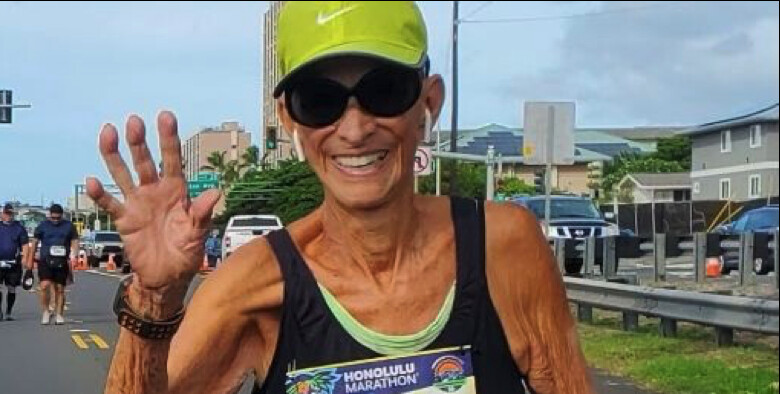
Rain or shine, Allansmith, now 93, runs six days per week all throughout the year, maintaining a training volume of about 36 weekly miles, even on vacation, and steadily increasing her mileage about 18 weeks prior to a marathon.
The retired doctor lives in Koloa, Hawaii, and didn’t start her running journey until she was 46 years old, after a colleague suggested running two miles per day. “I took up running in 1977 and fell in love with the feeling of exercising outside,” she told GuinnessWorldRecords.com. She credits her healthy running lifestyle with her high quality of life, and while her stamina has decreased over time, she’s making the most of what she’s got at any given moment. “I see the direct connection between moving and health,” she said.
The 1982 Boston Marathon was her first experience racing 26.2 miles, but the Honolulu Marathon is her favorite, partly because the race organizers don’t have a time cutoff, so even slower runners have an opportunity to complete the course.
“It’s one of the best-executed races,” she said to Guinness. “Fantastic registration, set up and management makes it a joy to participate in.”
On the day of her world record, Allansmith’s six children surprised her by wearing matching T-shirts denoting their mother’s achievement. “I felt an enormous sense of accomplishment and joy,” she told Guinness.
Allansmith plans to continue running marathons for as long as possible, and hopes to nab some other world records along the way, for other distances like the 10K and half marathon.
(08/05/2023) ⚡AMPby Runner’s World
Expert Strategies for Eating to Boost Energy
YOU SLEPT EIGHT hours, snuck in an early run, and made time to meditate before jumping on your first Zoom call. Still, your brain feels fuzzy all morning. By the time afternoon hits, you’re ready for a long, hard nap. What gives?
Though many factors can influence energy levels, perhaps one of the biggest (and most understated) is your diet, including what you nosh on, how much, and when.

“Everything that we eat can impact how we feel and what we’re able to do throughout the day,” says Amity Lui, MS, RD, a New York City–based sports dietitian who works with runners.
High-quality fueling can mean the difference between navigating life in a fog and consistently crushing your days. Good nutrition can also better your running and overall health, allowing you to exercise with less fatigue, which boosts your performance and decreases risk of injury—all while supporting hormone health, digestion, metabolism, and immune functioning, says sports dietitian Yasi Ansari, MS, RDN, CSSD, spokesperson for the Academy of Nutrition and Dietetics.
In short, there’s a lot to gain from optimizing your eating habits. Here’s what experts recommend.
• Eat often during the day
The trend of intermittent fasting—where people abstain from eating for certain stretches of time—may have health benefits for some, such as those with type 2 diabetes. But what about for runners looking to optimize performance and feel energized? “You really need to have steady fuel throughout the day,” says Selvi Rajagopal, MD, MPH, assistant professor of medicine at Johns Hopkins University School of Medicine. That means no skipping breakfast or “forgetting” to eat lunch.
Rajagopal recommends eating every three to four hours to prevent drastic dips in blood glucose levels, which can lead to plummeting energy levels.
A better bet is to strive for three well-balanced meals spaced throughout the day plus several snacks in between. “Eating consistently is going to make a huge difference,” says Lui, who recommends runners fuel as often as every two hours, or even more frequently if hunger strikes.
• Strive for well-balanced meals and snacks
Carbs are commonly vilified, but they are an essential macronutrient, especially for runners. “Carbohydrates are the number-one source of fuel for endurance runners,” says Ansari, because they get broken down into glucose, which your body prefers to use for energy. Don’t skimp on carbs if you want to avoid fatigue.
At the same time, unless you’re fueling for a run, avoid eating simple carbs by themselves, as that leads to a rapid spike in energy followed by a drop, according to research. Instead, pair carbs with the two other macronutrients: fats and protein. This will help stabilize your blood sugar and provide sustained, steady energy.
Here’s a sample day of balanced fueling, from Rajagopal. Of course, tailor this to your preferences.
Breakfast: Oatmeal with fruit and peanut butter or Greek yogurt
Mid-morning snack: Apple with nut butter or carrots, hummus, and whole-wheat crackers
Lunch: A quinoa, farrow, or brown rice bowl with sweet potatoes, vegetables, and a lean protein, like chicken or canned tuna
Mid-afternoon snack: Cottage cheese or Greek yogurt with granola
Dinner: Half a plate full of veggies, a quarter or third filled with a starchy carb like potatoes, and the last quarter protein
• Refuel after you run–even if you’re not hungry
While the general advice of “eat when you’re hungry, stop when you’re full” can help you eat mindfully, exercise—especially intense exercise—can suppress hunger due to the release of certain hormones and the fact that blood gets diverted from the GI system toward working muscles. In fact, according to a recent poll of nearly 3,000 people on Runner’s World Instagram, 61 percent of respondents said they find it difficult to eat after a long run or hard workout. “It’s really hard to identify if you’re actually hungry immediately after a really hard run,” says Ansari. But waiting to eat can hinder your recovery and lead to a crash in energy, she says. So no matter how you feel postworkout, aim to consume at least a snack within 30 minutes and then follow that up with a full meal within one to two hours later, advises Lui.
If the thought of solid food soon after a hard run makes you queasy, turn to liquid nutrition, like smoothies and protein shakes. Prioritize carbs and protein, and aim for a ratio of 3 grams of carbs to 1 gram of protein following intense training, says Ansari. One of her go-tos is a smoothie with kefir, almond milk, or cow’s milk, 1 cup frozen mango, 1 banana, a scoop of protein powder, and granola or a side of toast and nut butter.
• Load up on micronutrients
High-intensity exercise—ahem, running—can stress your body and lead to feelings of fatigue. However, eating antioxidant-rich foods like fruits, vegetables, and leafy greens in particular can help combat those effects, says Ansari. Antioxidants help to fight free radicals and oxidative stress postrun, aiding in your recovery. To get your dose of these health- and energy-boosting nutrients, incorporate produce into your meals: Eat a cup of fruit at breakfast, have a side salad at lunch, and load up your dinner plate with veggies.
There are several other micronutrients commonly found in fruits and veggies (as well as other foods) worth adding to your plate. While a doctor can help you determine if you have a deficiency and need a supplement, it’s still important to consume foods that contain these nutrients.
Iron: A deficiency in this mineral can lead to fatigue and tiredness, both cognitively and while exercising, says Ansari. Vegan and vegetarian runners may be at increased risk of deficiency, as red meat is one of the best sources of bioavailable iron. Those who menstruate are also at increased risk, says Rajagopal. Increase iron stores by eating leafy greens (spinach, broccoli, and kale), whole grains, nuts, and tofu. Enhance iron absorption by pairing iron-rich foods with those high in vitamin C, such as fruits, bell peppers, and berries, says Lui.
Vitamin B12: Deficiencies can result in fatigue and shortness of breath, says Lui. Vegetarian and vegan runners may be more at risk of low stores, as animal products provide the highest sources. Seek it out in products like meat, fish, and eggs, as well as fortified cereals, whole grains, plant-based milks, and nutritional yeast.
Vitamin D: A deficiency that affects 42 percent of all Americans (not just runners), according to a survey, too little vitamin D can cause fatigue, increased muscle weakness, and pain, says Lui. Eat foods like canned fish, dairy products, and fortified products like plant milks and orange juice. The caveat: It can be hard to get enough vitamin D, says Rajagopal, so you may need a supplement. Again, consult your doctor.
• Avoid making dinner your biggest meal
Dinner is typically the biggest meal of the day, but that doesn’t necessarily support a solid night’s slumber, which is essential for optimal energy. “Most folks sleep better if dinner isn’t the largest meal,” says Rajagopal, explaining that “our bodies don’t digest and metabolize things as quickly in the evening” compared to earlier in the day.
Instead of getting the bulk of your nutrition at dusk, eat consistently throughout the day. Also have dinner about three hours before bed to lower your risk of sleep-harming issues, like acid reflux.
• Have a slumber-inducing evening snack
If you end up feeling hungry between dinner and bed, reach for a small snack an hour or two before snooze time, says Lui, and get strategic about which snack you choose to best support sleep (and thus improve your overall energy). Ansari recommends Greek yogurt with fruit and a side of trail mix—a combo that provides magnesium, a nutrient that in one study of older adults helped them fall asleep faster.
You may also consider foods containing tryptophan, an amino acid that plays a role in the production of serotonin and melatonin, which support the onset of sleep and relaxation, Ansari says. Options include turkey, banana, oats, and tart cherry juice.
WHAT ZAPS YOUR ENERGY
Minimize energy dips by avoiding these foods and habits.
ULTRA-PROCESSED FOODS / Foods high in sugar and low in protein, fat, and fiber can provide an energy jolt if eaten soon before and during a run. But chowing on them in your day-to-day can lead to a rapid spike in energy followed by a slump, says Selvi Rajagopal, MD. Instead, eat snacks that offer macronutrients (carbs, protein, and fat) and fiber, and those low in added sugar, says Rajagopal.
DEHYDRATION / Research shows that as little as 2 percent dehydration can negatively affect performance, says Amity Lui, RD. “Not being adequately hydrated can make the body feel like it’s working harder,” adds Yasi Ansari, RDN. Lui says a good rule of thumb is to check the color of your pee. If it’s the shade of lemonade, you’re hydrated; if it’s akin to apple juice, you need a drink.
SPORTS DRINKS OUTSIDE OF A WORKOUT / Unless you’re hydrating during or after a workout, steer clear of sugary beverages, including sports drinks and hydration aids, says Rajagopal. Instead, consider water with a squeeze of citrus fruit.
UNDERFUELING / When athletes feel fatigued, it can sometimes be because of nutrient deficiencies, but most often, it’s because they simply aren’t eating enough, says Ansari. Research identifies low energy availability as one of the most significant factors associated with illness and injury risk in endurance athletes.
(08/05/2023) ⚡AMPFEEL LIKE QUITTING YOUR RUN?
There are various reasons to want to quit a dreadful run: The weather conditions may not be in your favor, maybe you didn’t get enough sleep, or perhaps you’re sore from previous workouts and now feel sluggish. You know your body is capable of finishing—you’ve been here before—but your brain is just not on board. Unless you’re physically hurt (in which case, you should stop immediately), it’s time to pull some serious motivational self-talk from deep inside your pockets to get in the final miles.
What else helps? Knowing that you’re not alone. It happens to most runners, including Runner’s World staffers and RW+ members alike. They have bad days as well but also their own tricks to turn them around. Here are some of them.
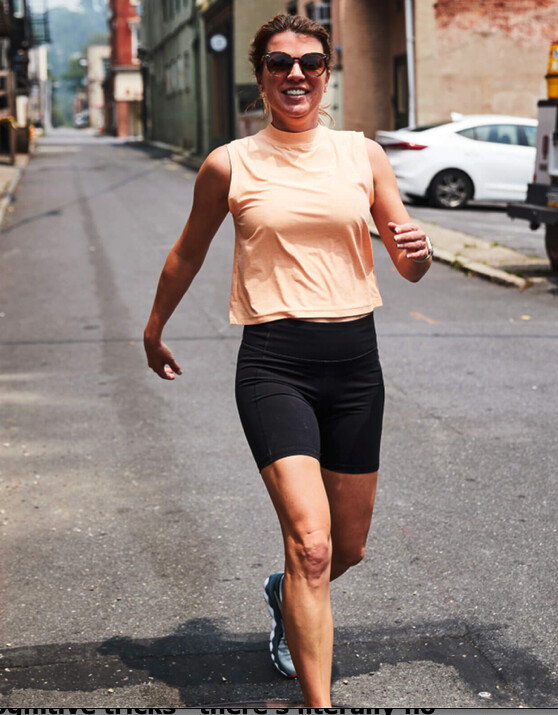
KEEP SPEED UNDER CONTROL
Midrun, usually I’ll just tell myself to slow down for the next mile so I can relax and get back into a groove. What I find always happens is I end up slowing my pace for only a few seconds, maybe a minute, and end up right back at my usual pace feeling okay.
In a race, it’s a different story. I’ll usually force myself to take a look at my heart rate or breathing. If it’s all under control for the given speed, I tell myself that everything is fine and that I have no reason to bail. I’m not big on mantras, personally, so using whatever data I have at hand helps me get past those moments when it gets hard. JEFF DENGATE // Director of Product Testing
GIVE LINGUISTIC ZOOMING A SHOT
I ’m sure you’ve heard about the value of positive self-talk. But did you know that switching the point of view can make a difference? During tough track intervals, I’ve been trying out something called linguistic zooming, which is when you use the second- or third-person point of view to talk to yourself. This creates distance between yourself and the stress you encounter. So instead of saying, “I’m crushing this run. I’m gonna be done before I know it,” I’ll say, “Theo is crushing this run. He’s gonna be done before he knows it.” It’s a little weird at first, but it helps. And if I’m feeling brave, I’ll even talk to myself out loud. I love trying out these cognitive tricks—there’s literally no downside! THEO KAHLER // News Editor
IMAGINE THE POSTRUN FEELING
Take a quick rest, catch your breath, inhale and exhale deeply for a few breaths, do a little scream if you need to, and then tell yourself this: You’ve made the commitment to get out there. How are you going to feel later today if you throw in the towel now? Will your future self like your decision to quit when the going gets tough? No? Then just go! Change the narrative and start daydreaming about how good you’ll feel when you’re finished with the run and attack the rest of the run like it’s your only job in the world. Outrun the voice that tells you to quit. Not every run is going to feel amazing, but you’ll feel amazing at the end of the day knowing that you quieted the voice that said you couldn’t do it. JENNIFER ACKER // Health & Fitness Editor
DO IT FOR YOUR RACE DAY
We all get in the mental game: I’m done, I’m thirsty, my legs feel heavy, it’s too hot, and so many more! I coach my athletes to “run with joy” for every run—not just the glory of the big race. I want them to remember why they run. For me, I keep thinking of the actual race finish. I remind myself that without this effort, I cannot experience the glory of a race day. When training for my marathon two summers ago, while on a 15-miler on a very humid day, I was running the second half as a test. Mile 11 is when the doubt started to set in. I brought on the mindset that if I cannot finish this run, how the heck will I do it on race day? I pushed through successfully and had a good run, smiling in the end. So remember your “why” and let that push you to the finish of every long run. ADAM TILLS // RW+ Member
THINK OF RUNNING AS A GAME
A few years ago, I was caught in a torrential downpour while listening to “The Hero” theme song from the anime series One Punch Man. It reminded me of how my passion for running came from being a gamer, and suddenly I was in love with running in the rain. Why? Because running is exactly like gaming.
In a game, you often encounter enemies when you’re tired of battles/hills, down to your last potion, and ready to rest and heal/head home and drink a protein shake. But face them and you get experience points (EXP) and rewards like weapons and armor. How is pressing on in bad weather or tough terrain any different? It isn’t. ERIN FAN // RW+ Member
FOCUS ON ONE STEP AT A TIME
When training for my first half marathon, I was scared and doubted I could do it. This is what my trainer suggested after one training session: If I get to the point when I feel like quitting, I should stop, breathe, and instead of looking at the finish line, focus on the step in front of me and do what I can to make it the best step possible. We talked about setting points ahead to run toward to give myself smaller challenges. This advice has helped me get through seven marathons, including the time when I cussed my way up the San Francisco hills. So here I am, making those little goals, focusing on making my each next step the best step possible. BONNIE WILSON // RW+ Member
(08/05/2023) ⚡AMP9 Things Every Running Shop Employee Wishes You Knew
Yes, this shoe comes in other colors. No, that doesn’t mean you should buy it.
For two years, I worked at the best run specialty store in Minneapolis-St. Paul, Minnesota. For seven years after that, I worked for a running shoe brand. In that time, I learned there’s a sizable knowledge gulf between folks in the industry and most consumers. Even many consumers who pay pretty close attention to racing and shoe reviews weren’t always up-to-speed on the latest tech, how a certain brand fits or whether they need a neutral. stability, minimal, or trail shoe.
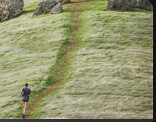
It’s our own fault. Brands create so many SKUs that it can be hard to keep up with each development. Stores stack so many models next to each other on the wall that it can seem impossible to know where to start.
I can ensure you we didn’t keep things convoluted on purpose. On the brand side, we wanted people to feel like they knew enough about our footwear to confidently buy shoes from our website. In the shop, we knew customers appreciated feeling like they were empowered to pick the right pair. If they felt overwhelmed at our store, we knew, they probably wouldn’t come back.
That got me thinking: What else did I wish every runner out there knew about shoes? So I jotted down this list. It’s far from comprehensive. Maybe there’ll be a part two.
Full disclosure: My wife works on the product team for the aforementioned shoe brand. But I think that gives me a valuable window into how brands ideate and produce their products, and I’ll do my best to be objective. Besides, I didn’t consult her on this. To counterbalance this, I’m going to go make some major purchases, also without consulting her!
One person I did consult, since he’s been in the shop game a lot longer than I have, is Jeff Metzdorff, co-owner of Mill City Running and Saint City Running. He will really hate that I called his cross-town rival the best shop in the Twin Cities, but them’s the breaks. In any case, here’s what came up for us.
Your coworker might love Asics. Your run club friend might hate Nike. That doesn’t mean you should buy Asics or avoid Nike. You should try both—and a bunch of others—to see what works for you. (FYI: Sizing can be different from brand to brand, so don’t be alarmed if you’re a full size bigger or smaller than you thought, or even a full size different from brand to brand.)
Every set of feet is different, and shoe choice is highly individual. Anyone who tells you with broad strokes to avoid or buy any one brand across the board might mean well, but they’re probably wrong. (And if they’re right, it’s a coincidence.)
So how do you know if a shoe is for you? It’s simple—if it’s comfortable when you put it on, there’s a really good chance it’ll serve you well. Shoes shouldn’t require a break-in period to feel good. (This is in addition to other considerations you should address before you’re trying them on, like whether the tread pattern will be sufficient for the surface on which you plan to run.)
Not to get all hippy-dippy, but your body is a pretty good judge of this sort of thing—and the (albeit very limited) science seems to agree.
They can absolutely contribute, to be sure, but it’s also tempting (and lazy) to point the finger to shoes alone when injuries happen. They’re part of an ecosystem that includes individual mechanics, stressors, your training, and other factors.
Being in the wrong pair of shoes won’t help your odds of avoiding injury, but if you’re in the wrong pair, you won’t blow out your knee in the first few steps. You’ll get some warning signs before an injury, so make sure you heed them if they appear.
Things like ramping up your mileage too quickly, or neglecting ancillary strength and mobility, probably play a bigger role in injuries than shoe choice alone. You’re not Indiana Jones trying to pick out the Holy Grail, so don’t stress too much.
All it often means is that the shoe contains more physical material like midsole cushion, or more expensive material like carbon fiber, and therefore was more expensive to produce. That doesn’t mean the $200 shoe won’t work for you, but don’t rule out the $130 shoe on this basis alone.
I’ve already covered this on the brand front—that just because your favorite athlete wears Hoka or On doesn’t mean you should—but this applies to shoe type, too. A lot of pros train and race in shoes that are lighter-weight and lower-profile than many of us should be using. They tend to be lighter, more efficient, and in more dire need of shedding ounces. (It’s their job to go fast, after all.) If you try and wear road racing flats in a 100-mile trail race because your favorite pro did it, there’s a good chance you’ll regret it after mile 50.
Of course, there are exceptions, but a lot of pros know very little about the shoes and brands they’re endorsing. So take those endorsements with a grain of salt.
“I need support.” I’ve heard it a thousand times, and I was only working the floor for two years. “Support” can mean more cushion. It can mean more medial stability, designed to mitigate overpronation. For a handful of people, it means the feeling that the arch is hugging the bottom of their foot when they step into the shoe. The list goes on.
Cushion can be good if it’s more comfortable for you – but an ultra-cushioned shoe won’t necessarily prevent injury at a higher rate than its more moderately-cushioned peers.
Medial stability is something pronators might need, although there’s been a move away from overtly-prescriptive footwear in favor of “inherently stable” shoes that work for a broader variety of folks in the last decade or so. (A shop employee should be able to help you decide whether you want a stability shoe.)
As for the arch, an insole that hugs the foot tightly might feel good at the outset, but it could be a one-way ticket to blister city. (Earlier I noted that comfort is king, but here’s one case where comfort now doesn’t necessarily translate to comfort later. Just don’t view arch-hugging fit as a dealbreaker.)
So, are you sure you need “more support,” whatever that means to you? Try some shoes on and find out!
I know, I know. They ruined your favorite shoe. Or even worse, they discontinued it. I certainly won’t try to convince you that the last model didn’t fit you just a little better, or feel a little more right. And this probably won’t ease the pain. But I can assure you that brands aren’t updating their shoes arbitrarily, or—as conspiratorially-minded YouTube reviewers occasionally insinuate—for marketing alone.
When a new shoe hits the market, the brands get a deluge of feedback from customer reviews, media reviews, store staff, and reps in the field. It’s too wide, it’s too narrow, the upper rips after 100 miles—stuff they would’ve liked to catch in testing, but didn’t until their sample size was the entire marketplace.
From the noise, some signals emerge, and they’ll chart a plan to address the most consistent pieces of feedback. It might be delayed by a model, because it’s usually a 12- to 18-month process to brief, build, and iterate a shoe before it launches. So the fifth version of a shoe often addresses the feedback they hear from the third version, for example.
That doesn’t mean you’ll like the new version as much as the old one. It would be ideal if everyone loved every update, but that’s not realistic, so the brands’ big bet is that more people will prefer the new version. That’s just business.
Does that mean they always get it right? (Stares at a pile of unused Hoka Clifton 2s in the corner.) Heck no. But they aren’t doing it just to mess with you. And let’s be real—sometimes your old favorite wasn’t quite as perfect as you remember it.
Where are you now, guy who took that size 8 Brooks Dyad off the wall, squeezed your toes into it, and declared: “This doesn’t fit!” without remorse? Did you think that ruled out the Dyad entirely? Did you tell your friends that Brooks shoes are too narrow? Did you not think we had a size 12 in the back that you could try on? Did you wonder why there was only one shoe, and where the matching half was? I think about you often.
And no, we don’t mind checking for you. If getting the color you want means you’re more likely to run, we’re more than happy to help.
To that end, we know it can be a touch intimidating to make your first run specialty visit. A display wall brimming with technical-looking choices and a floor staffed by serious (nutritionally- and sleep-deprived)-looking runners.
But, don’t be scared. Don’t worry about saying the wrong thing. Good shop staff meets you where you’re at, and wants to help get you on your way to enjoying a new pair of shoes. With any luck, you’ll turn into a lifelong runner and a lifelong customer.
You see, the stores need you more than you need them. If any staff treats you otherwise—and I know it happens—go shop at their competitor across town.
(08/05/2023) ⚡AMPby Outside online
New to Pacing? Three Expert Running Pacers Share Their Best Practices.
acing at long distance running events is common in North America, but it can also be intimidating. Here are seven essential tips from veteran ultra athletes. Emily’s stomach had definitely gone south. She couldn’t keep anything down, vomiting every few steps. Her pacer Buzz Burrell, a fixture in the ultra scene, had encouraged various forms of nutrition and drink with a side of optimism—it’s just a rough patch, aid station’s in a half-mile, the sun will be up soon. After all, that was his job, right? To lend the moral, emotional, and logistical support Emily needed to get to the finish line.
But when the hurling continued, he got out a flashlight and inspected the latest effluent. “It was blackish red, like a stomach lining,” he noticed. “And that’s when I said to my runner: ‘You know, I don’t think we ought to do this.’”
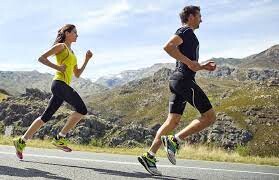
While that scene might be uncommon, it’s an example of the dire scenarios a pacer might encounter during an ultra-distance race. A pacer may need to be prepared to play all sorts of roles in service of helping a runner achieve their goals, even if it means knowing when to call it quits. They can be cheerleaders, drill sergeants, nutritionists, aide-de-camps, trail doctors, raconteurs, and comedians. It’s an art, one that requires close communication between pacer and runner.
While pacing is uncommon in European ultras (it’s not permitted in UTMB races, for example), it is a frequent feature in the U.S. Both on the track and in marathons, pacers are in from the start and step off somewhere halfway, but those who are pacing an ultra usually pick up their runner after the halfway point and accompany them for some or all of the last part of the race.
Some purists argue that the psychological advantage of having clear-thinking, uplifting company in the later stages contravenes the spirit of the endeavor, while others find it a way for friends or family to share in what might otherwise be a time-consuming and self-centered undertaking.
The practice of pacing originated as a safety precaution—race directors didn’t want runners to get lost or collapse out on the trail alone. The 345 percent increase in participation in ultras over the last twelve years guarantees that, while some runners are very experienced, there’s also an influx of neophytes who could benefit from the company of a pacer. And yet, at the same time, there’s a contingent who have never worn a pacer bib.
For those new to pacing, or some of us who have been thrown into the fire to pace a friend without any guidance, here are seven essential insights on the art of pacing from a few of the sport’s veteran pacers. Unsurprisingly, these three pacing pros are also experienced ultrarunners. In fact, it’s been suggested that pacing is an excellent way to learn the tricks of the trade before signing up as a competitor.
After interviewing these three experts, several themes emerged on what to expect when pacing a runner, and how to prepare and execute on your responsibilities:
Buzz Burrell: “You might be trudging along while your runner is throwing up, but I put a different spin on it. As a pacer, I’ve skipped the first 50 miles of the race, which means I’m feeling good, walking into aid stations, eating sandwiches. I haven’t paid a thing for this race! As a pacer, I can enjoy the beauty of the course. This runner might be a dear friend of mine, and I want to help him, but I’m also a free food kind of guy.”
Justin Grunewald: “I think the most common reason is to help someone you care about conquer their demons, and get from point A to point Z. For me, Tyler [Green] is a friend, but he’s also hugely accomplished. I learned so much from him by pacing, I think I could take 30 to 60 minutes off my time from what I learned from pacing.”
Nicole Bitter: “To be a part of a loved one’s attempt at achieving a goal, that’s almost better than if I did it myself. Some people can’t run 100 miles or don’t want to—pacing is a way to share in the experience. A lot of people find fulfillment in pacing, maybe more so than racing.”
BB: “This is critical. It’s not just two friends saying ‘Let’s go for a run together.’ First, discuss goals. Talk about possible scenarios.”
JG: “We talked about Tyler’s objectives. He’d finished second and fourth at States in past years and was completely overlooked as a top finisher this year, so he really wanted to go for it. He had dropped his pacer before, so he wanted someone who could go 32-33 miles. We talked about his intricate cooling routine and how it was going to go at aid stations.”
NB: “It’s critical to understand your runner and what makes them tick. I love to talk when I have a pacer. I want them to tell me funny stories, what happened earlier in the day. Some people don’t want to talk; they’re just in the zone.”
BB: “Be well-fed and well-hydrated, and know when your start time will be. Never become part of the problem; don’t be a liability. Know the pacer rules, like no physical assistance. Usually “muling”—carrying your runner’s food or gear—is not allowed, though it is at Leadville, so be aware of the rules. Know the course, the aid stations, and cut-off times.”
JG: “At Western States, cooling is 15 percent of the race, so everything had to go right at aid stations. Typically, about a half-mile out from an aid station, I’d ask what he wanted to drink. I’d get Coke, ice cubes, water in one bottle, Tailwind in the other.”
NB: “Make sure you and your runner are a good fit, that you’d want to spend some time with this person. Be confident you can cover the distance you’ll be pacing easily. Take care of yourself or you won’t be equipped to pace.”
BB: “It’s unlikely your runner will be feeling great. They may be sick. They may be on a bummer. It might be hot or stormy. I tell first-timers: ‘You feel bad. So does everybody else. This is what it looks like.’”
JG: “They might be too mentally fatigued to know what they need. Tyler told me his arms were numb, which told me he needed electrolytes. Hyponatremia and dehydration are really tricky to differentiate, but, in my experience, they almost always need more electrolytes.”
NB: “Expect the unexpected. You don’t know what could happen. You might not even get the chance to pace if your runner drops out. Keep a positive outlook, and be a problem-solver.”
BB: “The first-time runner needs stability, support, and mild encouragement. Remind them to start eating and drinking 45 minutes into it. Don’t wait until your stomach starts to go. The veteran probably knows this so you can get into actual pacing, behind or in front of them, moderating the ups and downs. For someone who just wants to finish, concentrate on putting one foot in front of the other.”
JG: “Normally, Tyler takes it out slower and picks people off, but this time the theme was ‘no regrets,’ so I reminded him of his objectives, of who he is, of how proud his family will be. He ran in front of me so I wouldn’t distort his view of rocks and roots.”
NB: “It’s nuanced. My husband is competitive so I usually talk about how we need to catch that runner in front of us. The hunt mentality. Or if we need to pick it up, I joke, ‘Wow, are you keeping up with me?’ Some races, like Western States, are dialed in to the tech, and can feed the pacer info on how far ahead or behind their runner is.”
BB: “‘It’ll be fine’ is our mantra, as long as it’s just a mental or emotional low. You can always come back from that. I’ve had runners say, ‘I’m out. I can’t do this.’ I have them sit down, take some deep breaths, let their heart rate come down. Heck, you can take 30 minutes at an aid station, change your socks, and march back out.”
JG: “I told him [Tyler Green] he was looking great. He hit a rough patch, so we focused on hiking 10 steps, running 10 steps. Relentless forward progress. I’d tell him things like, ‘In 800 meters there’s a downhill.’ Late in the race, no one wants to eat, so I kept thinking of what’s going to sound good, to get in some calories.”
NB: “My husband is usually in the zone, not talking, but he enjoys when I tell him stories and point out nice views.”
BB: “Personally, I’m always going to protect my runner’s health first. Finishing is second. There are thousands of stories of people getting through awful circumstances, but I’m not going to encourage them to go on if I think it’s damaging to their health.”
NB: “In the 2016 Western States, my pacer called my day. I had hyponatremia and we didn’t feel it was safe. It’s good to have a close friend make those tough calls.”
Being a good pacer is perfect training for becoming an accomplished ultrarunner. All of our expert pacers routinely switched roles in their many years in the sport. And for those new to the sport, pacing is a great way to dip your toes before actually signing up for a long-distance race. Regardless of whether you ever intend to go the full distance or not, the many roles of the pacer make for a rich, fulfilling experience.
(08/05/2023) ⚡AMPby Outside Online
South Africa’s fastest sprinter receives six-year doping ban
On Friday, the South African 100m record holder, Carina Horn, received a six-year ban from all track and field competitions due to her second doping offense in the last four years. The Athletics Integrity Unit (AIU) confirmed that Horn tested positive for clenbuterol, a prohibited substance, at a track meeting in Spain in June 2022.
Both Horn’s A and B samples tested positive for clenbuterol, a steroid known for enhancing athletic performance by increasing the body’s metabolic rate. This marks her second doping violation after a previous suspension in September 2019 for testing positive for ibutamoren and ligandrol. Horn proclaimed her supplements were contaminated, which led to a reduced suspension of two years instead of a potential four-year ban.
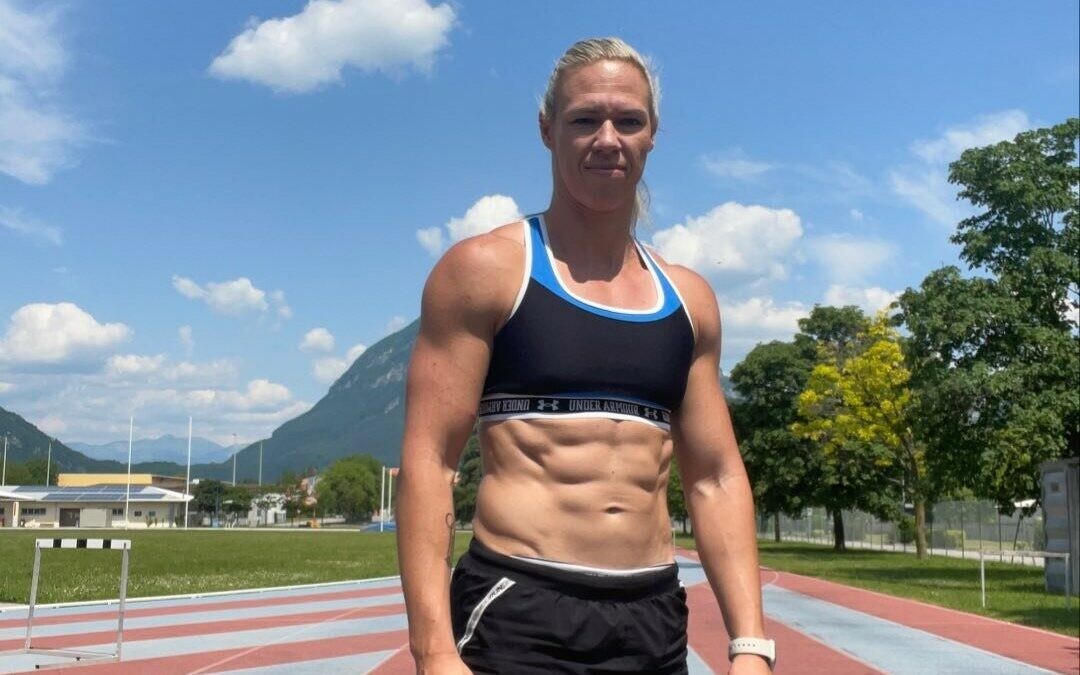
As a consequence of the recent violation, all of Horn’s results after June 18, 2022, have been DQ’d, including victories in several World Athletics Continental Tour events and a South African national championship in the 100m.
In 2018 Horn became the first South African woman to break the 11-second barrier in the 100m with a time of 10.98. However, her career now faces a significant setback, as she will be ineligible for competition until 2029.
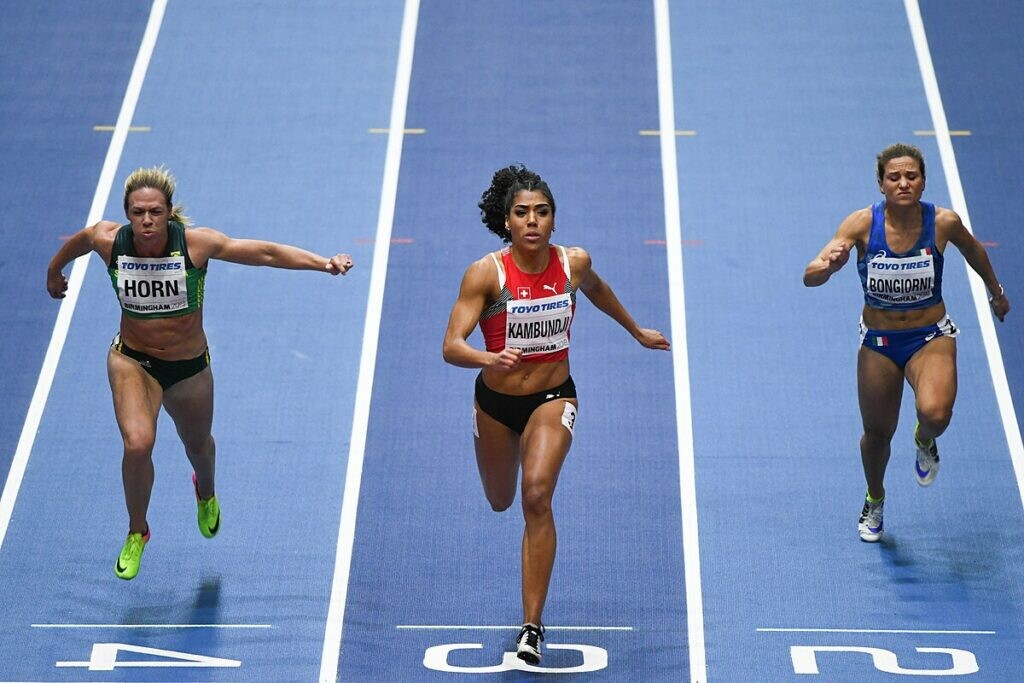
Following her previous ban, Horn came back to represent South Africa in the women’s 100m at the 2022 World Athletics Championships. Additionally, she won a bronze medal in the 100m at the 2022 African Championships in Mauritius, just two weeks before her positive test in Spain. Throughout her senior career, Horn has been the top female sprinter for South Africa, participating in five world championships and the Rio 2016 Olympic Games.
She has also earned accolades such as 4x100m relay gold and 100m silver at the 2016 African Championships in Durban, South Africa.
(08/04/2023) ⚡AMPby Running Magazine
Runners: alleviate your knee pain with these strength exercises
As any runner knows, knee pain can be a bothersome and common issue, and it can interfere with performance. Often, it’s tempting to ignore the pain and overlook the potential consequences, but neglect will only make things worse. One of the most common reasons for developing knee pain is neglecting foot and ankle mobility, which can increase stress on the knee joints.
David London, a registered physiotherapist at The Runners Academy in Toronto, shares several exercises to help you alleviate your knee pain and strengthen lower leg mobility. “You have to be proactive to get the most out of your body,” says London. “Being proactive translates to better running.”
“If you have no range of motion in these areas, your knees will take a beating,” London points out. “A way to test your range of motion is by doing a few deep squats. You want to be able to fully go down without discomfort.”
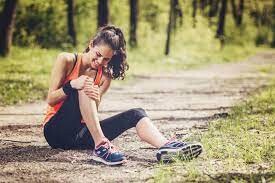
In the video, London sheds light on issues such as improper form, overuse and muscle imbalances, sharing insight and demonstrating several leg-focused exercises to address discomfort and strengthen muscles around the knee.
“Strong hip muscles, including the glutes, hip abductors and hip flexors, help stabilize the pelvis and stress on the knees while running,” says London. “Ankle mobility is also crucial for distributing forces evenly throughout the lower extremities.” Strong and well-balanced hips and ankles can contribute to helping the lower body move more efficiently.
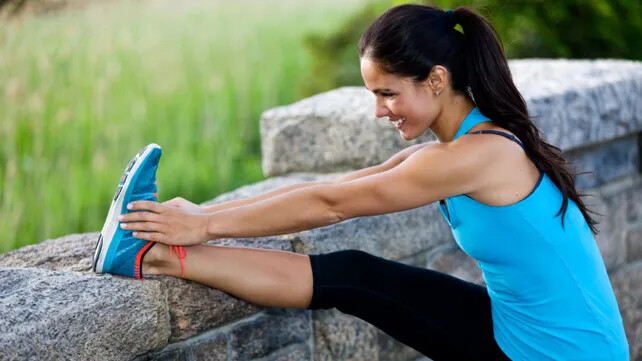
Adding a short routine that focuses on strengthening and mobilizing the hips and ankles is essential for preventing injuries and enhancing your running performance. London notes that just giving attention to these areas can help with pain-free running and efficient movement throughout their lower body, protecting the knees in the process.
David London is a 28-year-old registered physiotherapist at The Runners Academy in Toronto who studied nutritional science at the University of Toronto, then completed an MSc in physiotherapy at Dalhousie University. He is an avid runner, soccer and ultimate player, with the goal to promote an active lifestyle.
(08/04/2023) ⚡AMPby Marley Dickinson
Olympic champion Athing Mu doubtful for 2023 World Athletics Championships
Defending 800m champion Athing Mu is contemplating the possibility of forgoing the 2023 World Athletics Championships to concentrate her training efforts on preparing for the Paris 2024 Olympics.
The Tokyo 2020 Olympic gold medalist finished second in the 1,500m at the U.S. National Trials last July, behind Nikki Hiltz. Despite this, she declared her intention to focus on the 800m in Budapest.
However, on Wednesday (2 August) her coach Bobby Kersee said Mu’s participation in the Worlds is still a decision they are mulling over.
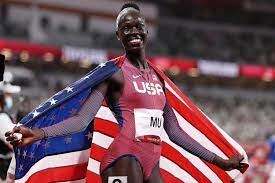
“It’s in our control if we decide we’re just going to go ahead and train through this year and focus on next year, then that’s what we’re going to do,” he told LA Times.
“The training is going well but our thought process, openly, is that we’re going to just train here in L.A. for the next two weeks and the next time she gets on the plane it’ll either be on vacation or to Budapest.”
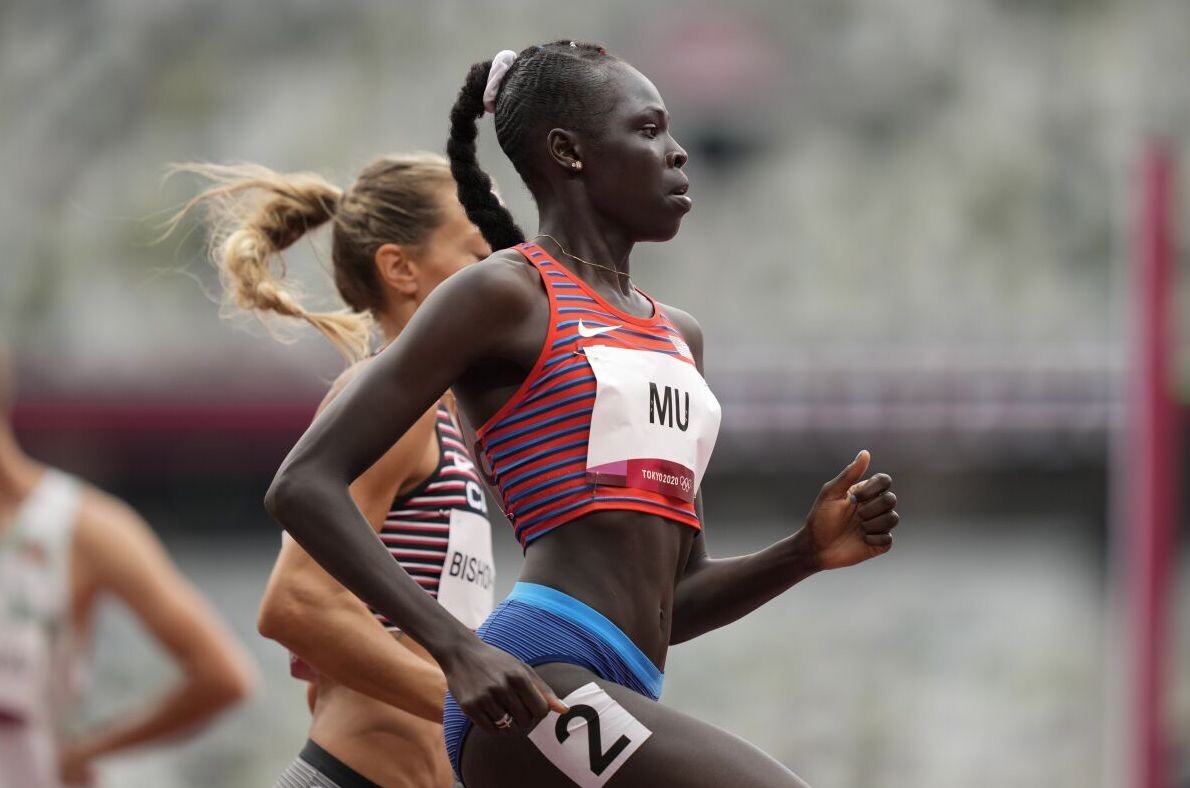
The 21-year-old, who won the 800m gold in Oregon last year, has even withdrawn from a build-up race at the Ed Murphey Classic in Memphis, Tennessee. Mu was initially scheduled to compete in the 400m this weekend.
Throughout this season, she has only participated in three races: the 800m race she triumphed in at the NYC Grand Prix in June, as well as the 1,500m qualifying race and final at the U.S. Championships.
Should she decide not to compete in Budapest, Team USA, which has the opportunity to field four runners, will feature Nia Akins, the Trials winner, along with Raevyn Rogers and Kaela Edwards, who secured second and third positions, respectively.
Mu's absence will elevate Olympic and world silver medalist Keely Hodgkinson of Team GB, as well as Kenya'sMary Moraa, the reigning Commonwealth Games champion and third-place finisher at the 2022 Worlds, as the favorites for the gold in Budapest.
(08/04/2023) ⚡AMPWorld Athletics Championships Budapest 23
From August 19-27, 2023, Budapest will host the world's third largest sporting event, the World Athletics Championships. It is the largest sporting event in the history of Hungary, attended by athletes from more than 200 countries, whose news will reach more than one billion people. Athletics is the foundation of all sports. It represents strength, speed, dexterity and endurance, the...
more...92-year-old grandmother becomes oldest woman to finish a marathon
A grandmother has officially run her way into the Guinness World Records as the oldest woman to complete a marathon. Mathea Allansmith of Koloa, Hawaii, has had her record-breaking run at December’s Honolulu Marathon ratified, an effort that saw her complete the 42.2-km distance in 11 hours, 19 minutes and 49 seconds minutes at the age of 92 years and 194 days. She completed the course in 10 hours and 48 minutes at age 91 the previous year.
Allansmith, who has since turned 93, told Guinness World Records this week that she hasn’t slowed down since her record-breaking run in Hawaii. “I train year-round but increase the mileage starting 18 weeks before a marathon,” she said. “
The pace and number of miles per training day are going to shift around but no matter what, I’ve got my running shoes on and I’m out the door six days per week. These days, on average, I run 36 miles per week.”
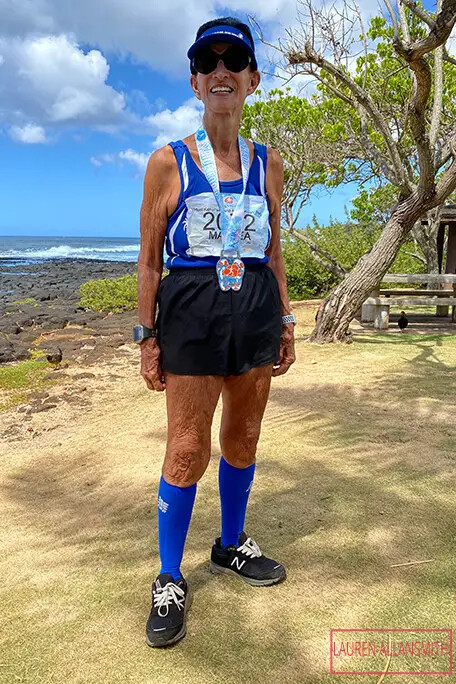
The retired doctor, who began running at age 46, noted her career as a physician drove home the benefits of a healthy diet and an active lifestyle on body and mind. “I see the direct connection between moving and health. … I’d say that my healthy lifestyle has allowed me to maintain a very high quality of life,” she said.
Adding to the thrill of breaking the world record, she said, was being able to do it on a course she so enjoys. “The Honolulu Marathon is my favourite marathon, partly because they don’t close the gate at a certain time, which allows even the slowest runners to finish the race. It’s one of the best-executed races. Fantastic registration, set up and management makes it a joy to participate in,” said Allansmith.
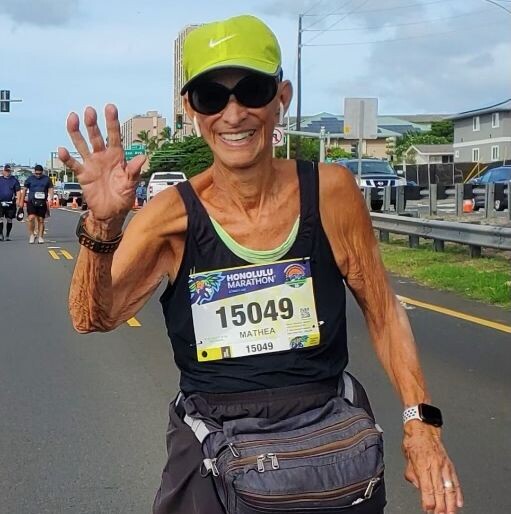
“There were several groups of people filming and cheering me on, even though I crossed the finish line some 11 hours after the start of the race. I felt an enormous sense of accomplishment and joy.”
Allansmith said she plans on running marathons for as long as possible. She added she hopes her recent world record won’t be her last, noting she plans on attempting to break the records for the oldest person to complete a 10K (female) and the oldest person to complete a half-marathon (female) within the year.
(08/04/2023) ⚡AMPby Paul Baswick
Honolulu Marathon
The Honolulu Marathon’s scenic course includes spectacular ocean views alongside world-famous Waikiki Beach, and Diamond Head and Koko Head volcanic craters.The terrain is level except for short uphill grades around Diamond Head. ...
more...Stacy Ndiwa debuts World Marathon Majors in Chicago
Seven months after winning the Los Angeles Marathon, Stacy Ndiwa will be returning to American soil in search of her first World Marathon Majors title at the Chicago Marathon on October 8.
The former Commonwealth Games 10,000m silver medalist, will be up against top marathon runners across the world led by the defending champion Ruth Chepngetich.
Chepngetich has a personal best of 2:14:18. Another Kenyan Joyciline Jepkosgei (2:17:43) will also be competing.
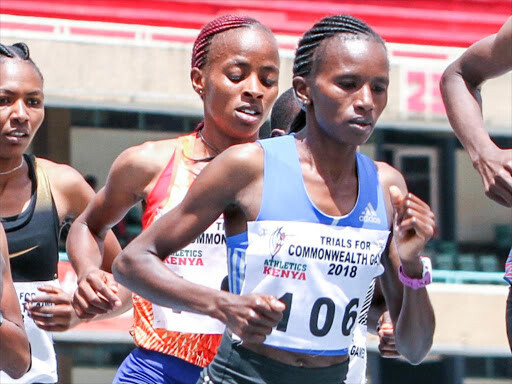
Ndiwa, who is now training in Iten, said her preparations are in top gear and she is hoping to return good results.
“This will be my first time to compete in World Marathon Majors and I am ready for the world,” she said.
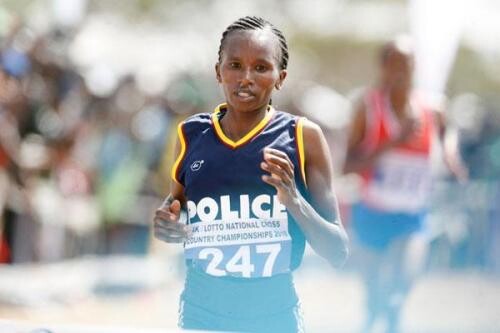
The former Africa 10,000m champion made her debut in the 42km race last year, placing fourth at the Istanbul Marathon in 2:31.53 and went ahead to win the Los Angeles Marathon in 2:31.00 in March last year.
In May, Ndiwa won the second edition of the Iten 15km Road race and went ahead to finish second at the Boston 10km in 31:25 behind champion Hellen Obiri (32:21) with Sheila Chepkirui (31:27) third in an all-podium Kenyan sweep.
“This time, I have had a very busy schedule and I need to crown it all by posting better results in Chicago,” said the athlete who compete for the National Police Service.
“This will be an avenue for me to enter into the big marathon big league. Competing at the World Majors Marathon is not a walk in the park and I really need to work hard,” she said.
Others in the race will be the Ethiopian quartet of Genzebe Dibaba (2:18:05), Tigist Girma (2:18:52), Sutume Kebede (2:18:12) and Ababel Yesheneh (2:20:51).
Emily Sisson (2:18:29) will lead the home team consisting of Des Linden (2:22:38), Emma Bates (2:23:18), Aliphine Tuliamuk (2:24:37), Nell Rojas (2:24:51), Molly Seidel (2:24:42), Dakotah Lindwurm (2:25:01), Sara Vaughn (2:26:23), Gabriella Rooker ( 2:27:38), Diane Nukuri (2:27:50) and Maggie Montoya (2:28:07).
Reigning London Marathon champion Sifan Hassan (2:18:33) from the Netherlands will also be in the contest.
(08/03/2023) ⚡AMP
by Emmanuel Sabuni
Bank of America Chicago
Running the Bank of America Chicago Marathon is the pinnacle of achievement for elite athletes and everyday runners alike. On race day, runners from all 50 states and more than 100 countries will set out to accomplish a personal dream by reaching the finish line in Grant Park. The Bank of America Chicago Marathon is known for its flat and...
more...Unleash Your Inner Runner on These Five Amazing California Trails
California boasts some of the most stunning trails in the world. The correct jogging trail can make all the difference in your training, whether you are a seasoned pro or a novice. The topic of staying active and sports, in general, has never been more prominent at present, especially with the sun shining and the new NFL campaign right around the corner.
Numerous well-known online bookmakers have made an effort to profit from this popularity by offering a variety of casino slots for sports fans. Soccermania, a game geared toward football lovers, may be something you'll like if you're eagerly anticipating the aforementioned return of the sport.
The slot game allows you to choose from the 2022 World Cup teams, transporting you into the world of football through immersive animations. And following a run in the scorching California sun, such games may prove to be the ideal way to unwind.
But if you frequently go for runs in California, which routes should you be considering? In this article, we'll explore some of California's best running trails and give you all the information you need to choose the ideal running location for you.
Muir Woods Trail in Marin County
Muir Woods Trail in Marin County is truly a runner's paradise, with countless reasons why it's considered one of the best running spots. A standout feature is the stunning scenery, as you'll be surrounded by majestic redwoods, providing an awe-inspiring view that is unparalleled. The trail itself is well-maintained, ensuring easy navigation without the risk of getting lost in the forest. Moreover, you'll enjoy a peaceful and serene experience, away from the hustle and bustle of the city, as traffic is minimal along this route.
Mount Tamalpais State Park in Marin County
Mount Tamalpais State Park offers a breathtaking perspective of the San Francisco Bay Area, and the trail network caters to runners of all abilities with a variety of terrains and challenges. The legendary Dipsea track, a strenuous and beautiful track that extends 7.4 miles from Mill Valley to Stinson Beach, is available for running.
As an alternative, consider hiking the routes that lead to picturesque viewpoints like Mount Tamalpais' East Peak or West Peak. The opportunity to run in the shadow of old-growth redwood trees is one of the special features of this state park. Take your running gear, then, and head to Mount Tamalpais State Park for a memorable and beautiful running experience.
Bay Area Ridge Trail
375 miles of the San Francisco Bay Area's slopes and hillsides are traversed by the Bay Area Ridge Trail. If you are looking for a challenging workout, this beautifully maintained trail starts in an urban setting, but quickly enters stunning natural landscapes. You can enjoy stunning Bay Area views while running this track, and if you're lucky, you might even spot some wildlife. Although the route is accessible year-round, the greatest seasons to go are winter and spring when the mountains are covered in wildflowers.

Griffith Park in Los Angeles
Griffith Park boasts an extensive network of trails, catering to both beginners and seasoned runners. The awe-inspiring views of the Hollywood Hills and the bustling cityscape serve as a remarkable source of motivation during your run. Not to mention, the park is also home to notable landmarks like the Griffith Observatory, allowing you to blend your workout with a touch of culture and immerse yourself in the park's natural splendor.
Moreover, Griffith Park offers a range of amenities, including water fountains and restrooms, ensuring that runners can stay refreshed and hydrated throughout their workout. It's no surprise that Griffith Park is widely regarded as one of SoCal's most scenic and accessible spots for a satisfying run.

Santa Monica State Beach in Los Angeles
Santa Monica State Beach is the ideal location for you if you enjoy running by the sea. The Pacific Ocean delivers a pleasant, invigorating air as you run down the three miles of white sand beach. You may see some famous sites while running along the beach, including Venice Beach, Muscle Beach, and the Santa Monica Pier. The best time to go is in the winter to avoid the crowds and the scorching temperature, although a run at dusk in the summer is as amazing.
Conclusion
Going to the trail and running your heart out is a fantastic way to stay in shape while being immersed in nature. The five trails described throughout this article are all great places for long runs on varied terrain. With the combination of mountainous regions, beach sides, and scenic city views, there’s something for everyone in California.
In whatever trail you choose to indulge in, remember that every step will bring you closer to unwinding from the stresses of everyday life and closer to becoming one with nature. So put those running shoes on and unleash your inner runner today!
(08/03/2023) ⚡AMPAmputee ultrarunner Jacky Hunt-Broersma takes on 5,250 kilometer challenge for cancer research
Bladerunner Jacky Hunt-Broersma celebrated being 21 years cancer-free by setting out on a new challenge: the Arizona-based athlete and coach will be running a half marathon a day (21.1K a day) from Aug. 1 until she reaches 5,250 kilometers. Aug. 1 is both the athlete’s amputee anniversary and marks 21 years of being cancer-free, she shared on social media, and this challenge is to honor cancer survivors, those fighting cancer and those who have lost their lives.
Dubbed the ‘Doing Hard Things’ project, Hunt-Broersma chose the distance to represent the number of people fighting cancer each day.”I had Ewing sarcoma,” the runner shared. “I was one of the lucky ones to survive and I’m so grateful to be alive and be able to move. I think movement is so important to not only keep us healthy but also help us cope mentally.”
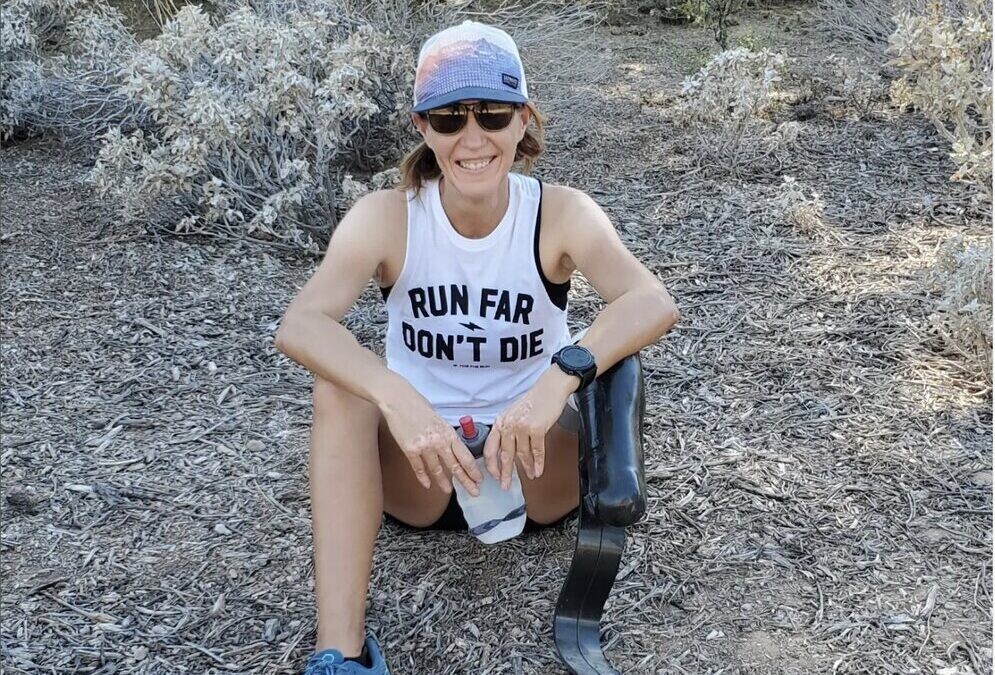
Hunt-Broersma is raising funds for cancer research and will be dedicating each day to someone fighting cancer or who has lost their life to the disease, and guesses it will take her about 250 days to complete the distance.
Hunt-Broersma lost her lower left leg to Ewing sarcoma, a rare form of cancer that affects the tissue around bones, in 2002. While she always lived a healthy lifestyle, she didn’t start running until 2016, when she signed up for a 5K race. Taking on challenging adventures is not new for Hunt-Broersma: she ran 104 marathons in 104 days in 2021, raising over $200,000 for amputee runners, and ran 50K a day for two weeks in July 2022.
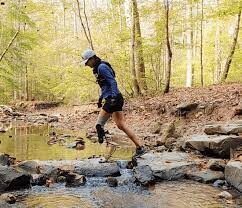
The name of her latest project comes from a phrase that carried her through her 104 marathon streak. “When I was running the 104 marathons in 104 days I’d often need encouragement and I’d whisper to myself ‘you can do hard things’ to keep me going when it got really hard,” she explains. “At one point during the marathons, I started believing in myself and that whisper changed to a louder mantra: ‘I can do hard things, I can do hard things.’ ”
The athlete invites runners and walkers of all levels to come out and join her on her daily half-marathon, and will be sharing the location and times of her runs on social media. Runners can show their solidarity from afar by joining the Strava group she has created, called “I can do hard things.” Hunt–Broersma wants everyone to feel included, she shared on Instagram. “I’m hoping it will create an encouraging space where everyone will feel welcome.”
(08/03/2023) ⚡AMPby Keeley Milne
Defending champions Fraser-Pryce and Jackson lead Jamaican team for WCH Budapest 23
Sprinters Shelly-Ann Fraser-Pryce and Shericka Jackson, the defending champions at 100m and 200m respectively, feature on Jamaica’s team for the World Athletics Championships Budapest 23 on August 19-27.
The duo filled the top two places in the 100m and 200m in Oregon last year, with Jackson taking silver in the 100m and Fraser-Pryce finishing runner-up in the 200m. Fraser-Pryce, who has competed sparingly this season due to a slight injury earlier in the year, will be vying for a historic sixth world 100m title.
World leader Rasheed Broadbell and Olympic champion Hansle Parchment have both been named in the men’s 110m hurdles, while world leader and world U20 record-holder Jaydon Hibbert will contest the triple jump.
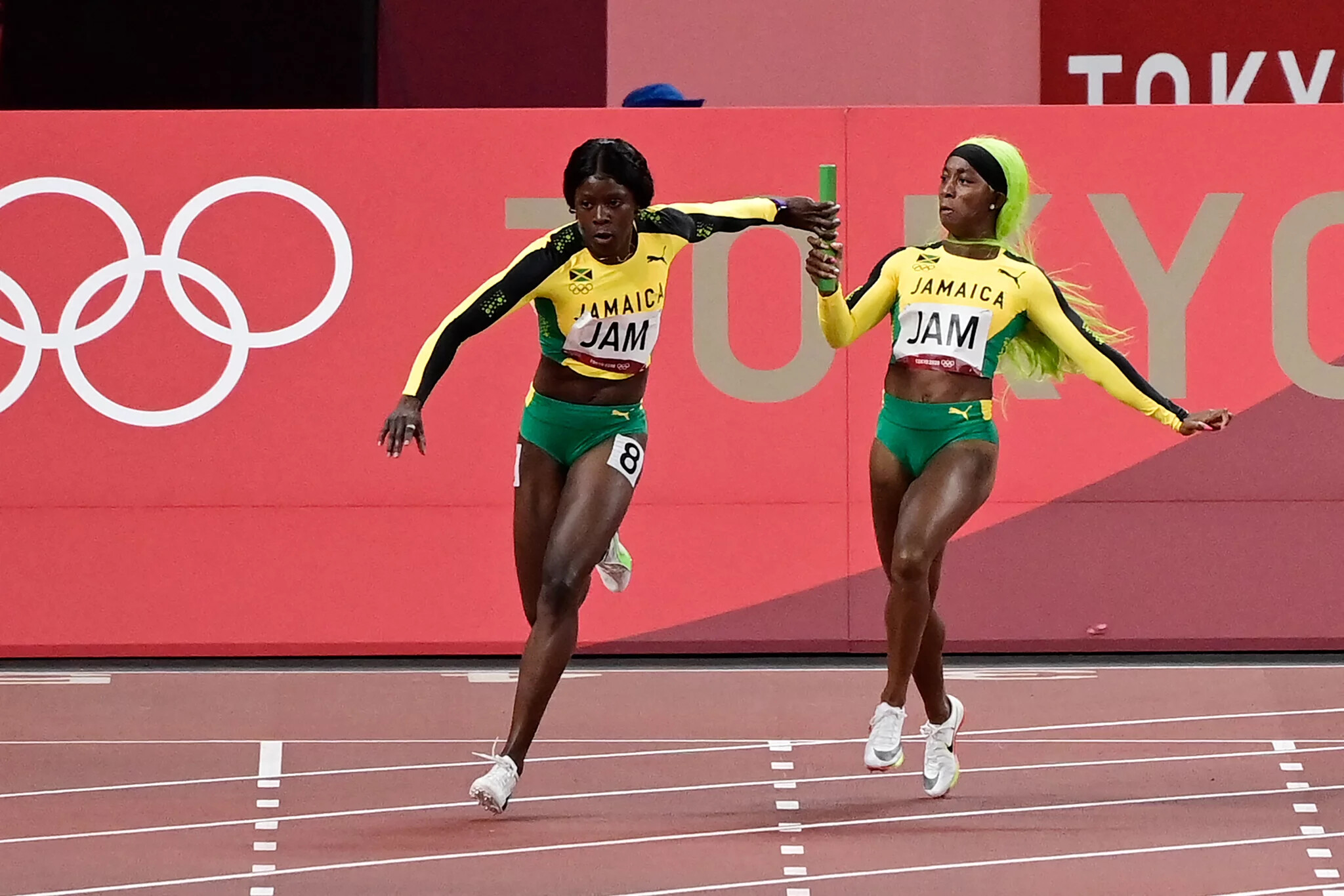
Jamaican team for Budapest
WOMEN
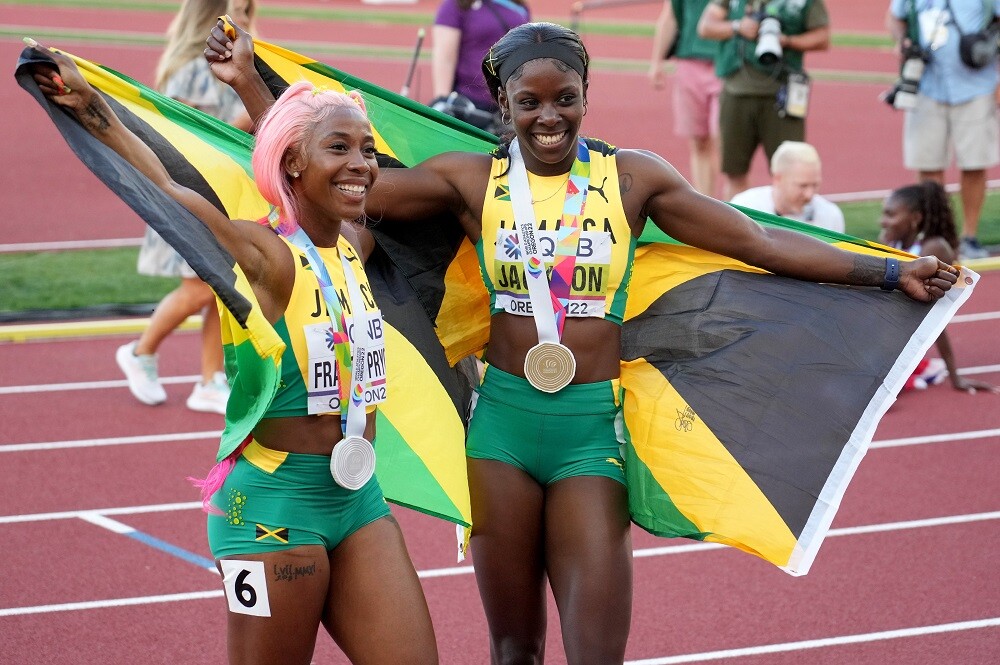
100m: Shashalee Forbes, Shelly-Ann Fraser-Pryce, Shericka Jackson
200m: Shelly-Ann Fraser-Pryce, Shericka Jackson, Natalliah Whyte
400m: Candice McLeod, Nickisha Pryce, Charokee Young
800m: Natoya Goule-Toppin, Adelle Tracey1500m: Adelle Tracey
100m hurdles: Ackera Nugent, Megan Tapper, Danielle Williams
400m hurdles: Rushell Clayton, Andrenette Knight, Janieve Russell
High jump: Lamara Distin, Kimberly Williamson
Long jump: Tissana Hickling, Ackelia Smith
Triple jump: Shanieka Ricketts, Ackelia Smith, Kimberly Williams
Shot put: Danniel Thomas-Dodd
Discus: Samantha Hall
Hammer: Nyoka Clunis
4x100m: Shashalee Forbes, Shelly-Ann Fraser-Pryce, Shericka Jackson, Natasha Morrison, Elaine Thompson-Herah, Natalliah Whyte, Briana Williams
4x400m: Candice McLeod, Nickisha Pryce, Janieve Russell, Ronda Whyte, Shiann Salmon, Charokee Young
MEN
100m: Ryiem Ford, Oblique Seville, Rohan Watson
200m: Rasheed Dwyer, Andrew Hudson
400m: Sean Bailey, Zandrion Barnes, Antonio Watson
800m: Navasky Anderson
110m hurdles: Orlando Bennett, Rasheed Broadbell, Hansle Parchment
400m hurdles: Roshawn Clarke, Jaheel Hyde, Assinie Wilson
High jump: Romaine Beckford
Long jump: Tajay Gayle, Carey McLeod, Wayne PinnockTriple jump: Jaydon Hibbert
Shot put: Rajindra Campbell
Discus: Fedrick Dacres, Traves Smikle, Roje Stona
4x100m: Ackeem Blake, Michael Campbell, Ryiem Ford, Oblique Seville, Tyquendo Tracey
4x400m: Sean Bailey, Zandrion Barnes, Demish Gaye, Malik James-King, Jevaughn Powell, Antonio Watson
Mixed 4x400m: D’Andre Anderson, Rusheen McDonald, Joanne Reid, Stacy-Ann Williams.
(08/03/2023) ⚡AMPby World Athletics
World Athletics Championships Budapest 23
From August 19-27, 2023, Budapest will host the world's third largest sporting event, the World Athletics Championships. It is the largest sporting event in the history of Hungary, attended by athletes from more than 200 countries, whose news will reach more than one billion people. Athletics is the foundation of all sports. It represents strength, speed, dexterity and endurance, the...
more...How sore should you be after a run?
Most of us have experienced tender or stiff muscles after a hard workout, especially after adding new or challenging training. Where muscle soreness is concerned, how much is too much, and when do we need to scale back our training and opt for rest? We checked in with British sports science consultant Jo Clubb.
Runners are notorious for pushing through suffering in their training. Is soreness that eases off during a run OK?
Yes. DOMS or Delayed Onset Muscle Soreness (caused by microscopic damage to muscle fibres as a result of training) is a natural part of the training process and a signal to the body that it needs to adapt and get stronger. DOMS generally occurs one to three days after training. Depending on your training program and your body’s response, you may still be sore on your next run, but exercising (particularly with a thorough warmup) may help to alleviate some of this soreness.
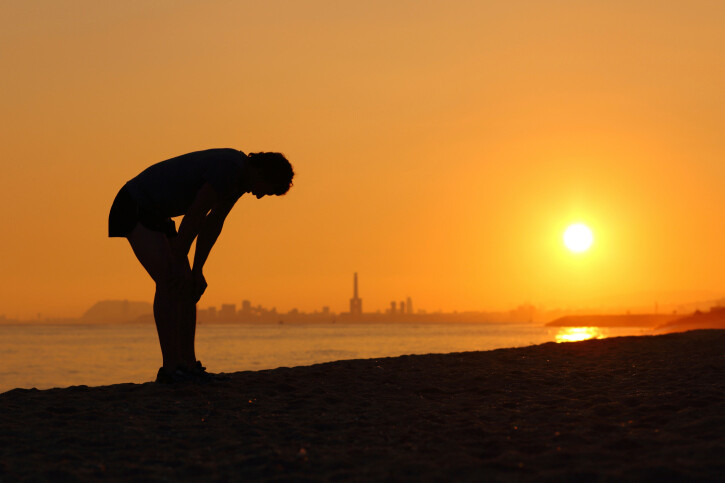
Should a person always feel sore after a hard workout?
If you’re never experienced DOMS in your training, perhaps you’re not training hard enough! It is equally important that you’re not just constantly exercising through soreness. We are always seeking the optimal balance between training and recovery. Without recovery, the body will not adapt, performance will plateau or worsen, and the risk of injury and illness increase. While it might not feel like it, rest days are sometimes the best thing you can do for your running.
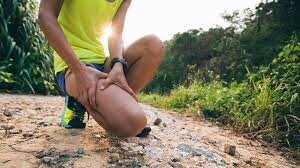
Where should runners draw the line on soreness?
If soreness is affecting performance or causing extreme discomfort, the body is trying to communicate that it needs more rest. Poor sleep, getting sick often, irritability and bad moods, plateauing progress and lack of motivation can all be signs of overreaching or overtraining.
Many runners use RPE (Rating of Perceived Exertion) to get a subjective measure of your training load. Pair this with your own ratings of sleep, fatigue, mood and muscle soreness to see how your body is responding. Even with elite athletes, sports scientists use subjective measures to gauge how the athlete is responding to the program.
When should a runner be concerned about what they’re feeling?
A feeling of pain (rather than soreness) can be a red flag, and time to consider consulting a medical practitioner. Think of soreness as more of a tender, dull ache that you feel within a whole muscle group, and pain as a sharper, more specific sensation.
Pain is normally the nervous system trying to protect the body from something that is amiss. Pay attention to general soreness not subsiding after three or so days as well as swelling, bruising, wounds or difficulty putting weight on an area.
If you do have an injury, don’t panic–it’s not necessarily the end of training. When elite athletes are undergoing rehabilitation, we embrace it as an opportunity to work on other areas of their physical capacity (while prioritizing and protecting the injury first and foremost).
(08/03/2023) ⚡AMPby Keeley Milne
Jenny Simpson, U.S. mile legend, to race Olympic marathon trials
Jenny Simpson, the most decorated U.S. female miler in history, is moving up in distance and plans to race the 2024 Olympic Marathon Trials on Feb. 3 in Orlando, near where she grew up.
“It’s an easy decision for me to run the marathon Trials in Orlando,” she wrote in an email after making the announcement in an Instagram live video with the Orlando Track Shack. “For a long time I’ve flirted with the idea of going the full distance and with Orlando hosting the Trials, I just can’t miss the chance to go back home.”
Simpson, 36, announced last October that she was shifting focus from the track, where she was a world champion and Olympic bronze medalist in the 1500m, to longer races on the roads.
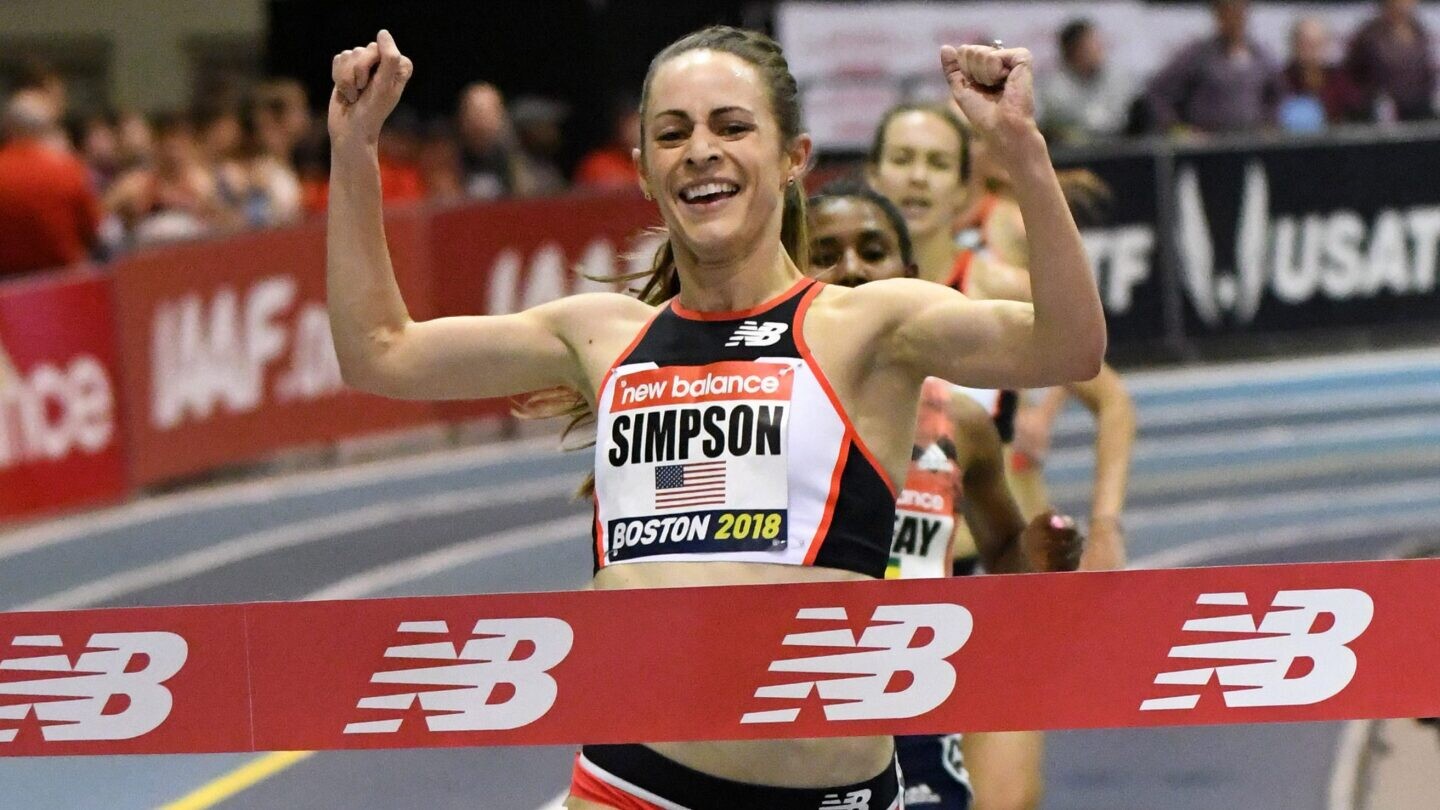
Typically for distance runners that accomplished, it means an eventual move all the way up to the marathon. Simpson messaged then that her chances of racing over 26.2 miles were “51% :).”
A month later, Orlando was announced as the host of the 2024 Olympic Marathon Trials. Simpson’s family moved to Florida when she was in third grade, and she went to high school in Oviedo, which is 15 miles northeast of Orlando.
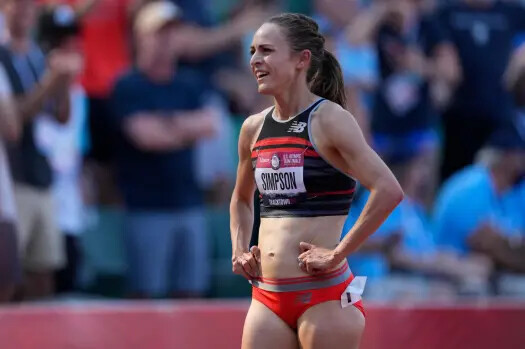
“It’ll be fun to literally come back to the beginnings of my running and take in the scenery of the place where I ran my first few races,” Simpson said in Tuesday’s video.
Simpson’s last track race was at the Tokyo Olympic Trials, where she was 10th in the 1500m final. It was her first time not placing in the top three at a U.S. outdoor championships since 2006 and first time not being on an Olympic team since 2004.
In September 2021, Simpson ran the Cherry Blossom 10-mile road race in Washington, D.C., nearly three times as long as the farthest distance she had raced as a pro up to that point.
She then focused much of her time in 2022 helping her Colorado community heal and rebuild from a late December 2021 fire.
She ran 5km and 10-mile road races late in 2022, then on Jan. 15 of this year placed ninth in the Houston half marathon in 70 minutes, 35 seconds to beat the Olympic Trials qualifying time of 72 minutes. That was her most recent race, according to World Athletics.
Simpson attended the 2020 marathon trials to watch husband Jason run. Jason has not qualified for next year’s trials yet but is still hopeful.
One U.S. woman has made Olympic teams in both the 1500m and the marathon in her career -- Francie Larrieu-Smith, who made her first team in the 1500m at age 19 and her last in the marathon at 39, according to Olympedia.org.
Simpson hasn’t said whether she will race a marathon in the fall or if the trials will be her debut at the distance, “but the next six months will be all about getting ready to go the extra 25.2 miles,” she wrote.
The list of marathon trials qualifiers already includes nine of the 15 fastest American women in history. The top three finishers on Feb. 3 will likely make up the Olympic team.
“As I get older, I didn’t want to run out of really good years to give to something that was so intriguing to me for so long,” Simpson said of the marathon. “I’ve accomplished a lot already, and now I can do something that I want to do, not necessarily something that’s going to just objectively, absolutely pay off.”
(08/02/2023) ⚡AMPby Nick Zaccardi
2024 US Olympic Trials Marathon
Most countries around the world use a selection committee to choose their Olympic Team Members, but not the USA. Prior to 1968, a series of races were used to select the USA Olympic Marathon team, but beginning in 1968 the format was changed to a single race on a single day with the top three finishers selected to be part...
more...World Athletics planning a new competition format for 2026
The innovative event aims to maintain the sport's momentum by showcasing the "best of the best" in athletics during non-Olympic and world championship years.
During a media call on Monday, World Athletics president Sebastian Coe provided more insights into a planned new format scheduled to be added to the international athletics calendar in 2026. The innovative event aims to maintain the sport’s momentum by showcasing the “best of the best” in athletics during non-Olympic and non-world-championship years.
Coe highlighted the significance of this new format, stating, “Although 2026 is often referred to as a ‘fallow year’ due to the absence of World Championships or Olympics, the new event aims to offer a fresh and different experience for fans and athletes alike.” The ultimate goal for World Athletics is to incorporate this format into the four-year cycle of athletics competitions.
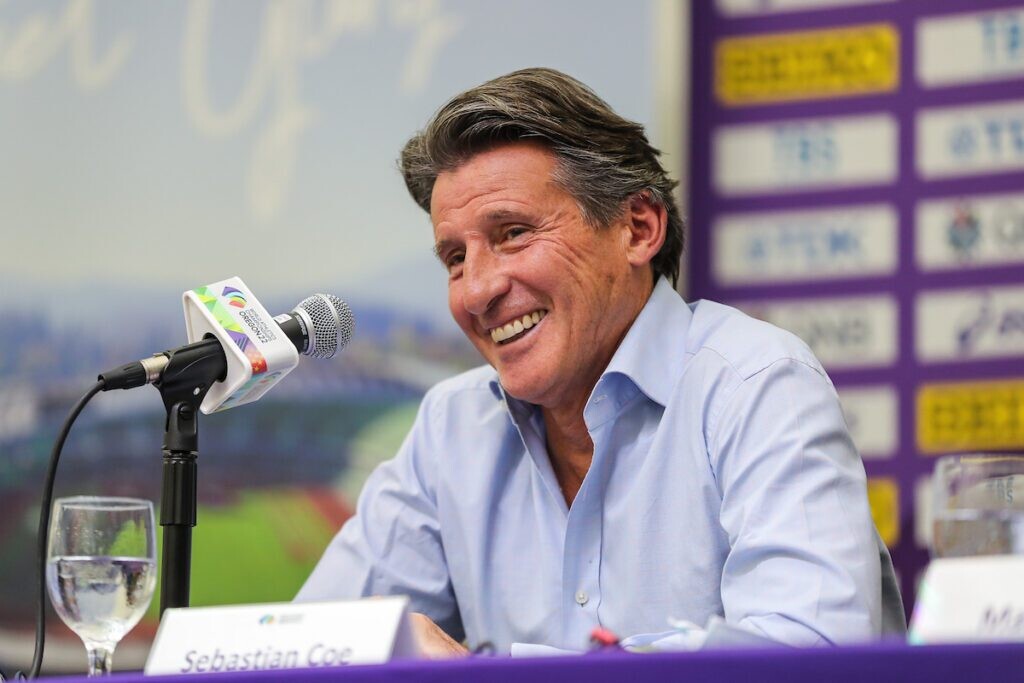
While the exact format is still being fine-tuned and potential hosts considered, the primary focus is to deliver two or three nights of high-quality athletics, featuring the world’s best athletes. The intention is to have smaller fields and no heats or cross-heats, creating an action-packed spectacle specifically designed for television viewers. “We haven’t entirely agreed on the format, and we are still working with potential hosts here, so there’s more to come,” Coe added.
It is speculated that the new format may draw parallels to the existing Diamond League Final, which invites top athletes from each Diamond League meet to compete in a two-day championship event.
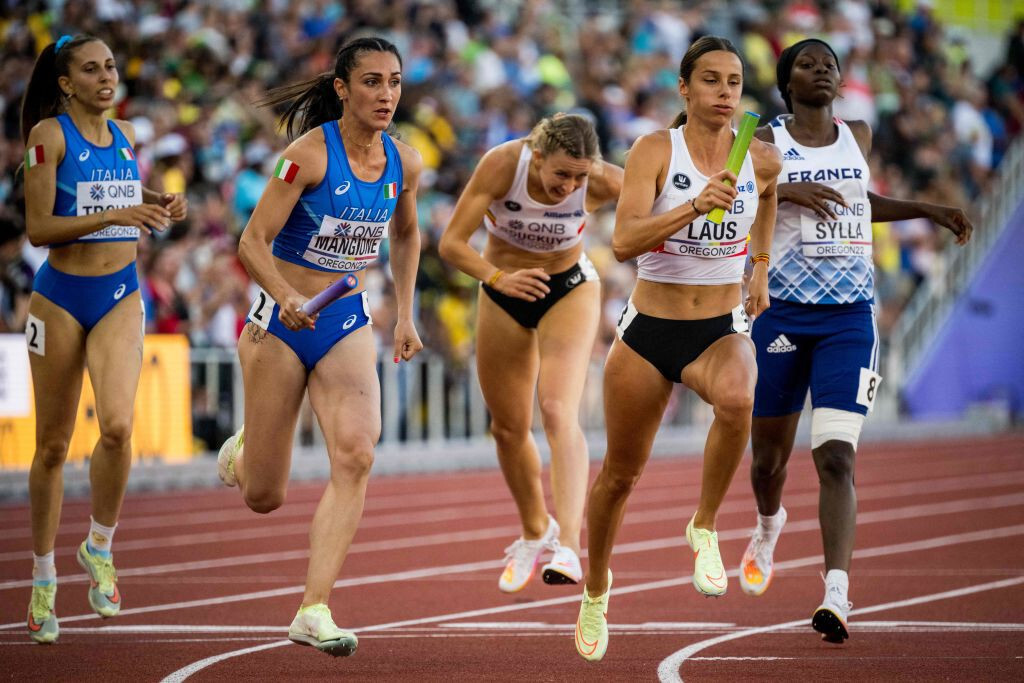
Coe has served as the World Athletics President since 2015 and is set to stand unopposed for a third term at the upcoming World Athletics Congress in Budapest on Aug. 17, ahead of the 2023 World Athletics Championships. Regarding potential investment from countries like Saudi Arabia to enhance the sport’s growth, Coe emphasized the organization is taking a cautious approach, stating, “My default position is that investment from any country or sector looking to enter our sport would be looked at very carefully.” He also pointed out that the executive board has previously declined investments from certain sectors and countries, indicating that any potential investment would undergo thorough evaluation before being accepted.
As athletics enthusiasts eagerly await further details on this new format, the prospect of witnessing a condensed showcase of top-tier athletes and exhilarating performances in 2026 promises to be a game-changer for the sport.
(08/02/2023) ⚡AMPby World Athletics
Ukrainian team prepares for World Athletics Championships
The Ukrainian athletics team will gather in Slovakia this week for a final training camp before travelling to Hungary for the World Athletics Championships Budapest 23, starting in less than three weeks (August 19).
World Athletics’ Ukraine Fund and the International Olympic Committee’s Solidarity Fund have combined to provide training camp accommodation for 40 athletes and officials in Banska Bystrica, Slovakia, which will allow Ukraine’s top athletes to complete their final preparations for their most important competition of the year.
World Athletics has provided additional accommodation for three athletes and their families for an extended period in Bankska Bystrica, from 1 June to 30 September.
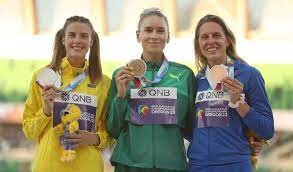
World Athletics President Sebastian Coe said: “We understand how important and inspirational Ukraine’s athletes are to their country at this terrible time and we want to give them every opportunity to compete and excel, despite the great hardship being visited on them and their communities by this horrific war. They have lost so much and the least we can do is help them to keep their athletics dreams alive. I am full of admiration for their fortitude and resilience and I am looking forward to welcoming the Ukrainian team to the National Athletics Centre in Budapest in the coming weeks.”
The general secretary of the Ukrainian Athletic Association Iolanta Khropach offered her “heartfelt thanks” for the “important financial assistance provided during this terrible war in our country”.
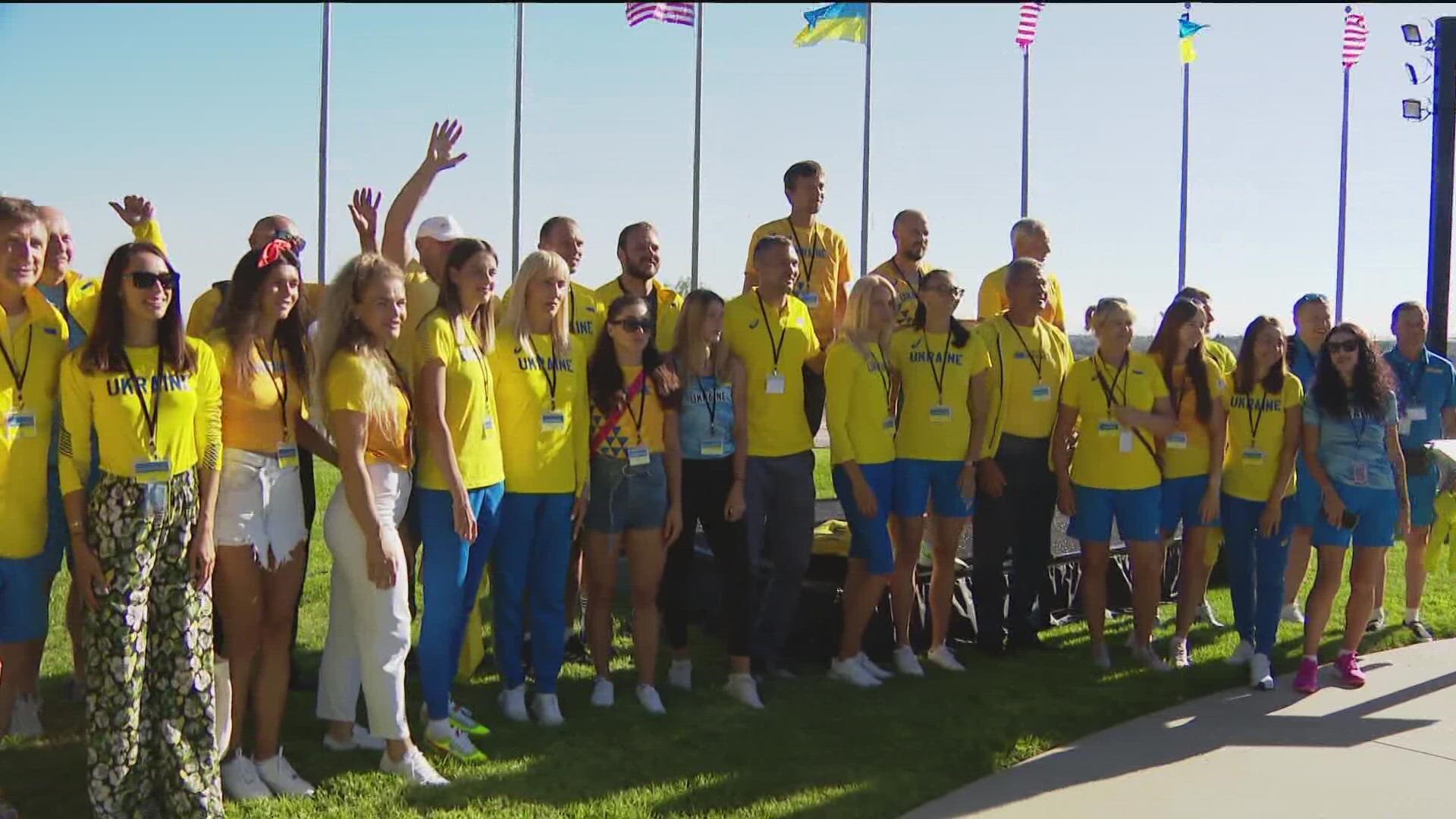
“Your unwavering belief in us has made a profound impact on the life of our team and the opportunities to prepare for world-class competitions,” she said. “Thanks to your support, we have been able to provide the best athletes of the Ukrainian team with the necessary conditions on the final stage of the preparation to the World Athletic Championships in Budapest to achieve their sports goals. We are happy to see your willingness to lend a helping hand in difficult times for us during the war.”
World Athletics and the US Olympic and Paralympic Committee funded a similar programme to help the Ukrainian team prepare for the World Athletics Championships Oregon22 last year, where two athletes emerged as medallists. World indoor champion Yaroslava Mahuchikh won the silver medal in the women’s high jump and Andriy Protsenko won bronze in the men’s high jump.
The IOC contributed an additional US$20,000 to support the Ukrainian team at the World Athletics U20 Championships in Cali last year.
Through its Ukraine Fund, World Athletics distributed more than US$220,000 last year to support Ukrainian athletes preparing for the World Championships and the World Athletics U20 Championships in response to the crisis caused by Russia’s invasion of Ukraine, and is distributing a further US$190,000 this year to support Ukrainian athletes preparing for Budapest.
This fund was launched by World Athletics, the Member Meetings of Diamond League Association and the International Athletics Foundation in April 2022 with the purpose of assisting professional athletes, immediate family members and their support personnel affected by Russia’s invasion of their home country.
This is in addition to the Solidarity Fund of US$7.5 million established by the International Olympic Committee (IOC) in February 2022 to support Ukrainian athletes and the Ukrainian Olympic community.
(08/02/2023) ⚡AMPby World Athletics
World Athletics Championships Budapest 23
From August 19-27, 2023, Budapest will host the world's third largest sporting event, the World Athletics Championships. It is the largest sporting event in the history of Hungary, attended by athletes from more than 200 countries, whose news will reach more than one billion people. Athletics is the foundation of all sports. It represents strength, speed, dexterity and endurance, the...
more...Struggling for a new PB? Your genetics could be to blame
You’re doing everything right–nailing all your workouts, fueling properly and not going too hard on your easy days–but the time on the finish clock just won’t budge. What gives? According to a new study, it might be because of your genetics. Recent research out of the University of Essex in the U.K. discovered that less than 31 per cent of people have the genetic makeup that allows them to maximize their training and see the best results.
The study
The eight-week study involved 45 participants (25 men and 20 women) between 20 and 40 years old. The participants completed the Cooper 12-minute Run Test at the beginning of the study, in the middle and again at the end. This test requires participants to run as far as they can in 12 minutes.
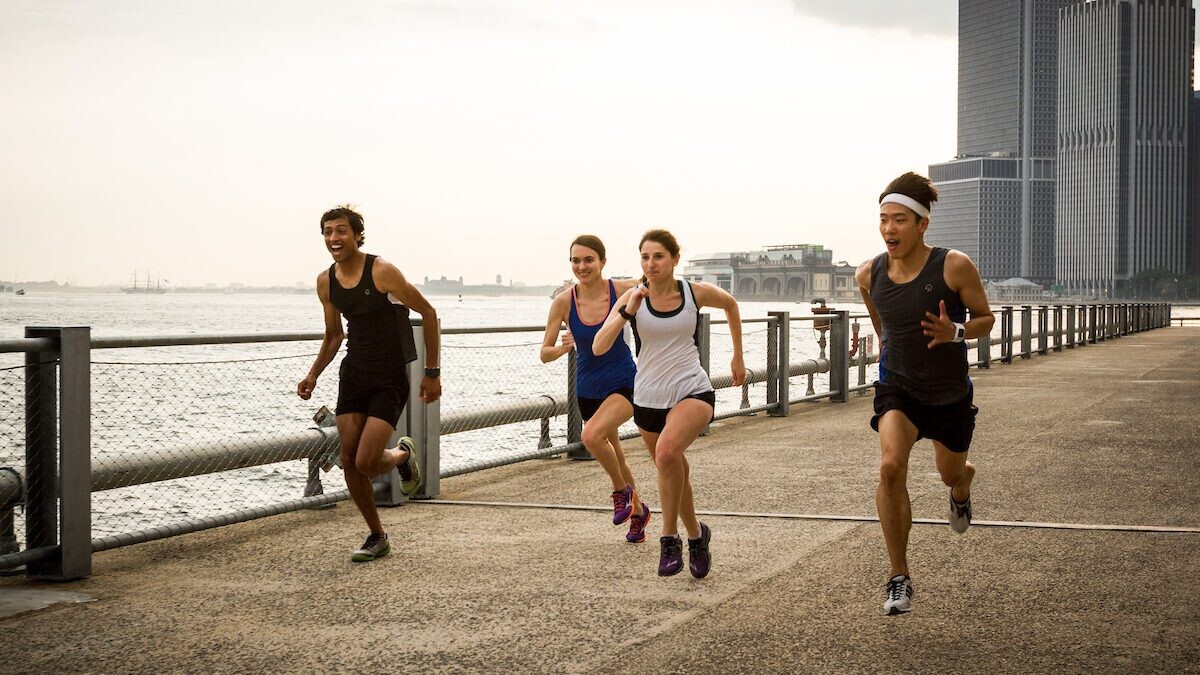
Throughout the eight weeks, each participant completed the same training protocol–three weekly runs, with the duration increased from 20 to 30 minutes over the course of the eight-week study.
After performing a genotype analysis and statistical analysis on participants, researchers discovered that each of the top performers had a combination of key gene variants called single nucleotide polymorphisms (SNPs) that were linked to running performance. Participants who had these SNPs improved by an average of 11.5 per cent over the eight-week period, while those who did not saw little to no improvement, even after following the same training program.
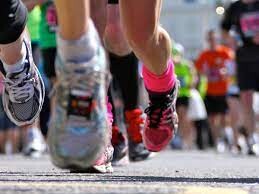
What does this mean for runners?
There are a few key takeaways from this study, the first and perhaps most obvious being that yes, there is a genetic component to success in running. If you are not one of the lucky few who have these SNPs, though, it doesn’t necessarily mean you’ll never snag a new PB.
While this study does highlight the need for favourable genetics if you want to be a prolific runner, there are a few caveats. The first is that eight weeks is a very short training block. While it’s true that someone with natural running talent will likely see more significant improvements in a short time compared to the rest of us, that doesn’t mean that someone without those genetics won’t see improvement over a longer period. It may take several months of consistent, dedicated training for you to see the same results, and there’s nothing wrong with that.
Secondly, the training program that each participant followed during the study only involved steady-state running, which may not be the optimal way to train for everyone. Some runners respond more to other forms of training, like speedwork or hill repeats, so if you’re feeling stuck, it may be time to switch things up.
Finally, it’s important to remember that while getting a shiny new PB is fun, there are so many other reasons to get out and run. Run because it makes you feel good, run because it improves your health, run because it makes you a better spouse, parent, friend or co-worker–or all of the above. The enjoyment you get from running will last far longer than the afterglow of a new personal best, anyway.
(08/02/2023) ⚡AMPby Brittany Hambleton
2024 U.S. Olympic Marathon Trials to start at 12 noon
USA Track and Field (USATF) caused a stir on social media on Tuesday after announcing in an email addressed to athletes that the 2024 Olympic Marathon Trials would begin at 12 noon, due to broadcasting rights. The marathon trials are scheduled to take place in Orlando, Fla., on Feb. 3, 2024.
The late start time has already caused worry for many coaches and athletes due to the potential for high temperatures. In February, the average temperatures in Orlando range from a low of 13 C to a high of 23 C, but in recent years, it has not been uncommon for temperatures to soar to 30 C–which would be detrimental to performance and potentially unsafe for elite marathoners.
According to Runners World, the email sent to athletes mentions that the Local Organizing Committee (LOC) in Orlando has extensive experience in planning and executing high-level events and has contingencies in place for any potential challenges, including weather-related ones.
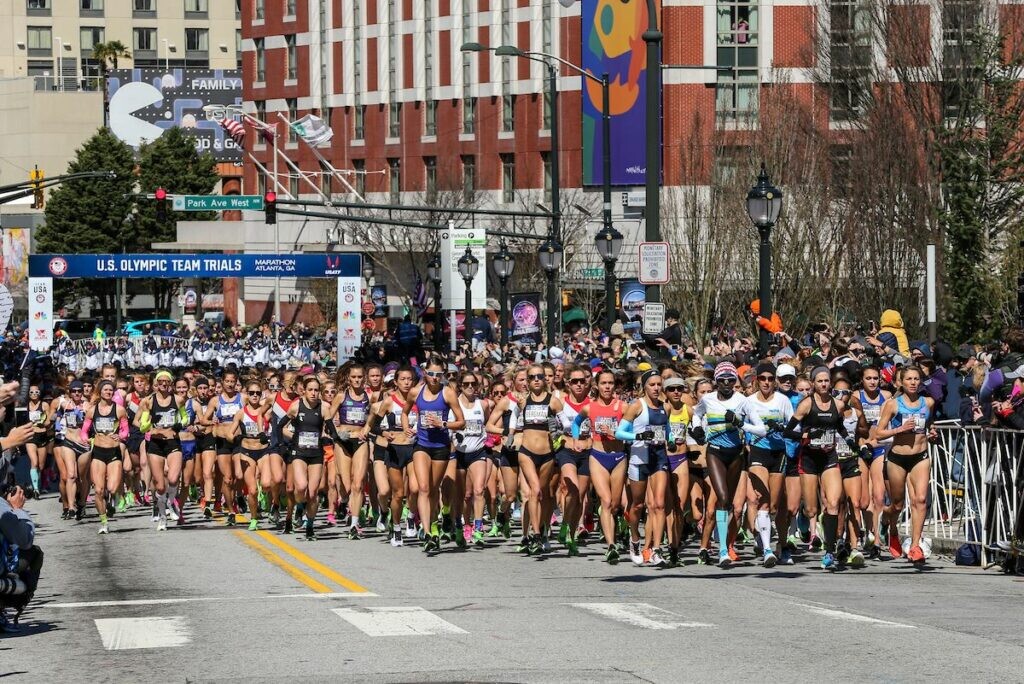
The decision to set the start time at noon is believed to be influenced by executives at NBC, the network broadcasting the event. The email highlights that the race will be televised live on NBC for three hours, providing coverage of the men’s and women’s runners and races.
The Paris Olympic marathon, which is also expected to be warm, is scheduled for Aug. 10–the middle of summer in the French capital. But both the men’s and women’s races are set to begin at 8 a.m. local time. This disparity in start times has added to the concerns raised by the late start for the U.S. Trials in Orlando.
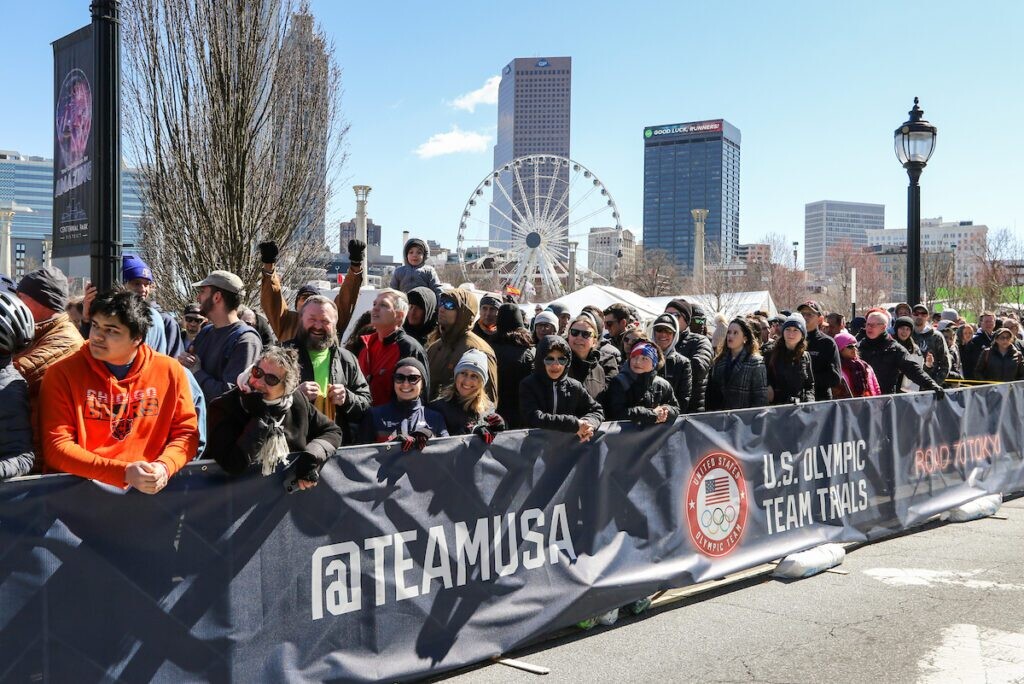
The U.S. Olympic Marathon Trials serves as the selection race for the men’s and women’s Olympic teams that will compete at the Summer Games in Paris. The top three finishers who also meet World Athletics’ qualifying standards will go on to represent Team USA at the Olympics.
Some athletes and coaches have expressed concern, while others seem to be looking forward to it. 2018 Boston Marathon champion Des Linden tweeted: “Warmer temps should slightly minimize the pace of super shoes and reward smarter racing. Count me in!”
U.S. ultrarunner Camille Herron said “We are seven months out from the Olympic Marathon Trials. No excuses to not be prepared for a potentially hot day in Florida.”
Renowned U.S. marathon coach Kevin Hanson, who currently has 13 athletes (eight women and five men) qualified for the U.S. Trials, stressed his disappointment that athletes’ health is not taken into consideration. “There is no amount of TV coverage that is worth the health of our athletes,” Hanson tweeted.
This isn’t the first time USATF has faced criticism for its handling of extreme heat during events. At the 2021 Olympic Track and Field Trials in Eugene, Ore., where temperatures were forecasted to reach highs of 40 C, several events were rescheduled for safety. However, the heptathlon was not, and athlete Taliyah Brooks collapsed on the track due to the heat and later filed a lawsuit against USATF.
In the 2016 Olympic Marathon Trials in Los Angeles, which began at 9 a.m., some athletes struggled on an unusually warm day, with temperatures reaching the mid-70s Fahrenheit. Shalane Flanagan, who placed third in 2:29:19, collapsed at the finish line, and the organizing committee and USATF later faced criticism for not providing adequate water on the course for the athletes.
(08/01/2023) ⚡AMPby Marley Dickinson
2024 US Olympic Trials Marathon
Most countries around the world use a selection committee to choose their Olympic Team Members, but not the USA. Prior to 1968, a series of races were used to select the USA Olympic Marathon team, but beginning in 1968 the format was changed to a single race on a single day with the top three finishers selected to be part...
more...Faith Kipyegon now plans to attack the 40-year-old 800m world record
Her main focus at the moment is to successfully defend her world title when she heads to Budapest later this month.
Triple world record Faith Kipyegon might be targeting the 40-year-old 800m world record if a chance presents itself.
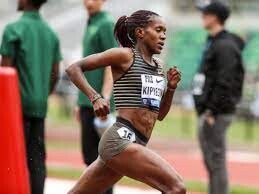
Kipyegon has a personal best time of 1:57.68, which she ran to win the Diamond League Meeting in Doha, Qatar in 2020. The last time she ran the two-lap race was last year during the Trials for the Commonwealth Games and World Championships where she finished.
After three world records, will Kipyegon consider lowering Czechia’s Jarmila Kratochvílova world record time of 1:53.48?
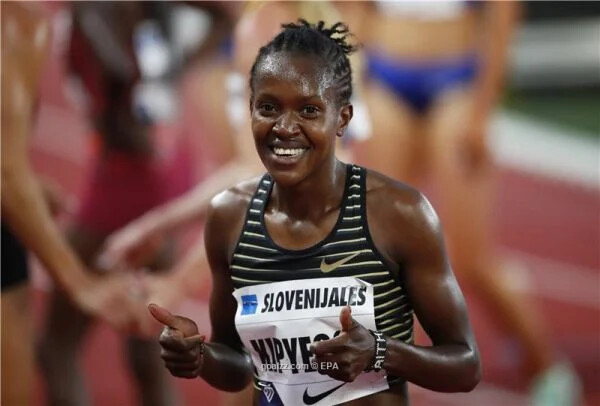
“I don’t know…800m is not easy…but anything is possible. For now, I leave that one for Mary Moraa, she is capable…or Athing Mu and Keely Hodgkinson.
They are all capable of breaking that barrier in the 800m. But if a chance comes whereby I am able to try, I’ll appreciate it,” Kipyegon told Olympics.com.
Her main focus at the moment is to successfully defend her world title when she heads to Budapest later this month.
She admitted to pressure ahead of the event since she will be doubling in the 1500m and 5000m. Her performance at the World Championships will determine greatly whether she will also be doubling at the Paris Olympics.
“I can’t go there like just an athlete, now I have three world records, they expect a lot from me. But going to Budapest, I have to just be myself and run my races and see what will happen at the finish line.
Having fun, enjoying sports and even life is amazing… it has been the drive of our success. It helps mentally (by distracting) you from thinking of races every day and upcoming races and what you want to achieve or what will be the outcome,” she said.
(08/01/2023) ⚡AMPby Abigael Wuafula
World Athletics Championships Budapest 23
From August 19-27, 2023, Budapest will host the world's third largest sporting event, the World Athletics Championships. It is the largest sporting event in the history of Hungary, attended by athletes from more than 200 countries, whose news will reach more than one billion people. Athletics is the foundation of all sports. It represents strength, speed, dexterity and endurance, the...
more...Kenya’s Hellen Obiri highlights field for Beach to Beacon 10K
Kenya’s Hellen Obiri highlights field for Beach to Beacon 10K on Saturday
Obiri, the 2023 Boston Marathon winner and the only woman to win world championships outdoors, indoors and in cross country, will compete at Beach to Beacon for the first time.
Hellen Obiri of Kenya won the women’s division of the Boston Marathon in April. On Saturday, she’ll compete for the first time in the TD Beach to Beacon 10K in Cape Elizabeth. Charles Krupa/Associated Press
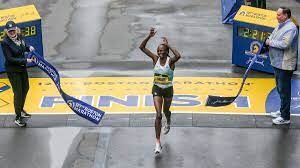
Kenya’s Hellen Obiri, the 2023 Boston Marathon champion, highlights a group of elite runners who will compete Saturday in the TD Beach to Beacon 10K road race in Cape Elizabeth, race officials announced Monday.
Obiri – a two-time Olympic silver medalist and the only woman to win world championships outdoors, indoors and in cross country – will compete at Beach to Beacon for the first time. She’ll be joined by fellow Kenyan and two-time Boston Marathon champion Edna Kiplagat.
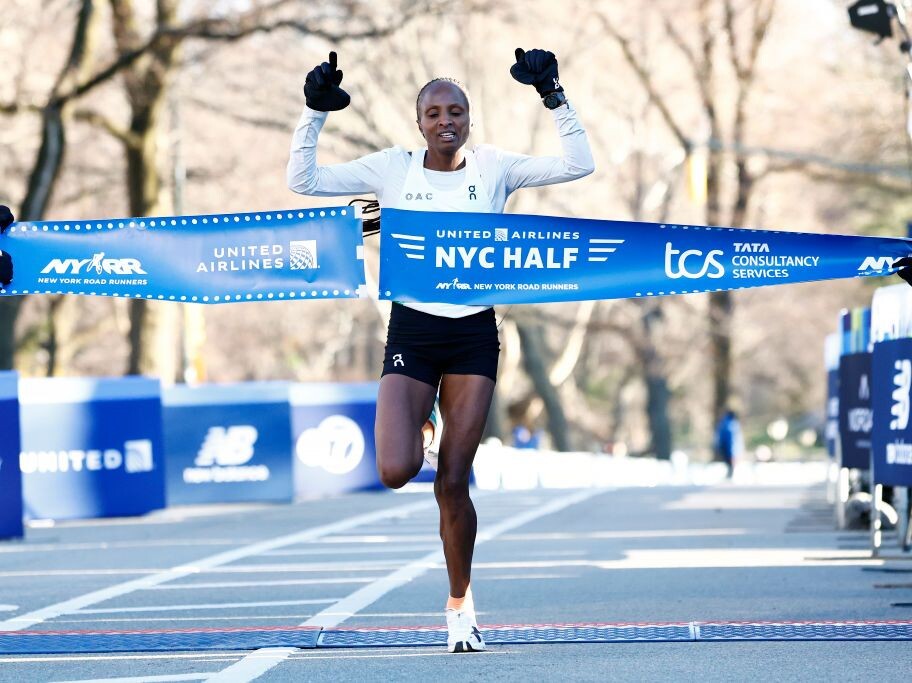
The women’s division also will feature Keira D’Amato of Virginia, who set an American marathon record (2 hours, 19 minutes and 12 seconds) last year, and Sanford native Rachel Schneider Smith, who competed for the United States in the 5,000 meters at the Tokyo Olympics in 2021 and placed fifth at last year’s Beach to Beacon.
A trio of Ethiopians – Addisu Yihune, Amedework Walelegn and Muktar Edris, a two-time world champion – are expected to contend for the men’s title. Top Americans in the field include Utah’s Conner Mantz, a two-time NCAA cross country champion, and Biya Simbassa, who placed third at the 2022 Beach to Beacon.
This year marks the 25th anniversary of Beach to Beacon, founded by Cape Elizabeth native and 1984 Olympic women’s marathon champion Joan Benoit Samuelson.
(08/01/2023) ⚡AMPTD Beach to Beacon 10K
Joan Benoit Samuelson, a native of Cape Elizabeth, Maine, won the first-ever women's Marathon at the 1984 Olympics in Los Angeles and is founder and chair of the TD Bank Beach to Beacon 10K. "A long time dream of mine has been realized" says Samuelson. "I've always wanted to create a race that brings runners to some of my most...
more...Brimin Misoi determined to defend Nairobi Marathon title
Nairobi City Marathon 42km champion Brimin Misoi will be back on the streets of the Kenyan capital to attempt to defend the title he won in 2022.
The second edition of Africa's richest marathon in terms of winners' prize money will be held on Sunday and will be majorly run on the Expressway.
Misoi, the winner of the 2022 Frankfurt Marathon is full of confidence and believes he has what it takes to defend his title. He said he is currently enjoying top shape and has undergone intensive training.
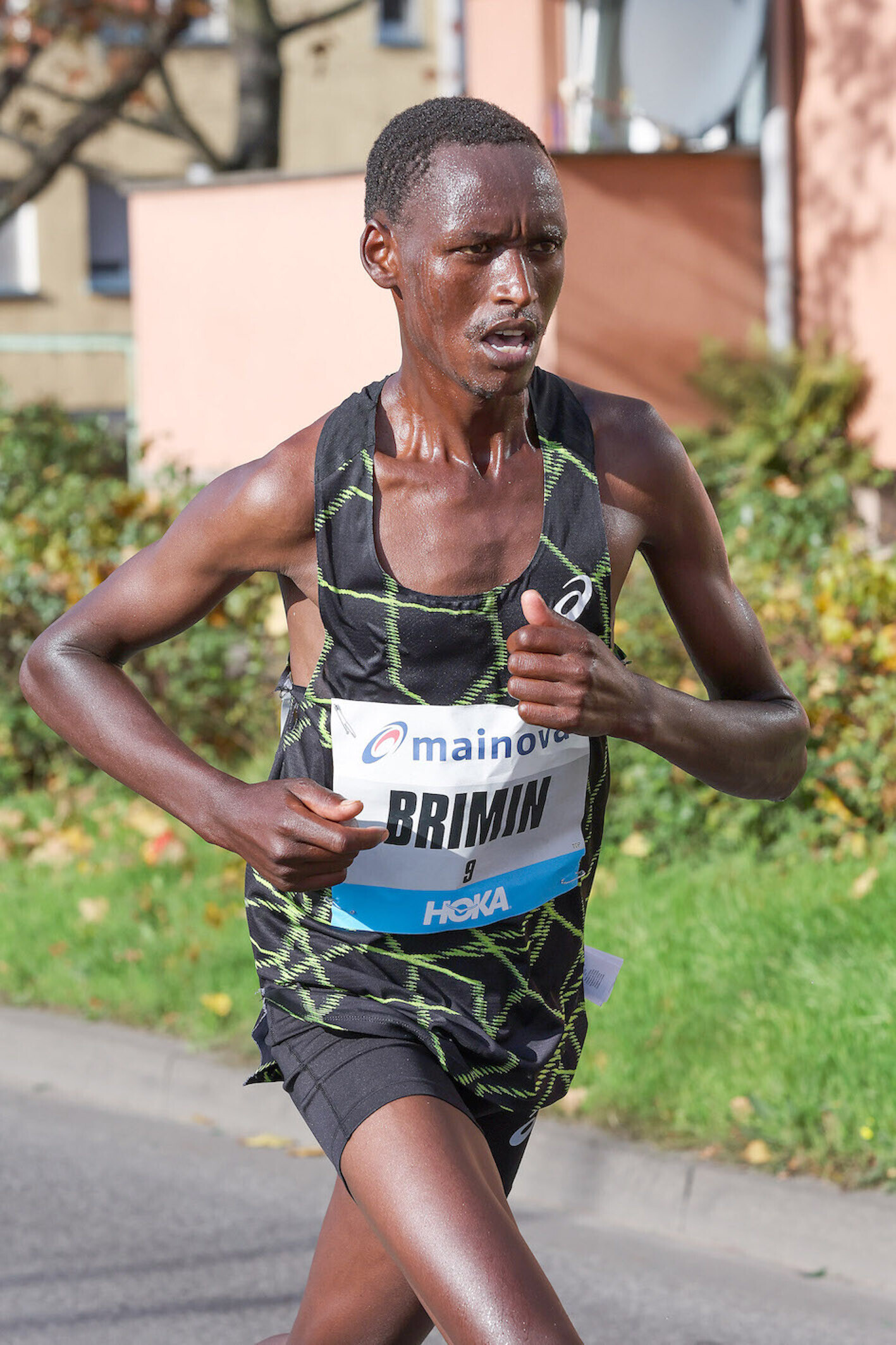
"I feel great and I believe in my training. I trust my abilities and I believe no one will beat me to the title. Nairobi's altitude is a bit lower compared to Kapkitony, Elgeyo Marakwet County where I train thus making it easier for me to win," he said.
The double Nairobi Standard Chartered Marathon winner clocked two hours and 8:03 minutes to win the race in 2022 after breaking off from the leading pack at the 34km mark.
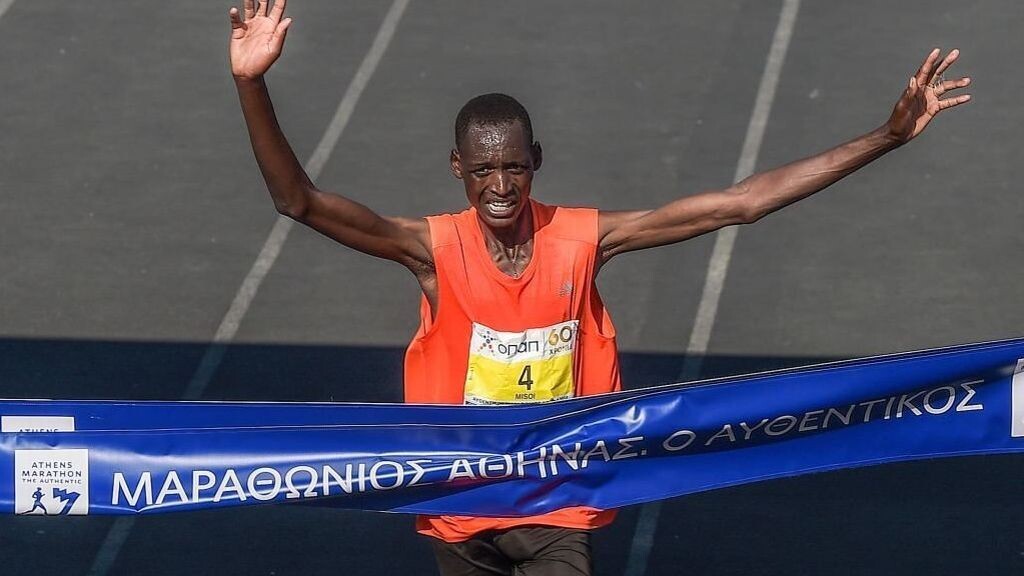
The 35-year-old had a poor run in Japan at the Tokyo Marathon in March, where he finished 13th in 2:07:36.
"My target is to defend my title and lower the time I set last year. I target to run sub-2:06:11, which is my PB set in Germany last year," Misoi added.
This year's edition has attracted more than 13,000 athletes with the organisers targeting 15,000.
On his quest for title defence, Misoi will be up against a group of elite athletes who have registered for the race.
Among the names to watch out for during the race include Edwin Kemboi with a personal best of 2:06:52 and who finished fourth in this year’s Seoul Marathon in March.
Joshua Kipsang (2:08:09), Simon Kipkosgei (2:07:07), and Robert Kipkemboi (2:07:09) are among the fastest athletes who have also registered for the 42km race.
An Ethiopian quartet led by Haile Mekonnen with a PB of 2:14:13, Maseret Yitbarek (2:11:34), Desta Tafa (2:11:13) and Haile Assefa will also be in the chase for the Sh3.5million winner's purse.
In the women’s 42km race, Lydia Simiyu (2:25:44), Sheila Chepkoech (2:27:04) and Sharon Cheimo (2:33:03) are among the fastest Kenyans who will battle it out in the women’s 42km race.
Defending champion Agnes Barsosio who clocked 2:24:45 in last year's event pulled out of Sunday's race after picking a hamstring injury in training.
(08/01/2023) ⚡AMPby Samuel Nganga
NAIROBI MARATHON
Nairobi Marathon is an annual road running competition over the marathon distance held in October in Nairobi, Kenya. First held in 2003, the competition expanded and now includes a half marathon race along with the main race. It was part of "The Greatest Race on Earth", fully sponsored by Standard Chartered Bank....
more...18-year-old sprinter Issam Asinga breaks world junior 100m record
In a remarkable debut on the international stage, 18-year-old Issam Asinga of Suriname stunned the athletics world on Friday, shattering the U20 100m world record at the South American Championships in Sao Paulo, Brazil. Asinga clocked an impressive 9.89 seconds with a tailwind of (-0.8m/s) to become the first South American sprinter to break the 10-second barrier in the 100m.
Asinga’s blazing run surpassed the previous record of 9.91 seconds set by Botswana’s Letsile Tebogo at last year’s World U20 Championships in Cali, Colombia, and also broke the South American area record, bettering the 10.00 mark set by Brazil’s Robson da Silva in 1988.
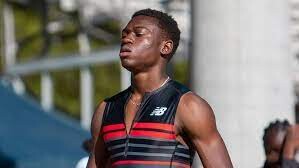
To make his record more impressive, his time was run at altitude, as Sao Paulo sits nearly 800m above sea level. Asinga’s new record also sparred other fast times in the field, with Brazil’s Erik Cardoso breaking the Brazilian national record for silver in 9.97.
The 18-year-old sprint phenom has made headlines in the 2023 season, running for Montverde Academy near Orlando, Fla. Earlier this year, he beat world champion Noah Lyles in a 100m race to break the U.S. high school record, and a week later, broke Lyles’s 200m high school record in 19.97 seconds.
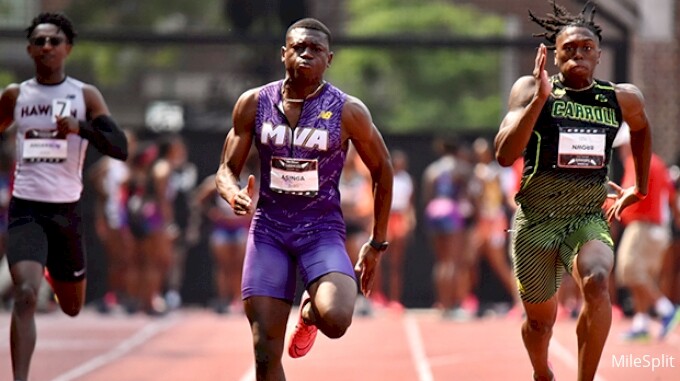
Asinga’s sights are now on the 2023 World Athletics Championships in Budapest this August, where he will run the sprint double. After worlds, Asinga will head to Texas A&M University in the NCAA on a full track and field scholarship. His exceptional talent runs in the family. His father, Tommy Asinga, holds multiple national records for Suriname and represented the country at three Olympic Games (1988, 1992 and 1996).
(07/31/2023) ⚡AMPby Marley Dickinson
Sir Mo Farah confirms final race in London before Olympic hero's retirement
Four-time Olympic gold medalist Sir Mo Farah has announced the Big Half will be his last race in London before retiring.
Farah, who won back-to-back Olympic golds in the 5,000m and 10,000m, revealed ahead of the London Marathon in April that 2023 would be his final year as a competitive athlete. The 40-year-old cited injuries as the reason behind his decision, admitting: "My body is not allowing me."
And it has now been confirmed his final competitive race in London, the city where he won his first two Olympic golds in 2012, will be the Big Half on September 3. It is an event he has won three times, most recently in 2022.
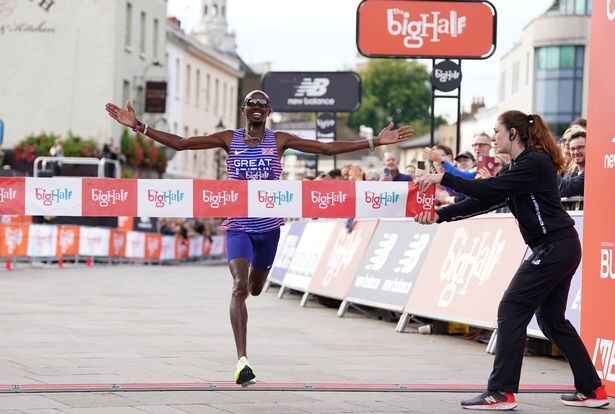
"I'm excited to run my last ever London race at The Big Half," Farah said. "It will be bittersweet, knowing it will be the last time I race competitively in my hometown but it's always such a great day and I know the London crowds will be cheering me on, as they always do. I look forward to being back in London and hope to bring home the win one final time."
Spencer Barden, Head of Elite Athletes at London Marathon Events which organises the Big Half, added: "It's fantastic to have Sir Mo leading the field at this year's The Big Half. Mo has had a phenomenal career and everyone at London Marathon Events wishes him all the best in his retirement.
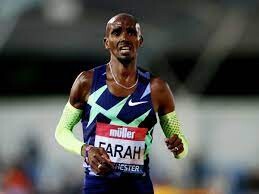
"Before that though, we hope he signs off his racing career in London with another record-breaking win at The Big Half." However, the Great North Run on September 10 will be Farah's final race altogether.
"I have so many incredible memories of racing at the Great North Run, my first ever race there in 2013 was billed as one of the greatest men’s half marathons in history," he said. "It was a special experience to line up against Ethiopia's Kenenisa Bekele and the iconic Haile Gebrselassie.
"Kenenisa took the top spot that day, but there was so much support for me all along the course. Even at the finish line in the pouring rain, all I can remember was people shouting my name, it made me even more determined to come back and do them proud.
"From 2014 onwards I won the event in front of that incredible crowd six times. There were some really tough races, but the phenomenal support always saw me through.
"It's fitting the AJ Bell Great North Run will be my last ever race as an elite athlete. It will definitely be emotional, but I’m so happy to have the opportunity to celebrate the end of my professional career on that famous finish line."
(07/31/2023) ⚡AMPby Matthew Cooper
The Vitality Big Half
Created by London Marathon Events Ltd, in partnership with Sported,The Vitality Big Half is a community running festival, taking place in London in March. This one-day event offers a host of running distances, from a challenging half marathon to a free one-mile course, as well as a family-friendly festival of food, music and activities. What’s happening? Take part with friends...
more...Daisy Kimeli reigns supreme at the Bogota Half Marathon
Kenya’s Daisy Kimeli and Morocco’s Omar Ait Chitachen have reigned supreme in the women’s and men’s races respectively at the Bogota Half Marathon.
Kimeli, 28, was in the leading pack from gun to the 19th km mark where she unleashed a finishing kick to cut the tape in 1:15:13 ahead of Ethiopia’s Anchialem Haymanot who clocked 1:15:36. Colombia’s Angie Orjuela shone on home soil and sealed the podium in 1:15:43.
Defending champion Angela Tanui, who had entered the race with the hope of successfully reclaiming the title but unfortunately missed out on a podium finish. She was leading for the better part of the race but faded as the race intensified.
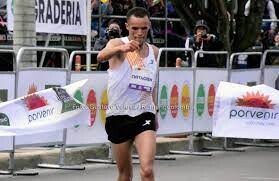
In the men’s race, Chitachen was in a class of his own as he also controlled the better part of the race before sprinting to the finish line. He crossed the finish line first in 1:03:51.
The Kenyan duo of Ezra Tanui and Edwin Soi finished second and third in respective times of 1:04:50 and 1:04:56.
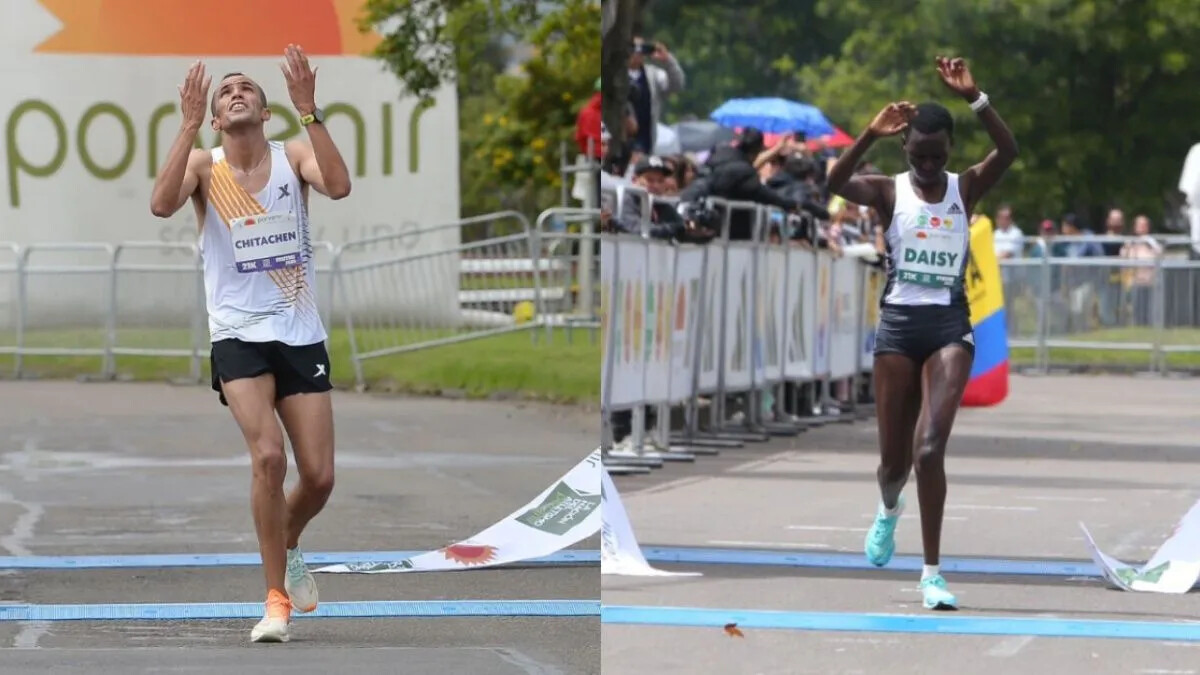
Soi, the defending champion, had also made a return to the streets of Colombia with the hopes of winning back-to-back titles but unfortunately, the field was too strong for him.
He was also looking comfortable in the leading pack but Chitachen reacted before him and he was forced to settle for third place.
(07/31/2023) ⚡AMPby Abigael Wuafula
Bogota Half Marathon
The Bogotá International Half Marathon, or mmB as it is traditionally known, is an annual road running competition over a half marathon distance 21.0975 kilometres (13.1094 mi) taking place in Bogotá, Colombia in late July or early August. Established in 2000, it holds IAAF Gold Label Road Race status, making it the first and thus far only South American race...
more...Pro-runner Allie Ostrander’s Five tips for avoiding injuries
Former American steeplechaser turned trail-elite Allie Ostrander shared her tips for runners to avoid injuries on social media recently, telling fans to consider it her “formal petition against running-related injuries.”
Ostrander announced her shift from track to trail in Feb. 2023 (along with her partnership with ultrarunning GOAT Kilian Jornet‘s brand NNormal) and is also a mental health and eating disorder awareness advocate.
Originally from Kenai, Alaska, Ostrander had a very successful NCAA career with Boise State University in Idaho, winning three straight NCAA titles in the 3,000m steeplechase. Her tips on avoiding injuries are excellent ones for all runners, whether they run on track, trail or roads.
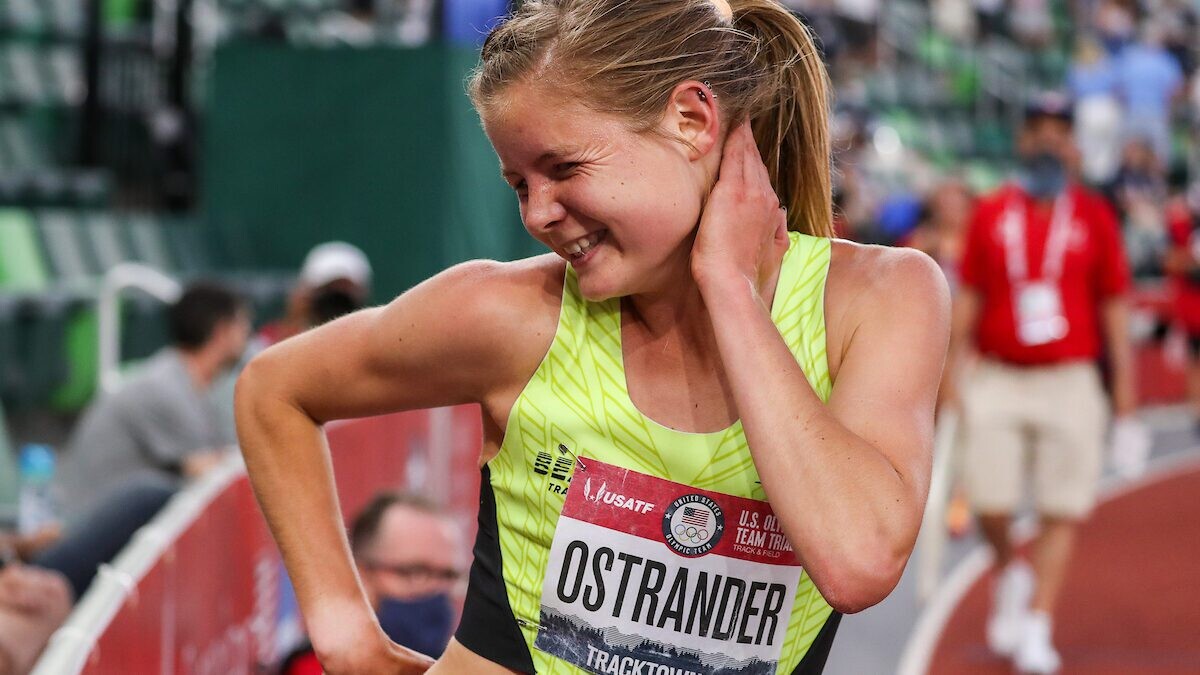
Here are Ostrander’s suggestions, along with some ideas to get you started.
Run more uphill miles
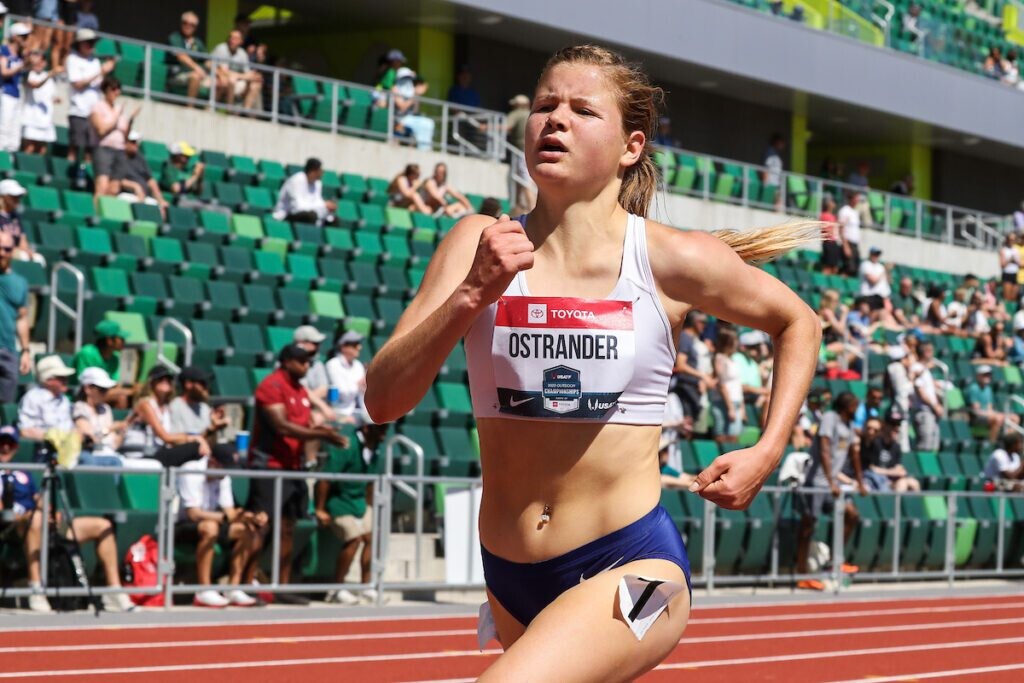
“Uphill running is lower impact and higher output, so you work harder,” shared Ostrander, “but it puts less stress on your bones.” She suggests running on the treadmill at a 3–5 percent grade, running up a long hill and getting a ride down, or doing hill repeats and walking downhill between reps.
Replace easy miles with cross training
“You don’t have to replace every easy run with a bike sesh because, let’s be honest, running is way more fun, but cross-training can be a great tool to get in some aerobic training without the impact,” Ostrander says. She suggests replacing 1–2 runs a week with a cross-training session and explains that she uses the formula of 10min of XT=1 mile running.
Try: a standing bike workout.
Don’t be afraid to strength train, lift heavy, and build muscle
Building muscle will make you a stronger runner, and you’ll be better equipped to power through hard training. “It can also correct imbalances and improve running economy,” says Ostrander.
Try: these at-home strength workouts with Canadian ultrarunner Jazmine Lowther.
Fuel
“Being in an energy deficit increases injury risk and decreases adaptation to training,” explains Ostrander. She recommends focusing on consistently giving your body the energy it needs.
Rest days are important
“Rest allows your body to absorb all the training,” Ostrander says. “Don’t wait until you feel overly tired or have some sort of pain to give yourself a day off.” It can be challenging to really allow ourselves to take the time off we need, and Ostrander suggests scheduling rest days into your training plan to keep it as much a priority as hard training.
Try: recovery day yoga to relax and unwind.
(07/31/2023) ⚡AMPby Keeley Milne
A Higher VO2 Max May Offer Protections Against Cancer, Study Suggests
More evidence of the connection between cancer risk and exercise levels.
A new study found a link between higher cardiorespiratory fitness and lower risk of certain cancers.
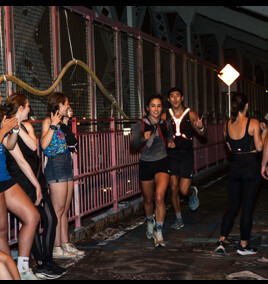
The researchers also found an association between higher fitness level and lower risk of dying from cancer.
Cardiorespiratory fitness (CRF), marked by your VO2 max, refers to the capacity for your circulatory and respiratory systems to supply oxygen to the muscles during sustained exercise, and the American Heart Association notes that it’s an important health marker for both physical and mental health.
As new research in JAMA Network Open suggests, it’s also a factor in reducing risk of colon and lung cancer in men.
Looking at data from a large cohort study in Sweden, researchers analyzed health and physical activity information on almost 18,000 men between the ages of 18 to 75, collected over nearly 10 years. CRF was assessed using a cycle ergometer test, which measures heart rate and oxygen consumption.
They found that higher levels of cardiorespiratory fitness were associated with lower risk of developing colon and lung cancer. For those who did develop those cancers, higher fitness was associated with lower risk of death from those cancers within the study’s timeframe.
One possibly counterintuitive finding from the study is that higher CRF was associated with higher prostate cancer incidence. However, even in that result, researchers noted that those with high fitness levels showed a 5 percent lower death rate from that cancer.
Given the wide range in ages, researchers were able to determine that the cancer hazard risk was lowest for younger, non-smoking men at a normal weight and with the highest CRF.
Overall, researchers concluded that having very high CRF levels for any age could prevent up to 8 percent of all colon cancer cases, 4 percent of all deaths from lung cancer, and between 4 to 19 percent of deaths from prostate cancer. They added that it’s likely higher-intensity physical activity could have even more protective effects.
Although the recent study was done only on men, there is ample other research showing similar benefits for women in terms of both cancer prevention and longer survival rates for those who do develop cancer.
For example, a recent study in the British Journal of Sports Medicine about cancer recurrence in men and women with stage III colon cancer found that for physically inactive patients, disease recurrence peaked within two years of treatment, but that wasn’t true with physically active patients, according to that study’s lead author, Justin Brown, Ph.D., director of the Cancer Metabolism Program at Pennington Biomedical Research Center.
Brown told Runner’s World that even for people who had not been very physically active before a cancer diagnosis, making the effort to get consistent exercise can improve health outcomes overall. That means you don’t just potentially live longer through reduced cancer risk or lower recurrence risk, you live better as well.
“Whether someone has cancer or they’re considering what could lower their risk, there’s something about this disease that causes people to step back and evaluate decisions like how they’re treating their health,” Brown said. “Health is comprised of many components, of course, but physical activity is a key starting point, and a crucial factor when it comes to lowering your risk level with cancer.”
(07/30/2023) ⚡AMPby Runner’s World
Here’s What Strava Data Says About Your New Year’s Resolution
Time for a six-month check-in! Here’s what the data says about how athletes are sticking to their goals in 2023.
Less than nine percent of Americans are able to stick to their New Year’s resolutions for a full year, according to one study. In 2023, the most common resolution for Americans was to exercise more. But, when it comes to setting SMART goals, we runners are smarter, right?
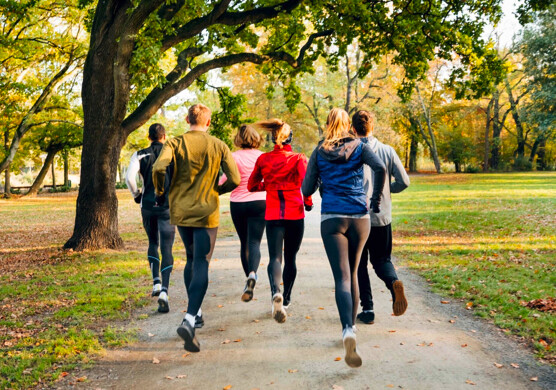
Many runners set ambitious goals for their yearly mileage. According to Strava, 53 percent of runners who set yearly mileage goals for 2023 are on track to achieve those goals– with plenty of year to spare. Staying on track towards a yearly mileage goal is a balancing act that requires athletes to manage their training load over the course of a year. In 2022, 22.8 percent of athletes finished less than 20 percent shy of their goal– and 12.5 percent completed 90 percent of their yearly goal volume –so close, and yet, so far!
The most popular year-end goal for Strava users was 1,000 kilometers, followed by 1,000 miles (so much to love about an affinity for big, round numbers that transcends the Imperial/Metric system binary!). There was also a spike in interest in 2023k and 2023M goals, because…2023. To meet that goal, runners would need to log just under three miles or three kilometers a day, or 18 miles a week. Doable? Definitely.
Let’s take a deep dive into the data to examine what strategies help, and what strategies hinder runners en route to achieving their yearly mileage.
Runners tend to hit more mileage in the warmer months (surprising no one who, resigned to logging winter miles on the treadmill, ran out of Great British Bake Off reruns). According to Strava’s data, the athletes who met their yearly mileage goals tended to log more runs in August, September, and October. These months, in that tender spot between the heat of the summer and the chill of winter, gave athletes an opportunity to bank some miles before daylight savings and December.
Runners who met their goals tended to run up to 10 percent more than was needed for their goal in these months (also coinciding with the pinnacle of summer trail race season and preparation for fall marathons). September tended to be the goal-meeter’s peak month, with average monthly volume 33 percent higher than December 2022. For the best shot at meeting your year-end goal, the time to recommit to consistency is now.
Strava’s data shows that waiting for a last-minute push isn’t a productive method for runners looking to meet their year-end goals. Athletes tended to trend under the consistency needed for their goals in February, November and December. Colder weather and shorter days provide enough friction to prevent many athletes from reaching the goals they were excited about in January. Even among folks who met their year-end goals, November and December, with all their holiday travel and schedule interruptions, were the lowest-volume months of the year, with December being the lowest month of all.
The best advice for staying consistent enough to meet your goals is to not let one missed day become three, then become a week, then become a month off. It’s okay to have a down week, or even a down month as long as you’re able to maintain a base of consistency.
Among the runners who met their yearly goals in 2022, 52 percent ran less in June than was required for their goal. Almost half of runners who ultimately met their yearly goal went into June behind pace and used August, September, and October as an opportunity to make up for some lost volume. 20 percent of runners who were 20 percent behind their goals going into July of 2022 ended up making it up by the end of the year. So, right now is the perfect time to take stock of where you’re at, and recommit to those year-end goals.
Analyzing thousands of Strava uploads, there were clear patterns among runners who were able to meet their year-end goals vs. those who fell short. Here’s what we learned from the data:
Consistency is key. Big, year-long goals aren’t achieved through one-off heroic efforts, but by doing the best you can to get out as often as is healthy and productive for your training. Athletes who met their goals had about 15 percent more active days than folks who didn’t. So, if you’re struggling to meet your goal, consider adding an additional, lower-volume day to your run week.
(07/30/2023) ⚡AMPby Outside Online
Why You Should Stop in the Middle of Your Run
The case for taking more than just a momentary water break
A few years ago, I was out on a run with a friend in New York. It was the first perfect day of the year—60 degrees, partly cloudy. The city seemed new again. As we jogged through the West Village, she suddenly came to a stop in front of a store window. “Let’s go in!” she said. I was baffled. But we’re in the middle of the run, I thought. How could we possibly interrupt this?
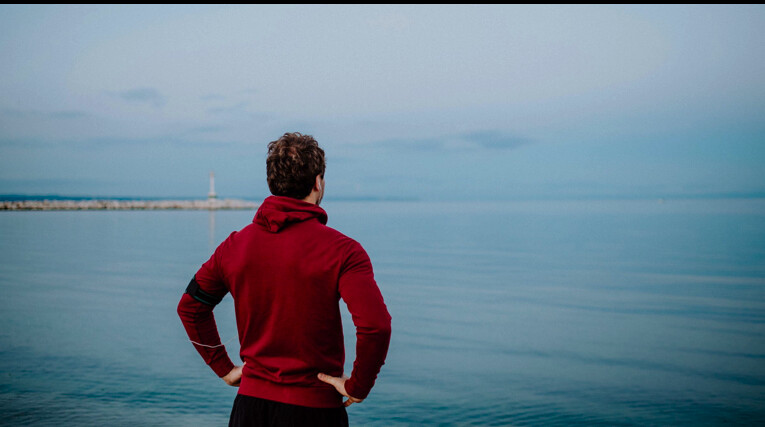
We spent a minute browsing the store and, guess what, the world didn’t end. I still got my run in. That day, my friend taught me a lesson that I try to remember whenever I’m taking my sport a little too seriously: One of the great joys of running is that you can go anywhere. Why wouldn’t you stop to enjoy all the stores, parks, cafes, and farmer’s markets along the way?
As runners, we care about the sport. We track our mileage, time, and progress—and fret when a goal outstrides us. And, yes, there’s a time and place for this structured take. Maybe we’re training for a marathon or trying to clock a speedy 5K. But as these long, lustrous days of summer roll on, I’m calling for a free-spirited approach to lacing up. What if we used our precious running hours to see our cities, towns, and neighborhoods on foot? What if we acted as a running tourist?
Summer is the perfect season to prioritize fun on your runs, says Jess Paris, a personal trainer and master tread instructor at SLT. “Heat and humidity can add extra stress and fatigue that makes it difficult to achieve pace or mileage goals,” she explains. “The summer is a great time to take some pressure off those running goals and just enjoy the movement.”
Lately, my boyfriend and I have been channeling this joie de running into our weekend mileage by sprinting to the ocean, jumping in, and jogging home. Sure, we’re a little wet on the way back, but who cares? (Need I repeat, it’s summer!) Paris has similar priorities. “I think it’s a great idea to use your runs as a travel tool to a fun destination or to explore a new place,” she says. “For example, there’s an ice cream shop in my town that I used to run to with a friend to enjoy a cone and hang around town for a bit before running back.”
Paris adds that the middle months of the year are also a great time to prioritize destination running—or taking a road trip and hitting the ground to scope out a new spot. “If you’re on vacation, check out some running routes ahead of time to explore the local area or attractions,” she says.” Just make sure you’re wearing the proper sneakers. For example, if you stumble across an unknown trail, you wouldn’t want to be caught wearing road shoes.
As you enjoy your summer of casual running, remember that you still need to rest. “Too much of anything is not good, even if you’re using running as a fun activity,” Paris says. “At the end of the day, it’s still exercise, movement, and exertion.” Balance out your efforts with plenty of stretching.
Move through dynamic stretches, such as side lunges, before you take your first step, and static stretches, like a forward fold, as you’re cooling down. “On the days when you’re not running, focus on a restorative or cross-training activity like yoga, pilates, or strength training,” Paris says. “All of those types of exercise will make you stronger and help you recover so that you can truly enjoy your fun runs injury-free.”
I’ve been a runner for eight years now, and I still love every part of it—the manic excitement of race day, jogging the sidewalks of my quiet California neighborhood before the world (or, OK, the West Coast) awakes, and the breathless, post-speed run high. It feels like it will never get old. But, to be honest, I think these wandering summer runs are my favorite. There’s something about them that lets you see your surroundings through fresh eyes. And, in this case, I get to see my own backyard anew.
As I was wrapping up writing this story, I couldn’t help myself. I turned to my boyfriend —who was working just five feet away—and said, “Hey, want to run to Venice and watch the skateboarders on the boardwalk?” Next thing I knew, we were lacing up our sneakers.
Ocean, lake, pond, pool—whatever H2O you have access to, make sure you use it to cool down at least once on today’s run.
Refuel with a mid-run snack from the farmer’s market. An incredible baker hangs out at my local spot, selling muffins, croissants, and scones. I love to grab one, digest for a few minutes in the sun, and then run home.
Let’s put an end to all the running window shopping, OK? I dare you to go in and actually poke around. If you’re stinky, just give everyone a wide berth and (of course) don’t try on any clothes.
Maybe you’ve lived in your city for years, but still haven’t visited the most famous landmark. Take this opportunity to run there, explore, then head home.
Parks are essential to the “run, lounge, repeat” lifecycle I love. Find a greenspace near you and make your way there on foot. Once there, lay down, people watch, or read a book on your phone.
(07/30/2023) ⚡AMPby Outside Online
Do You Need Electrolyte Supplements at Altitude?
Here's what to keep in mind about hydration supplementation at all elevations
When Lara Crawford stopped into her local vitamin and supplement store a few months ago, she was in search of something to alleviate her acid reflux, which causes a burning sensation in her chest and acid regurgitation. But the conversation quickly took a turn when a staff member learned Crawford wasn’t taking electrolyte supplements.

Crawford lives at 9,000 feet in the Colorado Rockies, a place considered to be high altitude. Even after living in the mountains for years, she never saw a need for additional electrolytes. However, the staff member told Crawford those who live at altitude tend to get dehydrated overnight—and suggested she start taking sports salts pills and a daily electrolyte powder.
“I thought those were just for ultra athletes or like serious athletes, but he told me everybody should be taking them,” Crawford says. He spoke so convincingly about their benefits that she decided to give the electrolytes and sports salts a try.
After using the sports salts in the morning and the electrolytes at midday for a few months, she noticed a moderate improvement in her acid reflux. However, the biggest change was in her face: She no longer woke up with dry, puffy eyes.
Spotting the meaningful difference, she wondered if the staff member was right. Was the shift due to her new electrolyte supplements? Maybe these weren’t just for endurance athletes after all. Perhaps even people who only engaged in moderate exercise still needed to supplement with electrolytes at altitude.
Vic Johnson, an Utah-based sports nutritionist who works with outdoor athletes, including ultra runners, cyclists, and triathletes, says that while we do lose more fluids at altitude, there’s nothing special about nighttime.
However, the electrolyte and hydration question, and how much each of us should be consuming each day, is a bit more complicated.
At higher elevations, your body has to work harder to get oxygen, which causes your breathing rate to increase. Since you lose water through respiration, this results in greater fluid loss. The air is also drier at altitude, which makes your sweat evaporate faster and causes additional fluid loss. Each of these factors contribute to your body losing more water than at sea level, requiring you to hydrate more frequently.
However, the longer you stay up in the mountains, the better it gets. Johnson says people who live at altitude are able to adapt to the lack of oxygen. Their bodies become more efficient, producing more red blood cells to carry oxygen through the body, which reduces the amount of fluid lost.
“It’s going to be pretty stressful on your body for a couple of weeks,” Johnson says, referring to spending time at elevation. “That’s the most crucial time to increase fluid intake. Then things will kind of regulate, and you won’t have to compensate quite so much.”
However, even longtime residents of high altitude towns—Crawford has lived at 9,000 feet for 29 years—typically need about a liter to a liter and a half more water per day (about four to six cups) than people living at lower altitudes. But hydration isn’t a one-size-fits-all prescription. Whether you’re in the mountains or at sea level, your fluid intake varies based on the weather, the amount you exercise, and your overall health.
To help his athletes find the amount of hydration they need, Johnson performs a sweat rate test. He starts by weighing them before they exercise. While they work out, he keeps track of the fluids they drink and any urine they lose. After they’ve finished, he weighs them again and plugs each data point into an equation to figure out how many milliliters of sweat per hour they lose. (If you’d like to try this for yourself, use a step-by-step guide to finding out your own sweat rate.)
It’s important to note that even once you’ve figured out your sweat rate, completely replacing your lost liquids isn’t necessarily the goal. It’s not bad to be slightly dehydrated and more hydration isn’t always the solution. For many, drinking to quench your thirst is sufficient. (Those in their 70s or 80s need to monitor their intake a bit more, because our thirst sensation can decrease with age.)
Electrolytes are electrically-charged minerals such as sodium, calcium, magnesium, and potassium that regulate your muscle contractions, keep you hydrated, and balance your pH levels. Every fluid and cell in your body has electrolytes, which aid the function of your nerves, muscles, brain, and heart. Electrolytes also manage the balance of fluids in your body’s cells and are lost through sweat and urine, or if you’re sick, through vomiting and diarrhea.
While electrolytes are essential, Johnson says most of us get all we need from food. “A normal, varied diet should provide you with plenty of electrolytes, even at altitude.” Johnson says, “For the recreational athlete, it’s honestly not that big of an issue.”
If you aren’t engaging in high-output endurance activities lasting longer than three hours, and if you’re eating a nutrient-dense diet with whole grains, legumes, vegetables, fruits, nuts, and seeds, Johnson says you should be getting enough electrolytes without needing additional supplementation. However, endurance athletes who engage in high-output endurance activities lasting longer than three hours have different hydration needs, and may find electrolyte powders and capsules are a good way to stay hydrated and keep their electrolytes balanced.
That doesn’t mean these supplements are the secret to unlocking a new PR. A 2020 study conducted by researchers at Stanford University found that electrolyte supplementation does not improve performance or protect against illnesses caused by a change in sodium levels, including exercise-associated hyponatremia (EAH).
If an endurance athlete wants to take in some sodium, Johnson recommends turning to salty foods, such as pretzels or even a peanut butter sandwich.
“For the most part, when our serum sodium levels drop, the body can usually take care of that and regulate that on its own,” he says.
So, if electrolyte supplementation isn’t really necessary for most people, why did Crawford see a noticeable difference in her face after months of supplementation?
The answer most likely lies in what Crawford took with the powder and capsules.
Before going to the supplement store, Crawford says she struggled to drink enough water. However, while doling out instructions for the supplements, the staff member instructed Crawford to drink a full bottle of water with her morning sports salts capsules (which contain sea salt, magnesium, and potassium) and to mix the flavored electrolyte powder with at least 16 ounces of water later in the day. The supplements provided the structure for her to consume more water, improving her overall hydration and reducing the puffiness in her eyes.
If you live at altitude and find it difficult to drink adequate fluids, a flavored powder might help. For most people, however—including serious athletes—drinking when you’re thirsty is usually enough.
(07/30/2023) ⚡AMPby Outside Online
Try this tune-up workout before your next race
It’s hard to know what to do in the taper week leading up to your race. Run too much, and you risk showing up to the start line tired; run too little and you risk feeling sluggish on race day. Figuring out this balance takes some trial and error, but if you’re not sure what to do, consider adding this quick, feel-good tune-up workout into your training plan the week before your race.
It may sound crazy to do a workout so close to your goal race, but this quick session is designed to get your legs moving without wiping you out. It should be done no less than three days before your race (even further out if you’ve got a long race on the calendar), and is an opportunity to remind yourself what race pace feels like.

In other words, don’t be a workout hero–run your goal race pace and no faster, and resist the temptation to do extra intervals. (Save that energy for the start line!)
The workout
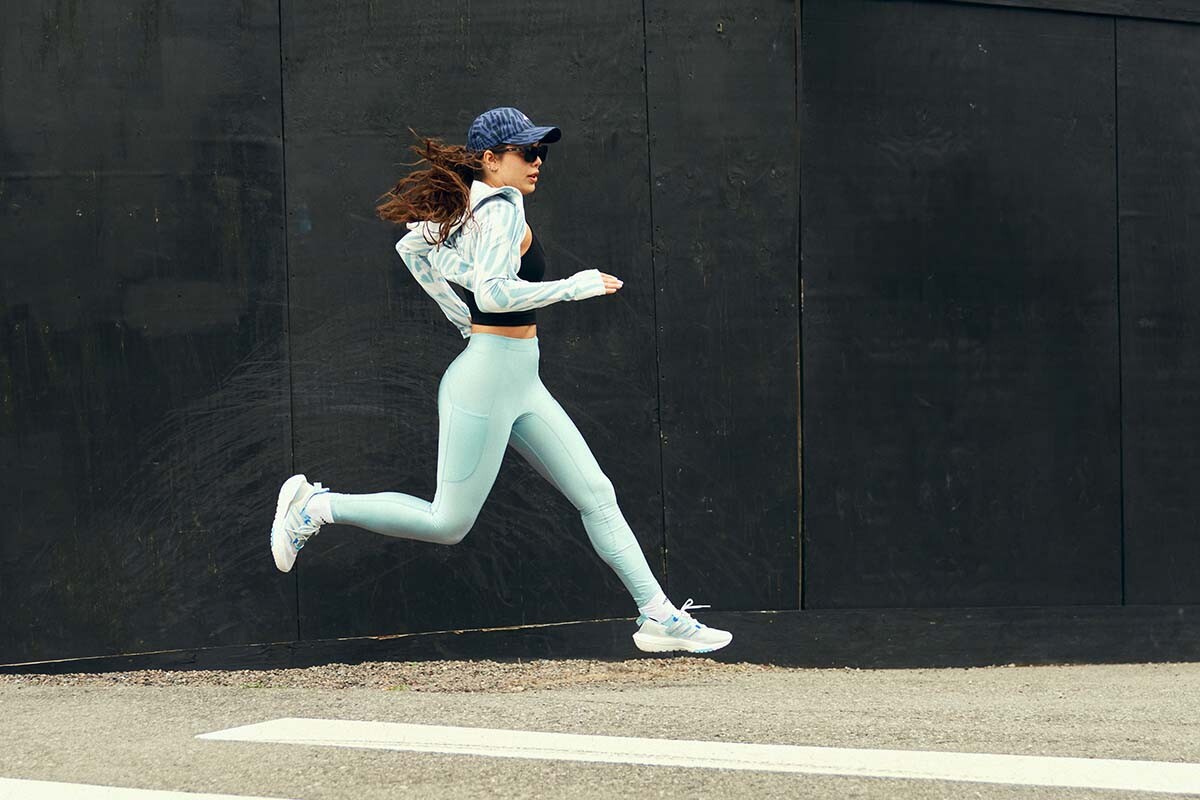
Warmup: 10-15 minutes’ easy jog, followed by form drills
Workout:
1 km at race pace, followed by two minutes’ rest
2-4 x 400m with 1:30 rest (run these at a pace that feels comfortable and strong–don’t get caught up in the numbers)
800m at race pace
Cooldown: 10 minutes’ easy jog, followed by light stretching.
(07/29/2023) ⚡AMPby Brittany Hambleton
90-year-old U.S. runner Dot Sowerby, topples Canadian’s 1,500m world age-group record
A 90-year-old runner saved the best for last during her winning weekend at the USATF Masters Outdoor Championships in Greensboro, N.C., breaking the W90 world record in the 1,500m and claiming the crown from a Canadian.
Greensboro’s own Dot Sowerby delighted a hometown crowd Sunday when she ran the 1,500m in 11:30.62, taking more than a minute off the record held by North Vancouver’s Lenore Montgomery, who covered the distance in 12:34.67 at a track meet in Surry, B.C., in September 2020.
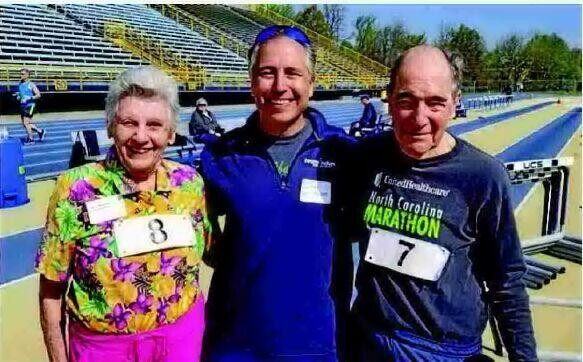
Sowerby’s world-record effort this week, which has yet to be ratified, capped off a memorable weekend for the athlete, who racked up quite a collection of medals over the four-day event at Truist Stadium.
She finished her first day of competition last Friday with gold in the 400m (2:35.33) and silver in the 100m (26.25)—right at the heels of first-place finisher Betty Stroh. On the same day, she took gold in the long jump (1.05m) and the shot put (4.51m). She followed that up Saturday with gold in the 800m (5:52.93).
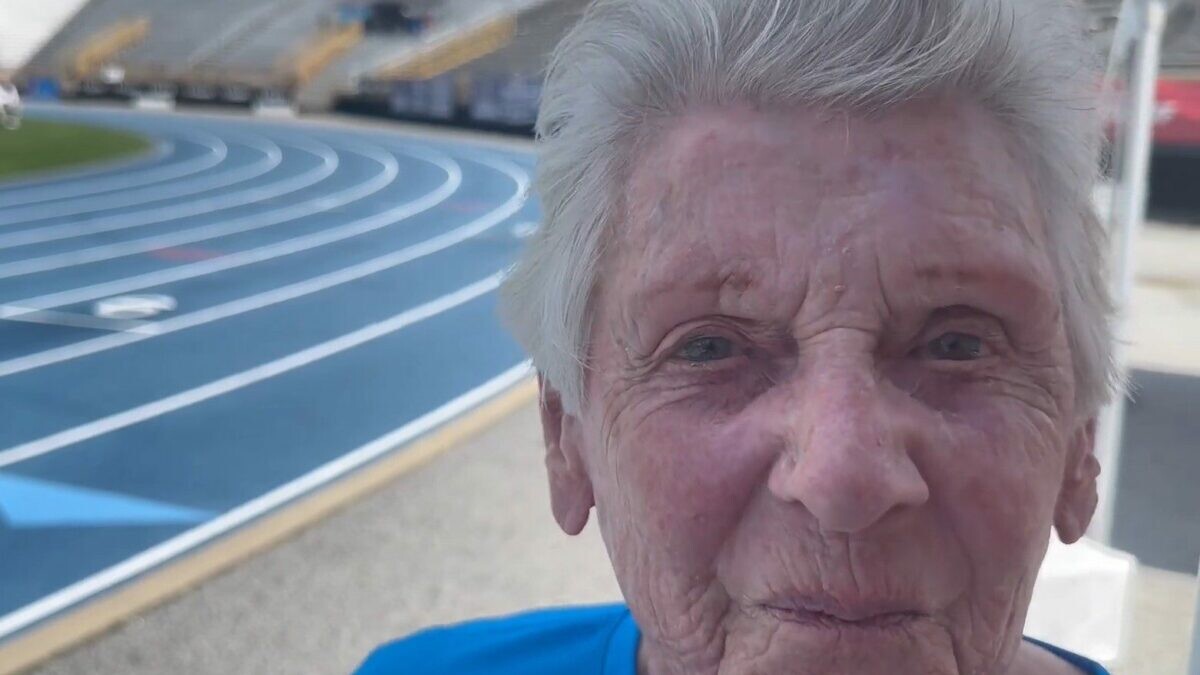
Her accomplishments in Greensboro are all the more impressive considering they came just one week after she collected six gold medals at the 2023 National Senior Games in Pittsburgh.
“I have a philosophy that you are never too old to do something like running or whatever you want to do,” Sowerby told Greensboro’s News & Record heading into the USATF Masters Outdoor Championships. “When I came along, they would not let girls in high school and college run because they thought they were too fragile or something. So, I did my first race when I was 50 years old.”
Although Sowerby has taken Montgomery’s 1,500m world record, the latter athlete’s name still features prominently in the Canadian masters record book. In addition to her W90 1,500m record, Montgomery holds 11 other outdoor track records. These include the W85 and W95 records in the 800m, the W75 and W85 in the 1,500m, the W80 and W85 records in the 3,000m, the W70, W75, W80 and W85 in the 5,000m and the W75 record in the 10,000m.
(07/29/2023) ⚡AMP
by Paul Baswick
Kipruto eyes history in Chicago Marathon, Jepkosgei set for debut
Benson Kipruto will hope to make history during this year's edition of the Chicago Marathon, set for October 8.
Kipruto, 32, is a regular podium finisher in the world marathon majors and has a chance to make more history in the Chicago Marathon when he defends his title in the men's race. If he manages to win the competition, he’ll be the first back-to-back men’s open field champion since the late Sammy Wanjiru in 2010.
To win the title in the last edition, the long-distance runner broke away in the 25th mile last year to win in 2:04:24, which is the fourth fastest time ever in Chicago.
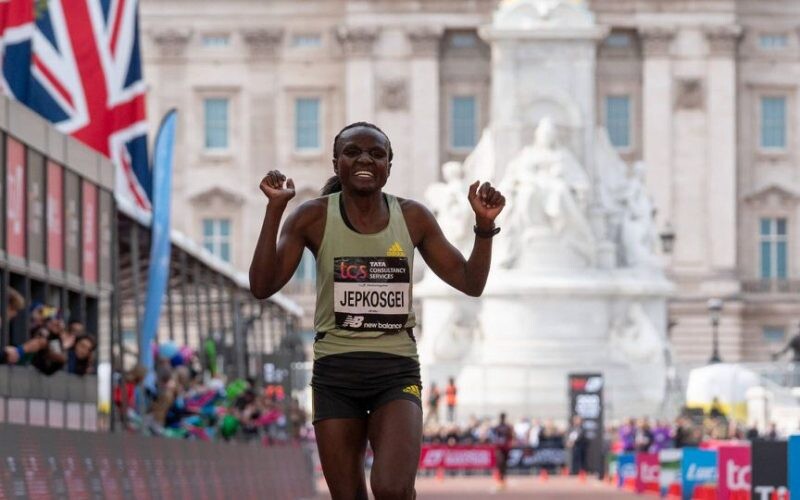
Kipruto should expect stiff competition from Kelvin Kipruto, the second-fastest man in history. The 23-year-old Kiptum will make his U.S. marathon debut in Chicago.
Kiptum won the London Marathon in 2023, which is his second marathon ever, at 2:01:25, which was just 16 seconds shy of Eliud Kipchoge’s world record.
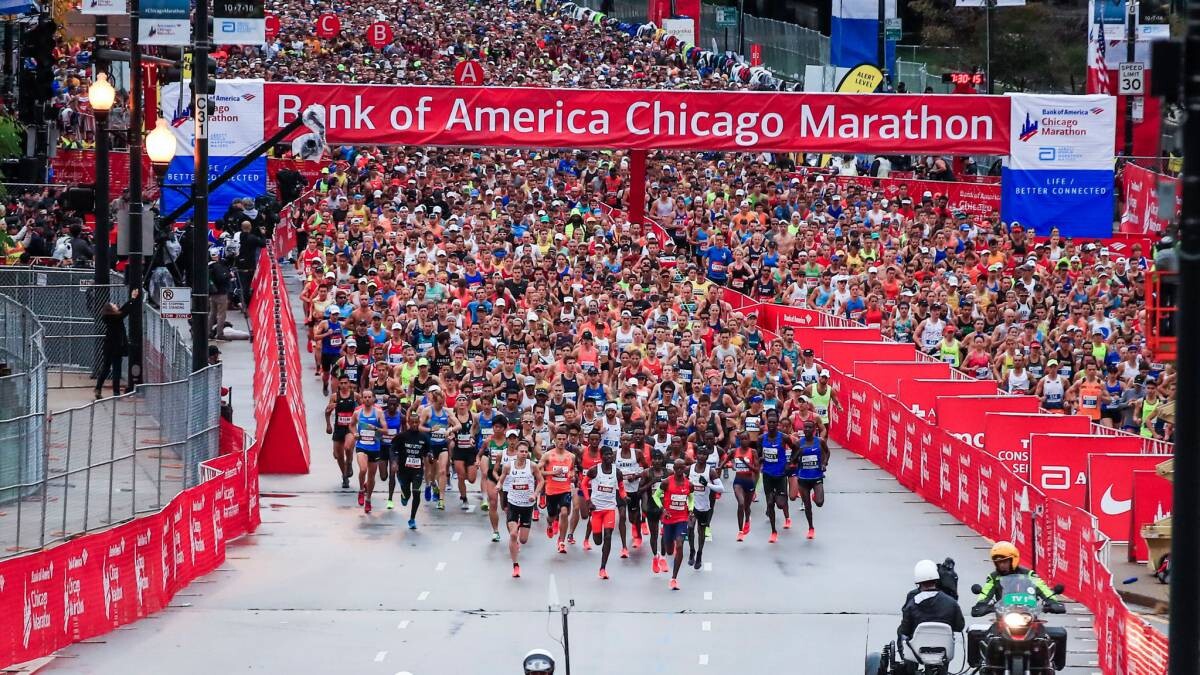
Jepkosgei's debut
Meanwhile, Joyciline Jepkosgei is set to make her debut in the Chicago Marathon. The winner of the 2021 London Marathon and the 2019 New York City Marathon will compete alongside 2022 Chicago Marathon champion Ruth Chepng'etich, American record holder Emily Sisson, and 2023 London Marathon winner Sifan Hassan of the Netherlands.
Apart from Jepkosgei, Genzebe Dibaba of Ethiopia will also be making her Chicago Marathon debut. Dibaba, who made her marathon debut in Amsterdam last fall, placing second in 2:18:05, has established herself as one of the top athletes as she holds six world records from the 1500m to the 5000m.
More than 45,000 participants will take part in the 45th edition of the Chicago.
(07/29/2023) ⚡AMPby Joel Sang
Bank of America Chicago
Running the Bank of America Chicago Marathon is the pinnacle of achievement for elite athletes and everyday runners alike. On race day, runners from all 50 states and more than 100 countries will set out to accomplish a personal dream by reaching the finish line in Grant Park. The Bank of America Chicago Marathon is known for its flat and...
more...Can Exercise Replace Your Antidepressant?
For centuries, we've known anecdotally that movement can improve your mood. Joggers often describe a euphoric runner's high, while swimmers recall an inner calm that lasts long after they leave the pool. In April, researchers published the strongest evidence to date showing that physical activity does more than induce these temporary feel-good effects; It can actually improve depression as effectively as medication or psychotherapy. The findings build on previous studies showing exercise can reduce anxiety, post-traumatic stress disorder, bipolar, and obsessive-compulsive disorder symptoms.
This mounting evidence doesn't suggest you should toss out your medication or skip your next therapy appointment in favor of exercise alone. But it does indicate physical activity could be a powerful first-line treatment for mental health disorders, especially when combined with other therapies.
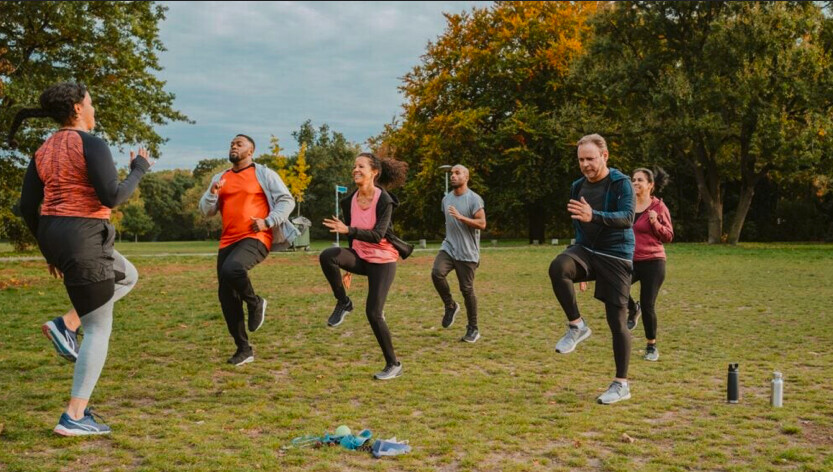
Based on the data, some experts see exercise as a safe, cheap antidepressant that could help the estimated one third of adults with mental illness who do not receive adequate treatment. And some clinicians are putting this concept into practice, doling out "exercise prescriptions" for mental health. These scripts give patients step-by-step instructions for physical activity recommendations, much like they would with antidepressants or behavioral therapy. But providers say that on the whole, the field has been slow to embrace exercise as medicine for mental illness, and "exercise prescriptions" remain the exception in clinical care, not the norm.
"Exercise is a good, underutilized tool to help with mental health conditions," Ivan Escobar Roldan, a psychiatrist in Florida who regularly writes "exercise prescriptions" for his patients and studies the use of exercise in clinical practice, says. He co-authored a study published in the Journal of Psychiatric Practice in 2021 showing that while many providers generally encourage patients to be active, they don't often give specific instructions due to a lack of training, education, or standardized clinical guidelines.
"Everyone says you should exercise more," Seattle-based clinical psychologist Julie Vieselmeyer says. "But patients always ask: What does that mean? Do I need to take an extra lap around the grocery store, or does that mean I have to go to a gym for three hours every day?"
Currently, mental health providers don't give the clearest answers to these questions.
A Mind in Movement
Exercise is as close to a miracle drug as we've got. Research shows it works as effectively as some prescription drugs in preventing and treating more than 26 different diseases.
When you start a workout, your pulse quickens and breathing deepens as your heart pumps oxygen-rich blood to your brain and muscles. Within a few minutes, you likely notice a lift in your mood as your brain releases "happy chemicals" like endorphins, dopamine, and serotonin (the same neurotransmitter targeted by antidepressants). The fleeting bliss of a runner's high results from a spike of endocannabinoids in the bloodstream-cannabis-like signaling molecules that are naturally produced in your body and induce feelings of calm.
After your strength or conditioning session wraps up, the positive effects don't stop. Over time, physical activity can increase levels of a protein called brain derived neurotrophic factor (BDNF), which leads to the creation of new neurons. More BDNF is correlated with reduced anxiety and depression, better focus, improved cognition, and sharper memory as you age.
When people exercise regularly, the brain's hippocampus-the area linked to memory and learning-has also been found to increase in volume. That's not all. With a regular workout routine, people often feel better, sleep better, eat better, and report improved relationships and work satisfaction. Exercising can burn off anxious energy as well as increase resilience to future stress. Eventually, it can even help people taper off medication and cut down on doctor's visits or medical treatments. People who start to exercise before or during middle age typically save between $824 to $1,874 annually on their health care costs after retirement.
"While medications may take a few weeks to work, you see benefits right away with exercise," Escobar Roldan says. "It's not only going to help with anxiety, depression, and many other mental health conditions, but also with patients' overall health and other chronic conditions."
Getting moving can be tough initially. Despite the upsides, less than a quarter of U.S. adults do enough aerobic exercise or strength training to meet the national physical activity guidelines. But once people get going, exercise's instant gratification often kicks off a beneficial feedback loop, Vieselmeyer says.
"When we're making healthy choices, that ends up affecting how we think about ourselves, our self-confidence, and our energy levels-things affect our emotions positively and lead to behavior change," she says. Working out isn't just about quelling anxiety, depression, or negative emotions, but fostering positive ones too.
Matthew Ellison, a late-twenties investment banker based in New York City, has experienced these benefits firsthand. Ellison has a history of anxiety and recently dealt with a bout of depression tied to work stress. With the support of his therapist, Ellison made going to the gym a daily priority. He says the routine pulled him through this period and has become a non-negotiable practice to maintain his mental health.
"Being able to clear my mind, in the morning or late at night, has honestly been the greatest thing for my mental health," Ellison says. "It's the foundation for my mental well-being."
Barriers to Entry
For more than 20 years, Vieselmeyer has been interested in exercise as medicine, and says that amid recent studies, she is seeing more acceptance of the topic across the field. But even with a robust body of evidence, providers still struggle to convert these research breakthroughs into targeted exercise prescriptions.
That's because there's little formal training or education on the topic. Some clinicians are concerned about their patients' health status and worry that exercise might lead to injury or cause a heart attack. Others simply don't have the time to discuss exercise in depth.
Many providers recommend 150 minutes (or 2.5 hours) of physical activity per week-guidelines from the U.S. Department of Health and Human Services-but are hesitant to give concrete instructions beyond that. The American Psychological Association's most recent clinical practice guidelines on depression don't mention exercise as treatment.
In his own practice, Escobar Roldan uses resources like this prescription form created by Exercise is Medicine, a global initiative coordinated by the American College of Sports Medicine. The organization also provides a handy action guide to help providers prescribe the right "dose" of physical activity for more than 40 chronic conditions, including mental health disorders. Exercise is Medicine maintains a referral program for health professionals to connect patients with qualified exercise professionals. Some insurance companies also subsidize training programs or gym memberships, or even reimburse health and fitness expenses. But these programs aren't yet commonly used in the mental health arena. "You need a lot of mounting evidence to see a paradigm shift or clinical practice change," says Escobar Roldan. "With more awareness, we're moving towards that, but we aren't there yet."
To get patients moving, Vieselmeyer and Sarah England, a clinical psychologist based in New York, don't use strict "prescriptions." Instead, they draw on techniques from cognitive behavioral therapy, one of the most evidence-based forms of therapy. The psychologists use motivational interviewing to explore the root causes of behavior and barriers to exercise. They also target behavioral activation, which uses behavioral shifts like physical activity to influence people's emotional state.
"If clients are severely depressed and unable to do their laundry, I'm not going to suggest running two miles," England, who helps patients set "SMART" goals that are specific, measurable, achievable, relevant, and time-bound, says. "We have to behaviorally activate them first, in smaller steps, like walking around the block."
A Happiness Workout
Ellison managed to establish a regular workout routine with only vague encouragement from his therapist. But for many others dealing with mental health issues, symptoms like fatigue or lack of motivation preclude their ability to exercise regularly.
"When somebody is really depressed, it's hard to put the running shoes on and get out the door, even if they know that's going to make them feel a whole lot better," Vieselmeyer says. Sometimes the easiest entry point might be medication or seeing a therapist, and then progressing to exercise, she says.
Much of the evidence behind the antidepressant and anti-anxiety effects of exercise is based on people with mild to moderate cases of mental illness. A few small studies suggest that structured workout treatments can help patients with serious mental illness in inpatient settings. But on its own, exercise is unlikely to alleviate serious mental illness, experts say.
A major reason why mental health providers have been slow to embrace exercise as treatment is because researchers haven't nailed down the exact "dose and effect" like they would with a prescription drug. More research is needed to determine which type of exercise works best, how much is needed, and who it can benefit mentally.
Based on what we know so far, the most effective exercise prescription includes physical activity that is:
Moderate to Vigorous
Escobar Roldan suggests people bring their heart rate up to the point where they are a little bit out of breath. Gardening, walking, dancing, hiking, running, or cycling can all ease symptoms of anxiety and depression.
Enjoyable
Most studies point to aerobic exercise as a way to boost your mood, but evidence shows strength or resistance training works too. It's more about getting people moving doing something they enjoy, rather than finding the "perfect" exercise, Vieselmeyer says.
Social
Group exercise sessions, from bootcamp to yoga, can be especially effective. People appear to gain more benefit when supervised by trained health and exercise professionals. There's also the extra opportunity to connect with others, which pays dividends on our mental health.
Doable
Vieselmeyer recommends starting small. No triathlon or two-a-days involved. It's more about working out consistently, not calculating the perfect ratio of Crossfit to Pilates.
"Whatever prescriptions are made going forward need to fit with people's lives, or they're just not going to do them," Vieselmeyer says. "There are already enough barriers for people to exercise."
Ultimately, physical activity isn't a silver bullet for mental health-and more intense movement isn't always the best strategy, especially for fitness fanatics who already train hard. "A good long run is not enough to process through your history of trauma," Vieselmeyer says. If exercise alone was the panacea to our mental health crisis, we wouldn't see any mental health difficulties in professional athletes, England notes.
The right exercise prescription comes down to each person's level of physical and mental fitness. "I certainly hope no one is hesitating to prescribe exercise on top of other evidence-based treatments," Vieselmeyer says. "I would rather give patients more tools than fewer, and then see where their interest lies."
(07/29/2023) ⚡AMPby Trail Runner Magazine
British athletes criticize U.K. Athletics world championship selection process
U.K. Athletics is under criticism after 19 athletes have been denied the opportunity to compete at the upcoming World Athletics Championships in Budapest next month, despite earning qualifying through their world rankings.
According to The Guardian, U.K. Athletics has rejected invitations sent by World Athletics to athletes who have not met the required qualification standard in their respective events, but are ranked within the top 50 in the World Athletics rankings. Three years ago, World Athletics implemented a new qualification system that aims to create a fairer selection process for major championships. The system is designed to select half the athletes based on automatic qualification standards and the other half based on where athletes sit in the rankings.
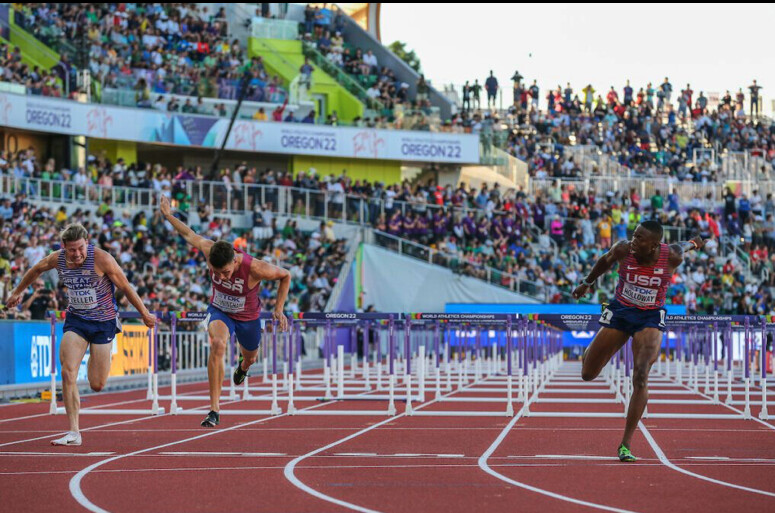
Several athletes took to social media expressing their frustration and disappointment, since they thought they had rightfully earned their spots to compete on the world stage.
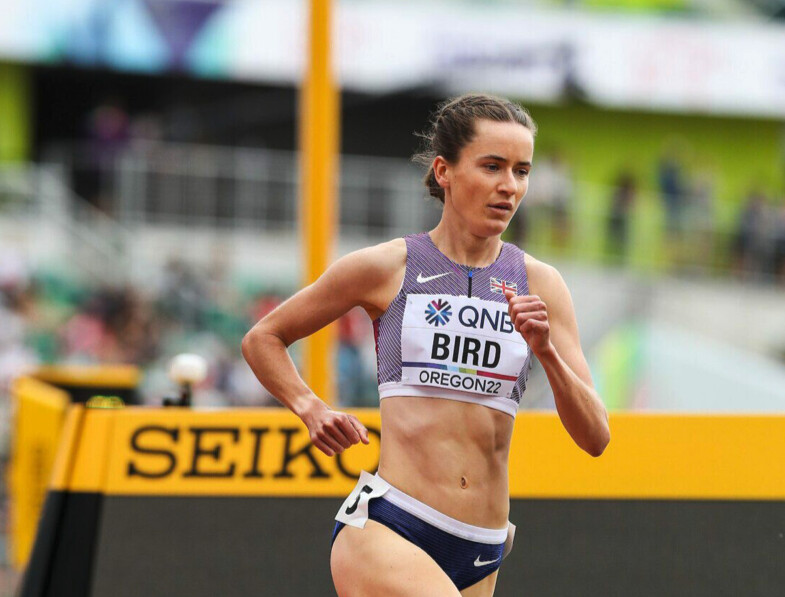
Lina Nielsen, a British 400m hurdler, expressed her frustration with the selection process on Instagram: “To know that I’m deemed good enough to go to the world champs but that my federation will say no is world-shattering,” she wrote. “My heart is heavy. I feel completely cheated by U.K. Athletics.”
Nielsen, ranked 25th in the world this year, is among those who will receive a World Athletics invite based on her world ranking. However, U.K. Athletics plans to reject it, citing her best time this summer as 0.06 seconds outside the automatic qualification standard.
The selection process has also affected British hurdler Joshua Zeller, who finished fifth in the men’s 110m hurdles at the 2022 World Championships in Eugene. Despite reaching the world final last year and being ranked inside the top 30, Zeller’s invitation to the 2023 world championships will be rejected for the same reason.
“I fully comprehend that I did not meet the required criteria set forth, but this situation adds further disappointment,” wrote Zeller on Instagram. “Going from being a world finalist to not even being able to compete in this year’s championships is truly disheartening.”
U.K. Athletics has been transparent that their new selection process emphasizes optimizing medal success and securing top-eight placings at the major championships, rather than sending the highest number of athletes allowed. Zeller and Nielsen stress that this should not come at the cost of denying opportunities to deserving athletes who qualified based on world rankings.
The issue has sparked discussions about the authority and decision-making of national federations, with some athletes even contemplating legal action to challenge UK Athletics’ stance.
(07/29/2023) ⚡AMPby Running Magazine
Netflix to release track and field documentary on world-class sprinters
Netflix is set to launch a new documentary series focused on 100m and 200m sprinters on the Diamond League circuit, featuring some of the world’s most renowned sprinters. According to The Daily Mail, the show will follow the journey of several elite sprinters like world champions Noah Lyles, Fred Kerley and Dina Asher-Smith, providing a behind-the-scenes glimpse into their world of track and field.
The report says the filming for the documentary series is underway, with a camera crew capturing the thrilling moments of the Diamond League and Continental Tour season. The crew was present during the recently concluded London Diamond League, where Lyles ran a 200m world lead of 19.47, adding to the anticipation surrounding the upcoming series.
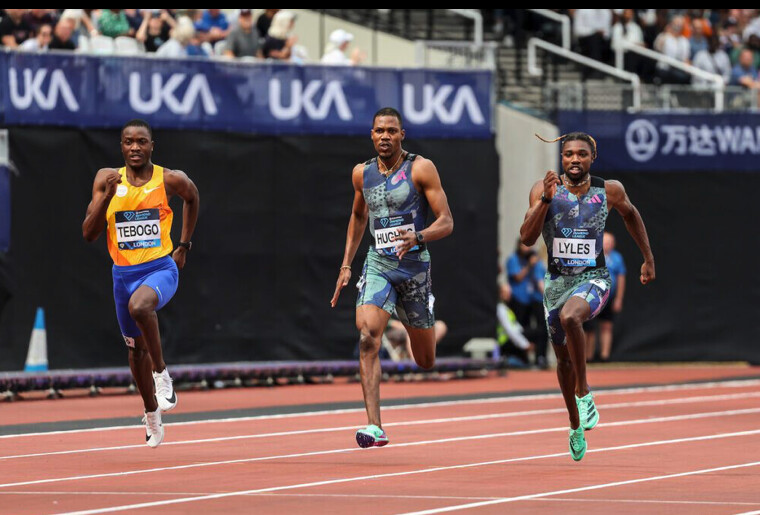
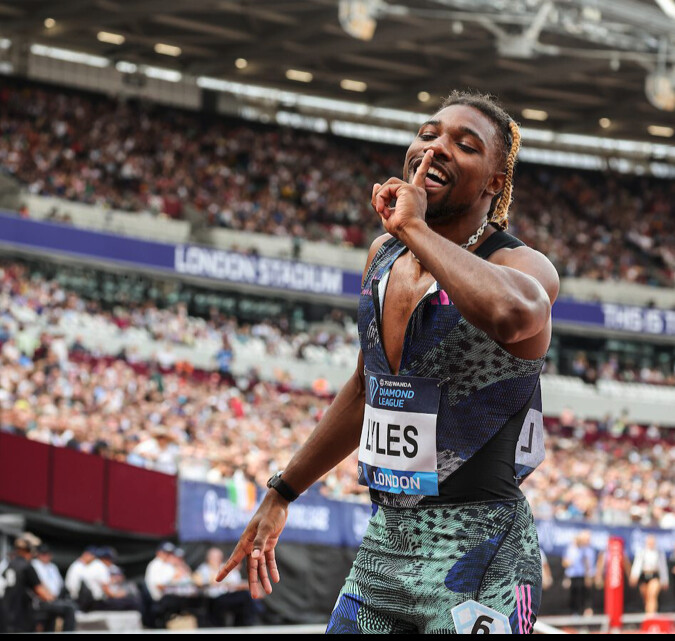
The concept of sports-themed documentaries has gained a lot of popularity, as seen with Netflix’s previous success with Drive To Survive, a captivating series centred around Formula One racing, the golf series Full Swing following golfers on the PGA and Break Point, a doc series that followed the top male and female players in professional tennis. The shows have resonated with existing fans and attracted new audiences to watch the sport. World Athletics has the same hope–that the upcoming series will spark more interest in the sport, outside of the Olympics and World Championships.
Although the title and release date of the docu-series are yet to be unveiled, World Athletics has confirmed the existence of the project. In a statement to Daily Mail Sport, the organization acknowledged the presence of documentary film crews following the sport and its athletes, but keeping the project under wraps for the time being.
Kerley, in particular, has been an advocate for the idea of a Netflix-style series for athletics. In an interview with BBC in May, he expressed his belief that the sport deserves more recognition and attention. Drawing parallels with F1, he emphasized that athletics, too, has events beyond the Olympic Games that could captivate audiences worldwide.
(07/29/2023) ⚡AMPby Running Magazine
Kiwi woman crushes 48-hour treadmill world record
New Zealand’s Emma Timmis has broken the women’s 48-hour treadmill world record after running 340.36 kilometres at a fitness club in Christchurch over the weekend.
With her run, an effort averaging more than seven kilometres an hour, Timmis put a healthy distance between herself and Swedish runner Kristina Paltén, who has held the record since 2014, running 322.93 kilometres.“Well, what a weekend that was!!!! It was everything I expected and more,” Timmis wrote in an Instagram post, in which she shared her motivation for tackling this treadmill world record. “One (reason) was to push my mental strength, and it definitely did!!! I went to some pretty dark places throughout the run, felt it with all my heart and managed to pull myself out of it each time.”
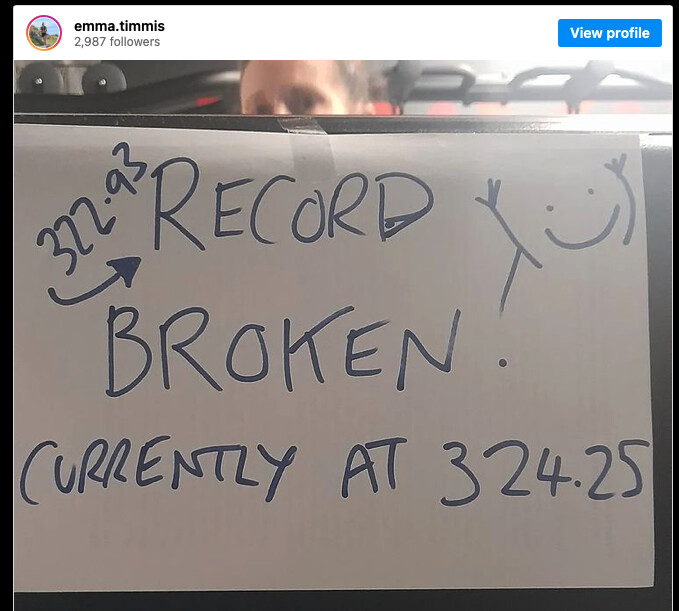
Making Timmis’s feat all the more remarkable was her comment that the 48-hour run was a “practice run” for a much larger challenge she plans on attempting later this year, although she’s keeping details of that “big goal” under wraps for now.Timmis added she “felt 100% loved and cared for every minute of the run. To be able to complete something this huge you have to put full trust in people around you. Each and every person in the event showed me that the trust given was deserved.”
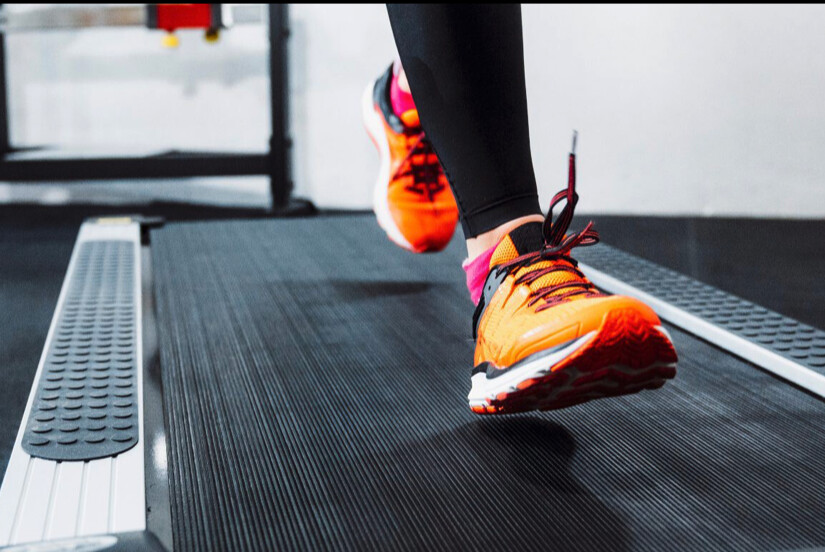
Once ratified, this will be the third Guinness World Record held by Timmis, who is originally from Derby, England, but now lives in the town of Reefton, New Zealand.
In January 2022, she broke the record for the fastest crossing of New Zealand on foot by a female, completing the trek from the northern town of Cape Reinga to the southern town of Bluff in 20 days, 17 hours, 15 minutes and 57 seconds.“Averaging over 100K every day, this run had many, many challenges—it was no walk (run!) in the park,” Timmis said of that run on her website. “I battled extreme heat, heavy, fast traffic, several injuries, one of my support crew being involved in a car accident, and so much more. It takes incredible grit, resilience and determination to achieve something like this.”
In 2017, she set the record for the longest journey by elliptical cycle in a single country, travelling 7,753 km from Denham, Western Australia to Cape Byron in 74 days.
Three years earlier, Timmis completed an 89-day run from the Atlantic Ocean at Henties Bay, Namibia, to the Indian Ocean at Pemba in Mozambique, covering 3,974 km. Her run across southern Africa, which she called “the toughest thing I have done in my life,” was the inspiration for a children’s book, The Girl Who Ran Across Africa, which she published in 2020.
(07/29/2023) ⚡AMPby Running Magazine
Foot strength exercises for speed and stability
Your feet may take a serious pounding when you run, but chances are you (like most runners) neglect foot mobility and care. Spending a few minutes on these stability-builders (do them while you’re watching TV!) will be a game-changer–you’ll have a stronger foundation and prevent future injuries.
If you’ve never done foot mobility or strength before, ease into these exercises and increase or decrease repeats as needed. Incorporate them into your warm up or cool down routine a few times a week, or try a few anytime you’re relaxing on the couch.
Toe curls
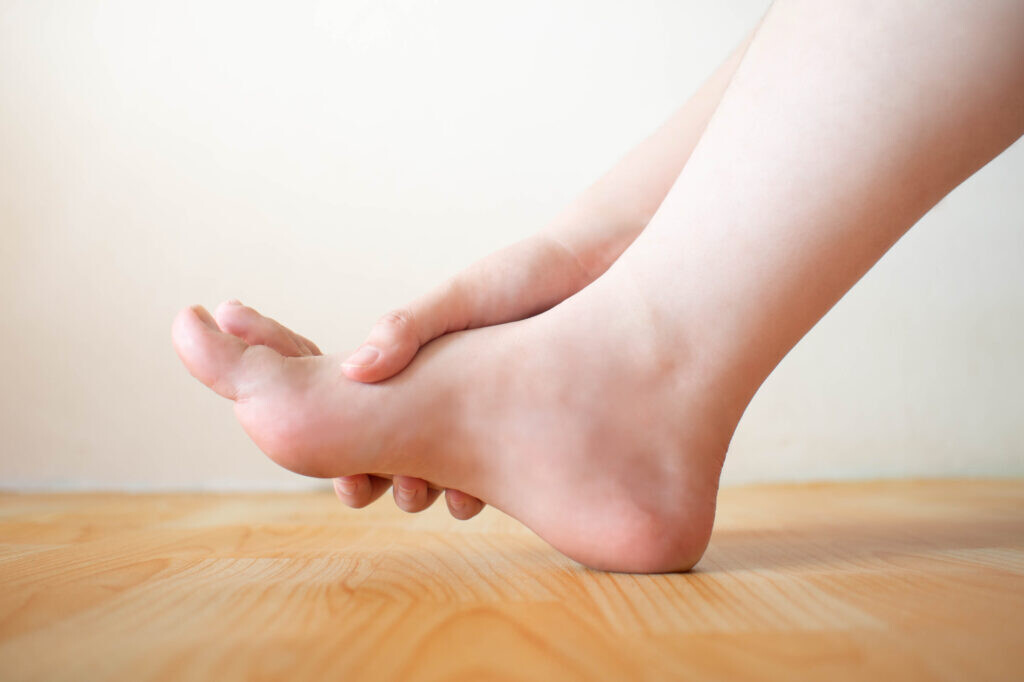
Toe curls strengthen the intrinsic muscles of the feet, essential for maintaining arch support and proper foot mechanics during running.
Sit on a chair with your feet flat on the floor. Curl your toes inward as if you’re grabbing the floor, then release. Do three sets of 15–20 repetitions for each foot.
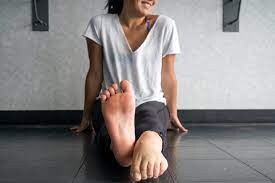
Single-leg balance
Single-leg balance exercises enhance ankle stability and proprioception (your ability to sense where the ground is), essential for maintaining proper form and preventing ankle-related injuries.
Stand in bare feet with hands on the back of a chair or wall for stability, if needed. Rise up onto the ball of one foot, hovering the other foot above the ground if possible (leave your toes touching if you need to, and work up to lifting the leg). Hold for 30 seconds to one minute, and switch to the other leg. Repeat for three sets, build up to five.
Toe spreading
Toe spreading helps improve toe mobility and strengthens the muscles responsible for toe alignment, which can enhance stability during the push-off while running.
Sit or stand with your feet flat on the ground. Spread your toes as wide as possible, then bring them back to a neutral position. Repeat for three sets of 15–20 repetitions.
Towel scrunches
Towel scrunches strengthen the muscles in your toes and on the bottom of your feet, and contribute to better foot stability and proprioception.
Place a small towel on the floor. Stand barefoot, and use your toes to scrunch up the towel toward you. Release and repeat for three sets of 15–20 repetitions.
(07/28/2023) ⚡AMPby Keeley Milne
Courtney Dauwalter to race UTMB this year
The U.S. ultrarunning phenom, hot off her record-breaking finishes at Western States and Hardrock 100, will be looking to best her own course record in Chamonix in September.
Ultrarunning sensation Courtney Dauwalter has announced she’ll be toeing the start line at Ultra Trail du Mont-Blanc (UTMB) in Chamonix, France on Sept. 1, setting the stage for what is sure to be one of this year’s most highly anticipated ultras, following her recent record-breaking wins at the Western States 100-mile Endurance Run and the Hardrock 100.
The 38-year-old shared on social media Friday morning—with an apparent mix of excitement and trepidation—her decision to take on the famed 170-km course, which features 10,000m of vert around the base of Mont Blanc.
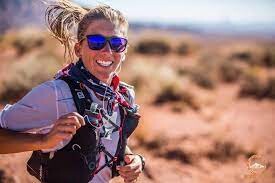
“We decided to do UTMB!” she wrote. “I have no idea how this will go, or what I’ll be able to squeeze out of my body & brain in one more 100 mile race this summer, but that makes it even more interesting to try! Mont Blanc, here we come! Race date: Sept 1”
The big question surrounding the September race will be whether Dauwalter, who holds the UTMB course record following her 22:30:54 finish in the race two years ago, will be able to best herself to claim the championships and course records at Western States, Hardrock and UTMB within a span of less than three months.
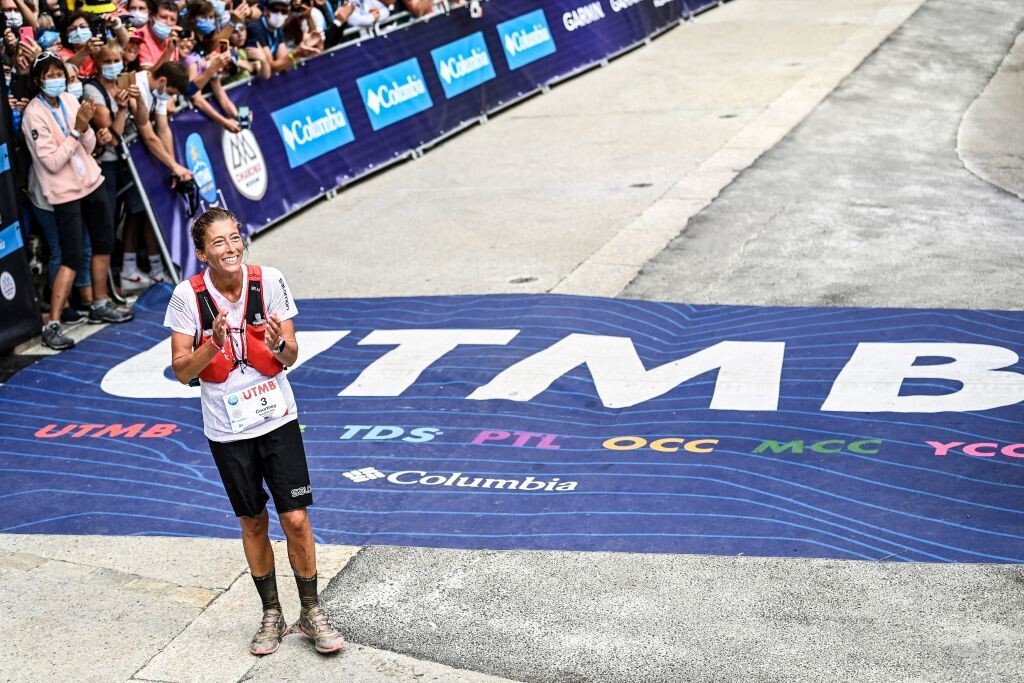
On June 24, Dauwalter not only demolished the Western States women’s course record that had stood for more than a decade (16:47:19 set by Canadian Ellie Greenwood in 2012), but beat most of the men, finishing in 15:29:33 and sixth overall.
Just three weeks later, she turned in another mind-blowing performance at the Hardrock 100 in Silverton, Colo., crossing the finish line in fourth place overall in 26:14:08. Dauwalter’s run was more than an hour faster than the counter-clockwise record set by Diana Finkel of South Fork, Colo., in 2009, and 30 minutes faster than Dauwalter’s own overall women’s course record set last year.
In addition to holding the course records at UTMB, Western States and Hardrock 100, Dauwalter, who is based in Golden, Colo., holds the record at Diagonale des Fous on Reunion Island.
(07/28/2023) ⚡AMP
by Paul Baswick
North Face Ultra Trail du Tour du Mont-Blanc
Mountain race, with numerous passages in high altitude (>2500m), in difficult weather conditions (night, wind, cold, rain or snow), that needs a very good training, adapted equipment and a real capacity of personal autonomy. It is 6:00pm and we are more or less 2300 people sharing the same dream carefully prepared over many months. Despite the incredible difficulty, we feel...
more...Half Marathon specialist Daniel Mateiko is excited to make his debut in this year’s Chicago Marathon
Daniel Mateiko promises to pull a major upset in Chicago Marathon.
Mateiko, who has been competing on both track and the road, has promised a surprise this year despite the presence of top-notch athletes in Chicago this year.
“Yes, this will be my first time to run a marathon, and a major one. This means I have to work extra hard in training to keep up the pace,” he said.
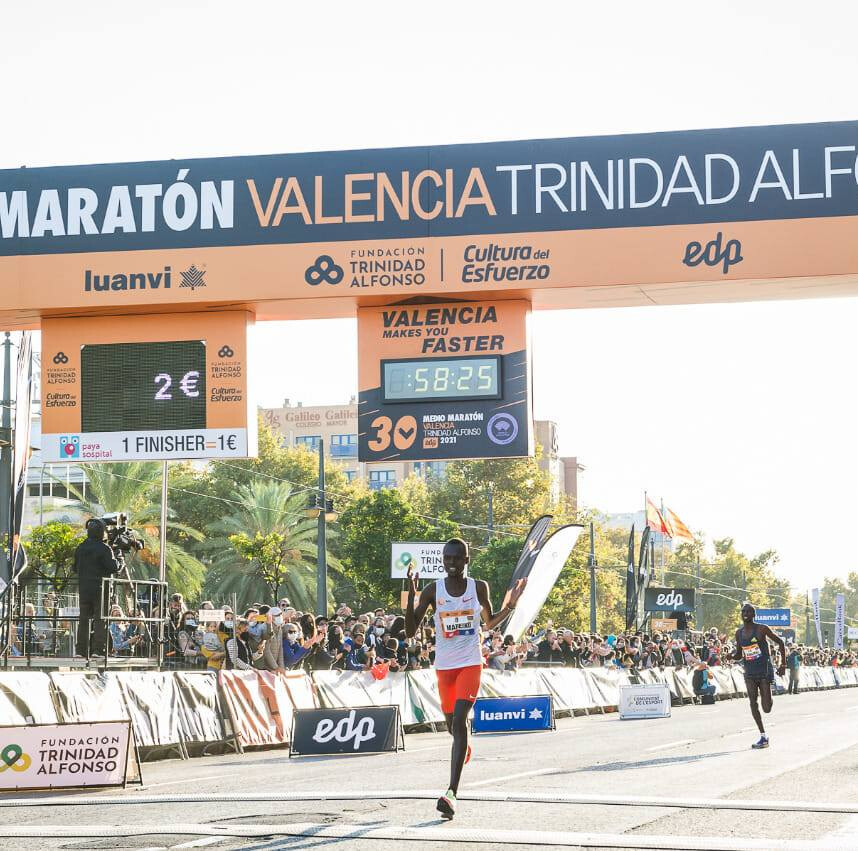
He said he was spotted by Chicago race organisers in London Marathon where he paced Kelvin Kiptum to victory early this year.
"In London, I paced Kiptum to the second-fastest marathon in the world in London and exited at the 30km mark, just 12km to the finish. Some race organizers were amazed at what I did and that is why I am heading to Chicago,” he revealed.
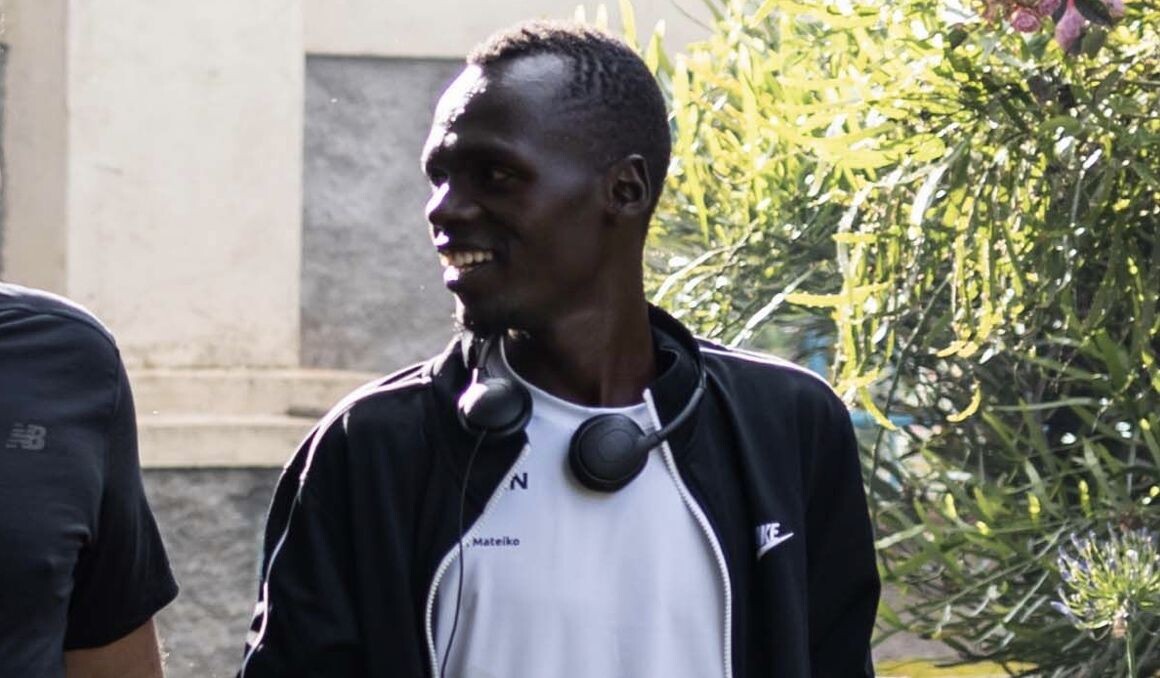
After finishing second in at the Kip Keino Classic last year, he went ahead to finish in position eight in the 10,000m at the World Athletics Championships in Eugene, Oregon.
The inaugural Eldama Ravine Half Marathon champion said he is undergoing intense to post good results in Chicago.
The Ras Al Khaimah Half Marathon silver medalist failed to make Team Kenya for the 2021 Olympic Games after finishing sixth in 10,000m at the national trials.
Mateiko has a personal best time of 58:26 set in the Valencia Half Marathon last year, where he finished third. He finished third in Copenhagen after timing 59:25.
He will be up against defending champion Benson Kipruto, who will be seeking to defend his title after winning last year's race in 2:04:24— the fourth-fastest time ever in Chicago. Should Kipruto win again, he’ll be the first back-to-back men’s open field champion since the late Sammy Wanjiru in 2010. Also in the race are Kenya's John Korir ( 2:05:01) and Wesley Kiptoo (debutant).
Other key names in the field include Belgium's Bashir Abdi (2:03:36), the Ethiopian duo of Dawit Wolde (2:04:27) and Seifu Tura(2:04:29) and United States Galen Rupp (2:06:07) among others.
(07/28/2023) ⚡AMPby Emmanuel Sabuni
Bank of America Chicago
Running the Bank of America Chicago Marathon is the pinnacle of achievement for elite athletes and everyday runners alike. On race day, runners from all 50 states and more than 100 countries will set out to accomplish a personal dream by reaching the finish line in Grant Park. The Bank of America Chicago Marathon is known for its flat and...
more...Defending champions Angela Tanui and Edwin Soi to return to Bogota Half Marathon
Tanui and Soi won last year’s edition of the Half Marathon in style, clocking 1:13:29 and 1:05:27 respectively.
Defending champions Angela Tanui and Edwin Soi will return to Colombia for the Bogota Half Marathon on Sunday, July 30.
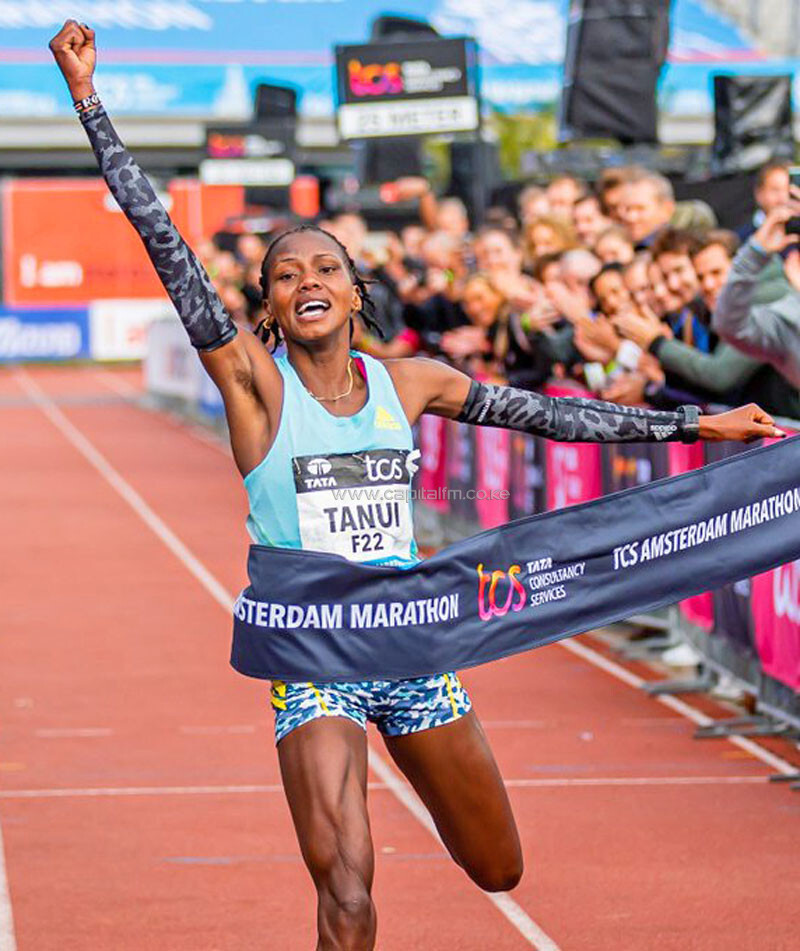
Tanui and Soi won last year’s edition of the Half Marathon in style, clocking 1:13:29 and 1:05:27 in the women’s and men’s races respectively.
Soi is the fastest in the men’s field with a Personal Best time of 1:00:24 and he will be opening his season at the event. He will enjoy the company of compatriot Daniel Muteti who is also among the top entries.
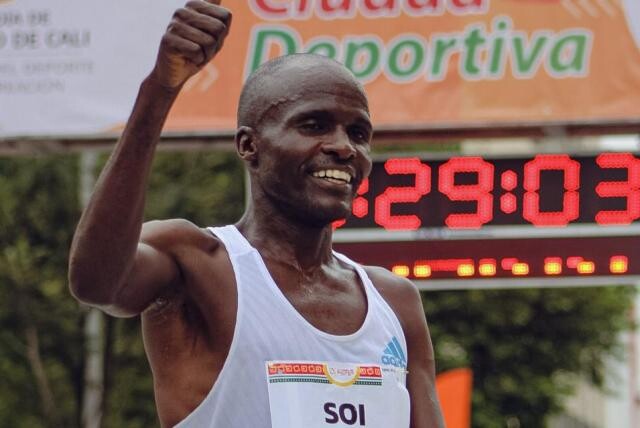
On his part, Muteti will be lining up as the third fastest in the field and so far, this year, he has only participated in two Half Marathons. He opened his season with a 12th-place finish at the Nationale-Nederlanden Warsaw Half Marathon before winning the Cereales Angel Lima Half Marathon.
The Kenyan duo will face a stern test from Morocco’s Omar Ait Chitachen who will be lining up as the second fastest in the field. Chitachen has competed in three races so far. He opened his season with a 16th-place finish at the Osaka Marathon.
He then proceeded to the Xiamen Marathon where he finished third before winning the Rabat Half Marathon.
Another threat will come from Ethiopia’s Sisay Lemma. The 32-year-old Ethiopian has competed in two marathons so far this season. He started off with the Tokyo Marathon which he unfortunately did not finish and then later went for the Prague Marathon where he finished second.
In the women’s field, Tanui will be joined by compatriot Veronica Wanjiru who has also recorded good times over the 21km distance since the season started.
Wanjiru finished fourth and third at the Publix Atlanta Half Marathon and the San Blas Half Marathon respectively.
The Kenyan duo will be up against the Ethiopian duo of Zenebu Fikadu and Anchialem Haymanot who will be looking to give them a run for their money.
(07/28/2023) ⚡AMPby Abigael Wuafula
Bogota Half Marathon
The Bogotá International Half Marathon, or mmB as it is traditionally known, is an annual road running competition over a half marathon distance 21.0975 kilometres (13.1094 mi) taking place in Bogotá, Colombia in late July or early August. Established in 2000, it holds IAAF Gold Label Road Race status, making it the first and thus far only South American race...
more...TD Beach to Beacon 10K founder and Olympic gold medalist Joan Benoit Samuelson offers tips ahead of race
The TD Beach to Beacon 10K is happening on Saturday, August 5,and it's celebrating a major milestone: 25 years. It was founded in 1998 by Olympic gold medalist and Mainer Joan Benoit Samuelson.
The race draws top athletes from around the world to Cape Elizabeth.
TD Bank sponsors the race and, this year, the beneficiary is Valo, a nonprofit organization that offers free programs to help Maine teens with their emotional wellbeing.
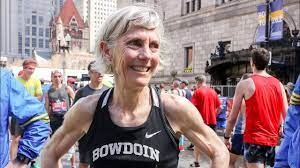
Benoit Samuelson said a diverse mix of people run the race, which makes it even more exciting for all.
"The kids run came along shortly after the 10K, and now the high school mile, which is very competitive, so there is something really for everybody," she explained. "
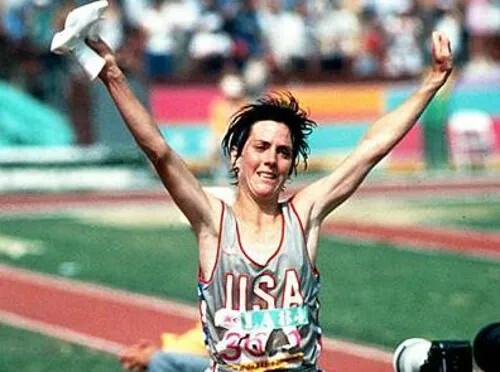
And my favorite part of the race is the fact that we've pulled many runners off the sidelines; those people who have come to cheer the runners on and then asked themselves, 'Do you think I might be able to cover the distance?' and they come out and they cover the distance. And I love being at the finish line for the invited runners, the professional runners, and I like being at the finish line when the stragglers come in, those people who never thought they could do the distance."Race day includes the wheelchair division, elite women, and the general public. The competitive high school mile and the children's 1K race will take place on Friday, August 5, at Fort Williams.
Benoit Samuelson said she founded the race as a way to give back to her community and promote the importance of a healthy lifestyle. This year, more than 6,500 runners and 800 volunteers are expected to participate.Larry Wold is the president for TD Bank in Maine. He is a legacy runner, meaning he has run the race for the past 24 years.
"To be able to run in the same race at the same time with world class athletes, with world record holders, with Olympic gold medalists, and know that you are in the same event they are, [it] has a fun attraction to it," he explained. "We know there are families that have now established sort of family routines around this event."
Wold offered some tips for everyone participating.
"Don't go out too fast. Make sure you are well hydrated, let the crowd bring you along, run a nice steady comfortable pace, and you are going to be great," he said.
Of course, Benoit Samuelson also gave some advice for runners.
"Just make sure your buildup is gradual. Don't try to build room over night. It's important to stay fit at some level throughout the year, and then a lot of people go out and run the course, some people have never gone 10K in training and they hope that they can go the distance after maybe running 3 to 5 mile runs on a regular basis," she said. "Don't try anything new race week, meaning don't change your diet in any significant way and don't try the newest and latest item on the market that might improve your performance. Make sure you have double knots in your shoe laces."
Race day is usually hot and humid, so Benoit Samuelson said to wear at hat and clothes that are light in color.
(07/27/2023) ⚡AMPby Hannah Yechivi
TD Beach to Beacon 10K
Joan Benoit Samuelson, a native of Cape Elizabeth, Maine, won the first-ever women's Marathon at the 1984 Olympics in Los Angeles and is founder and chair of the TD Bank Beach to Beacon 10K. "A long time dream of mine has been realized" says Samuelson. "I've always wanted to create a race that brings runners to some of my most...
more...How new runners can add speed and ramp up confidence
As a newer runner, adding speedwork can be intimidating. It shouldn’t be–speedwork is an essential addition to your weekly mileage, and adding a little oomph to an occasional workout will boost your confidence and have you ready to try other new-to-you style training techniques in the future. You can try these speed sessions on road, trails, track or treadmill.
Before you start incorporating short speed sessions into your training, make sure you have been running for at least six months and are injury-free. Here are two simple workouts to get your legs used to moving quickly. With time and added strength, increase repeats or lengthen intervals.
Short speedy intervals

Don’t let this workout scare you away–if it seems like too much, simply shorten the intervals so that they seem manageable. 30 seconds fast with a one-minute recovery is fine. If you feel like you need to walk during your recovery, it’s perfectly OK to do so. Don’t worry about your pace during intervals, simply go by effort. You’ll probably be pleasantly surprised at how well you do, and how soon you can increase your repeats.
The workout:
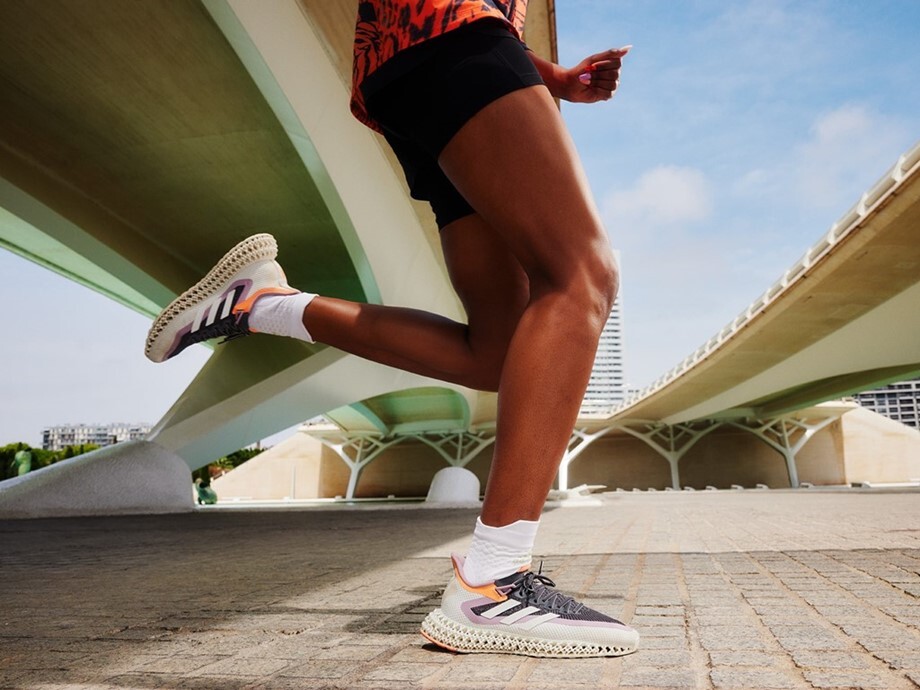
Warm up with 10 minutes’ easy running
Five to eight repeats of one minute hard, followed by two minutes’ easy running or walking to recover
Cool down with five to 10 minutes’ easy running
Strides
Strides can be tacked on to the end of any easy run and are a fun, efficient way to begin adding speed. If you’ve never tried strides before, don’t worry: it’s hard to go wrong.
Start your strides by going easy, focusing on a short, quick stride, and then gradually increase your speed by lengthening your stride. Focus on staying relaxed and running smoothly. It should feel like a controlled faster pace, not a sprint.
The workout:
Easy run (approx. 30 minutes)
Four to five strides of 15 to 30 seconds each, 45 seconds rest in between
Recovery goes hand-in-hand with speedwork for all runners, from beginners to seasoned veterans. In these beginner speed workouts, the recovery intervals are longer in duration than the hard intervals. As you build strength, cut down recovery time to make the workouts more challenging. Take a very easy recovery running or rest day following any speedwork.
(07/27/2023) ⚡AMPby Keeley Milne
Don’t tell me what’s impossible – Tom Evans confirms UTMB is up next
Tom Evans has announced that he will run at this year’s Ultra Trail du Mont Blanc (UTMB) after a late alteration to his 2023 plans.
The British runner claimed a “dream” victory at Western States last month to add to his “super fun” Ultra-Trail Snowdonia win in May and second place at Black Canyons 100K in February.
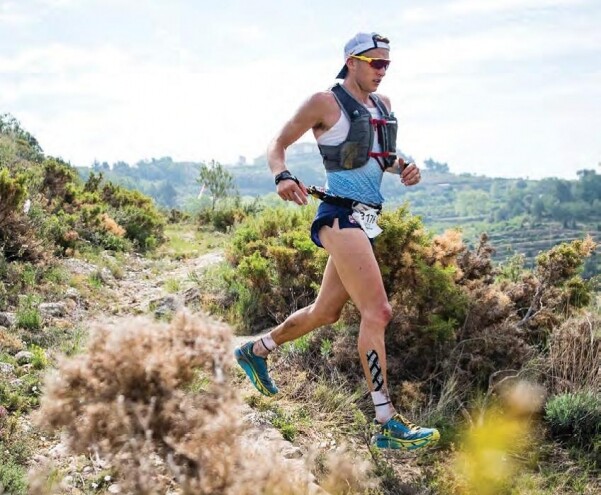
Evans crowned his return from knee surgery to finish third behind Kilian Jornet at last year’s UTMB, but had not scheduled in the iconic Chamonix race for 2023.
Western States recovery
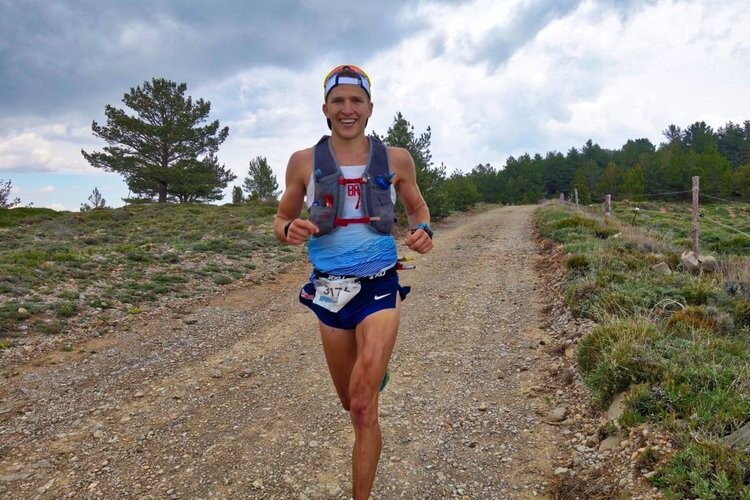
His race calendar for this year, which he shared on Instagram in January, included a Fastest Known Time (FKT) attempt of the Bob Graham Round in September, but there was no mention of UTMB following Western States.
However, after his dominant win in California’s Sierra Nevada Mountains, a defiant Evans suggested that UTMB could still be on the cards.
“If I recover well from this, I’ll race UTMB this year,” Evans said at the end of adidas TERREX’s documentary on his Western States win.
“People have said it’s impossible to do. Don’t tell me what’s impossible or not.
Irresistible challenge
Over the next three weeks, Evans’ recovery clearly went to plan and yesterday he revealed that he was unable to resist the allure of UTMB, which takes place next month.
“Couldn’t resist the chance to make more memories like this,” he wrote on Instagram. “See you in Chamonix!
“Next up… UTMB.
“The Western States 100 / UTMB double is something that has always interested me. It wasn’t on my original plan but things have to change with how you’re feeling!
“And now, I can’t wait for the challenge!”
(07/27/2023) ⚡AMPby Olly Green
North Face Ultra Trail du Tour du Mont-Blanc
Mountain race, with numerous passages in high altitude (>2500m), in difficult weather conditions (night, wind, cold, rain or snow), that needs a very good training, adapted equipment and a real capacity of personal autonomy. It is 6:00pm and we are more or less 2300 people sharing the same dream carefully prepared over many months. Despite the incredible difficulty, we feel...
more...Study shows risk of sudden cardiac arrest from exercise is low among older adults
Every so often, you hear a tragic story about someone who collapsed from cardiac arrest while out for a run, or while racing a marathon. Often their running habit will be called into question, with speculators asking whether they were simply running too much. This can be unsettling, but a new study from the Cedars-Sinai Medical Center in Los Angeles on older adults concluded that sports-related sudden cardiac arrest is exceedingly rare.
The study

Researchers analyzed data on sudden cardiac arrests that occurred in people age 65 and older and found that of the 4,078 total sudden cardiac arrests they studied, only 77 occurred during or following exercise, such as running, cycling, going to the gym or playing golf or tennis. That means only 1.9 per cent occurred during or after a bout of exercise.
The researchers also analyzed medical records for 47 of the 77 people who experienced sudden cardiac arrest during or after exercise, as well as the records for 3,162 people who experienced non-exercise-related sudden cardiac arrest. Perhaps not surprisingly, those who experienced sports-related sudden cardiac arrest had fewer cardiovascular risk factors than the others.

The sports-related group was also four times more likely to survive than the non-sports-related group, partly because they typically experienced sudden cardiac arrest in a more public location (assuming they were exercising outside, at a fitness facility, and/or with other people), and so were able to get help faster.
The takeaways
The researchers point out that in rare cases, exercise can trigger an irregular heart rhythm that could lead to sudden cardiac arrest, but this generally shouldn’t dissuade people from exercising. Exercise is one of the most heart-healthy activities you can do, and while there are risks, the potential benefits are far greater.
“The annual incidence of sports-related sudden cardiac arrest among older adults is extremely rare,” said Sumeet S. Chugh, senior author of the study. “This means older people who regularly participate in sports should continue.”
Chugh adds that those who wish to begin a new exercise regime, particularly older adults, should talk to their doctor first to ensure they can do so safely. Of course, if you are exercising and you start experiencing any new symptoms, you should consult your doctor.
As always, if you’re starting a new running program, you should take it slow and build your mileage gradually, no matter how old you are. Not only will this ensure you can exercise safely, but it will also help prevent injuries that could slow or even stop your progress entirely.
(07/27/2023) ⚡AMPby Brittany Hambleton
Usain Bolt kicks off 2024 Olympic torch relay in Paris
On Tuesday, under the Eiffel Tower in Paris, Jamaican sprinting legend Usain Bolt helped kick off the Olympic torch relay ceremony, unveiling the torch and marking 365 days until the start of the 2024 Olympic Games.
The world record holder in the men’s 100m, 200m, and 4x100m events, Bolt proudly hoisted the torch high into the air, captivating the audience with his signature lightning-bolt pose. The sight of the world’s fastest man with the symbolic torch filled the air with excitement as thousands of Parisians turned up in anticipation of the upcoming games.

“I’m happy to be here,” said Bolt, the retired sprinter. “Paris has always been a city that I enjoyed competing and hanging out in. I’m excited for the Olympics next year. I’ll be here with my family.”
During the ceremony, Bolt unveiled the Olympic torch alongside Paris Mayor Anne Hidalgo and Paris 2024 chief Tony Estanguet. The eight-time Olympic champion was paraded through the cheering crowd of spectators, waving French flags, as he unveiled and carried the torch around.
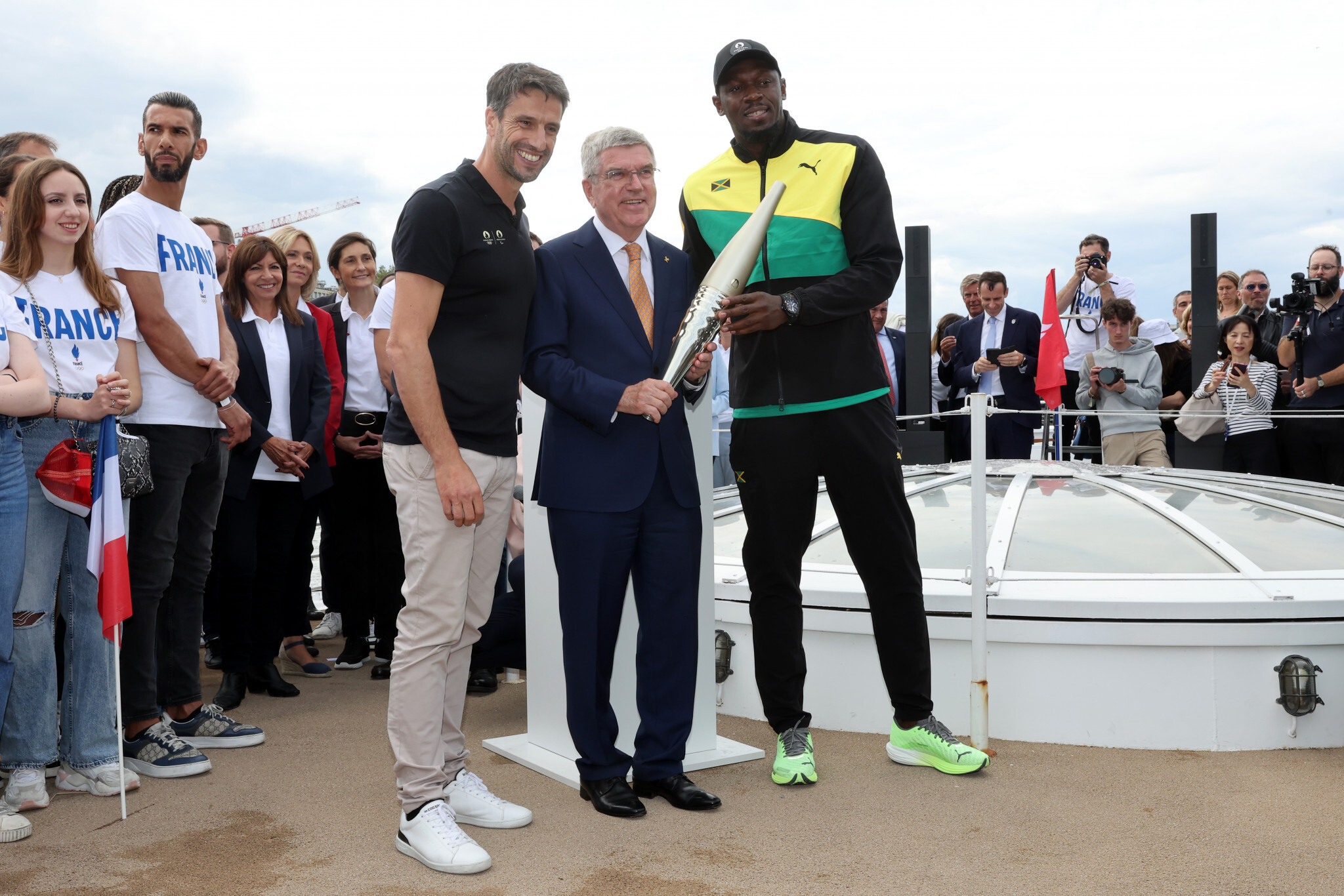
The opening ceremony of the 2024 Olympics is scheduled for July 26, 2024, and it will be the first Olympic ceremony in history to take place outside the traditional stadium setting, on boats, along the picturesque River Seine in front of an audience of over half a million spectators. The unveiling took place on the banks of the iconic river, which also inspired the design of the torch.
“I think it’s gonna be one of the best, if not the best, opening ceremony,” said Bolt to reporters. “Imagine everybody standing outside, across the bridges cheering people up. It’s never been done before…”
The torch, crafted with lightweight polished steel and a champagne hue, boasts a remarkable design imitating the reflection of the Eiffel Tower on the rippled surface of the Seine. This creative touch aims to convey a sense of peaceful energy, reflecting the spirit of Paris and the Games.
The Olympic flame will be ignited on April 16, 2024, in the ancient city of Olympia, Greece, the birthplace of the Games, symbolizing the beginning of the torch’s journey to Paris. The torch relay will pass through various French cities and landmarks, including the Pantheon in Paris and the picturesque Mont Saint-Michel, before the torch is passed to some of France’s overseas territories.
(07/26/2023) ⚡AMPby Running Magazine
Paris 2024 Olympic Games
For this historic event, the City of Light is thinking big! Visitors will be able to watch events at top sporting venues in Paris and the Paris region, as well as at emblematic monuments in the capital visited by several millions of tourists each year. The promise of exceptional moments to experience in an exceptional setting! A great way to...
more...

